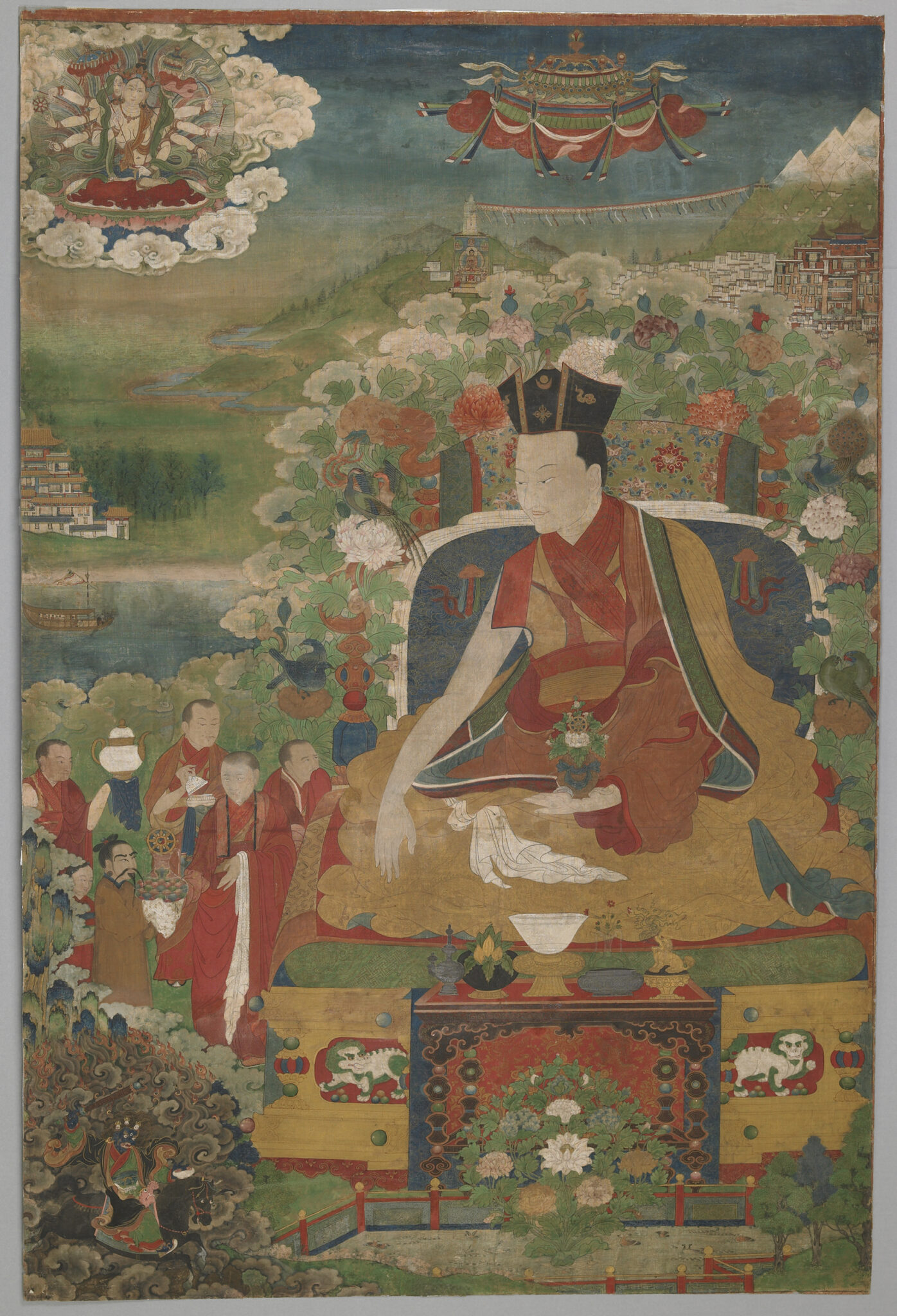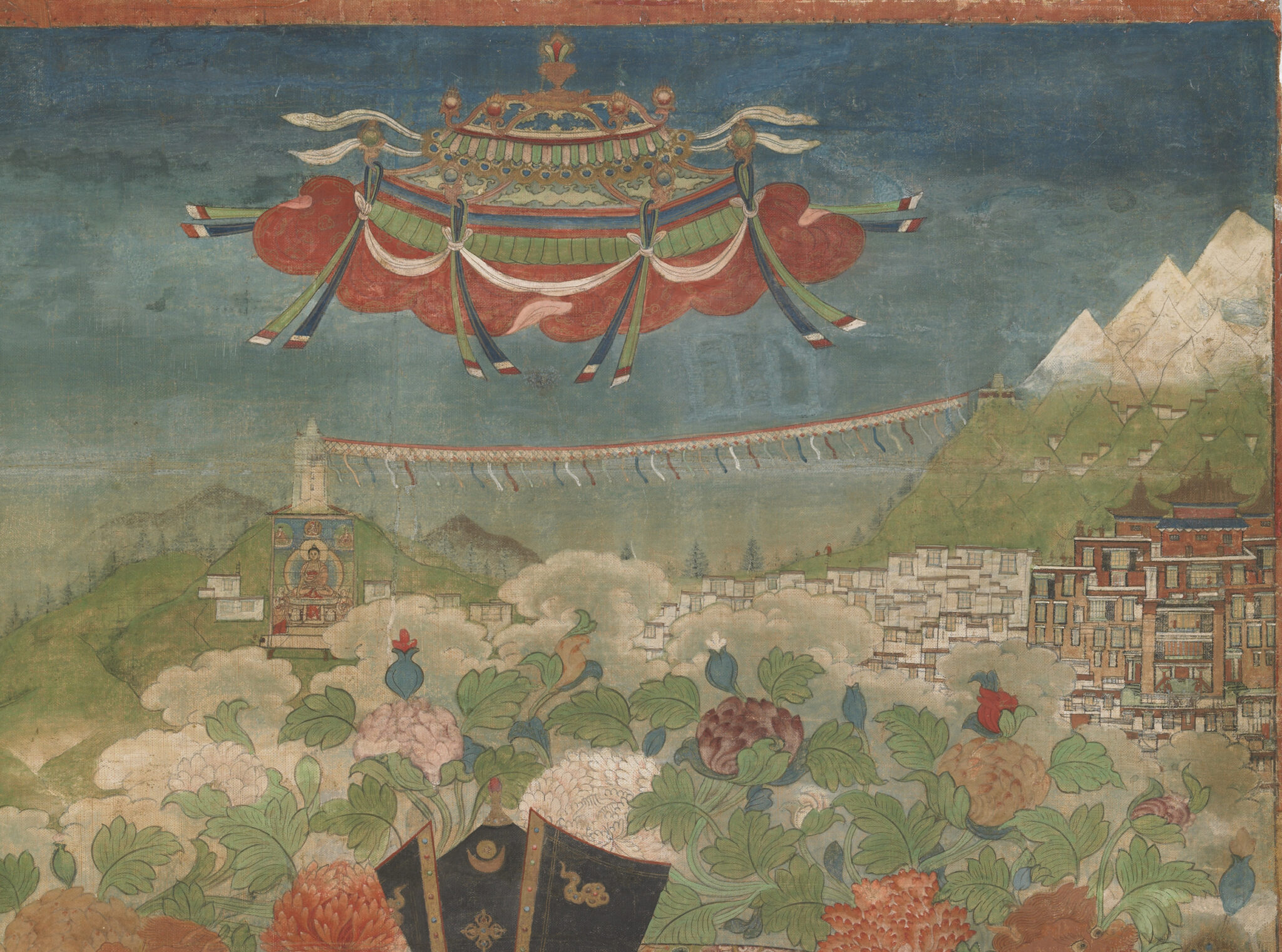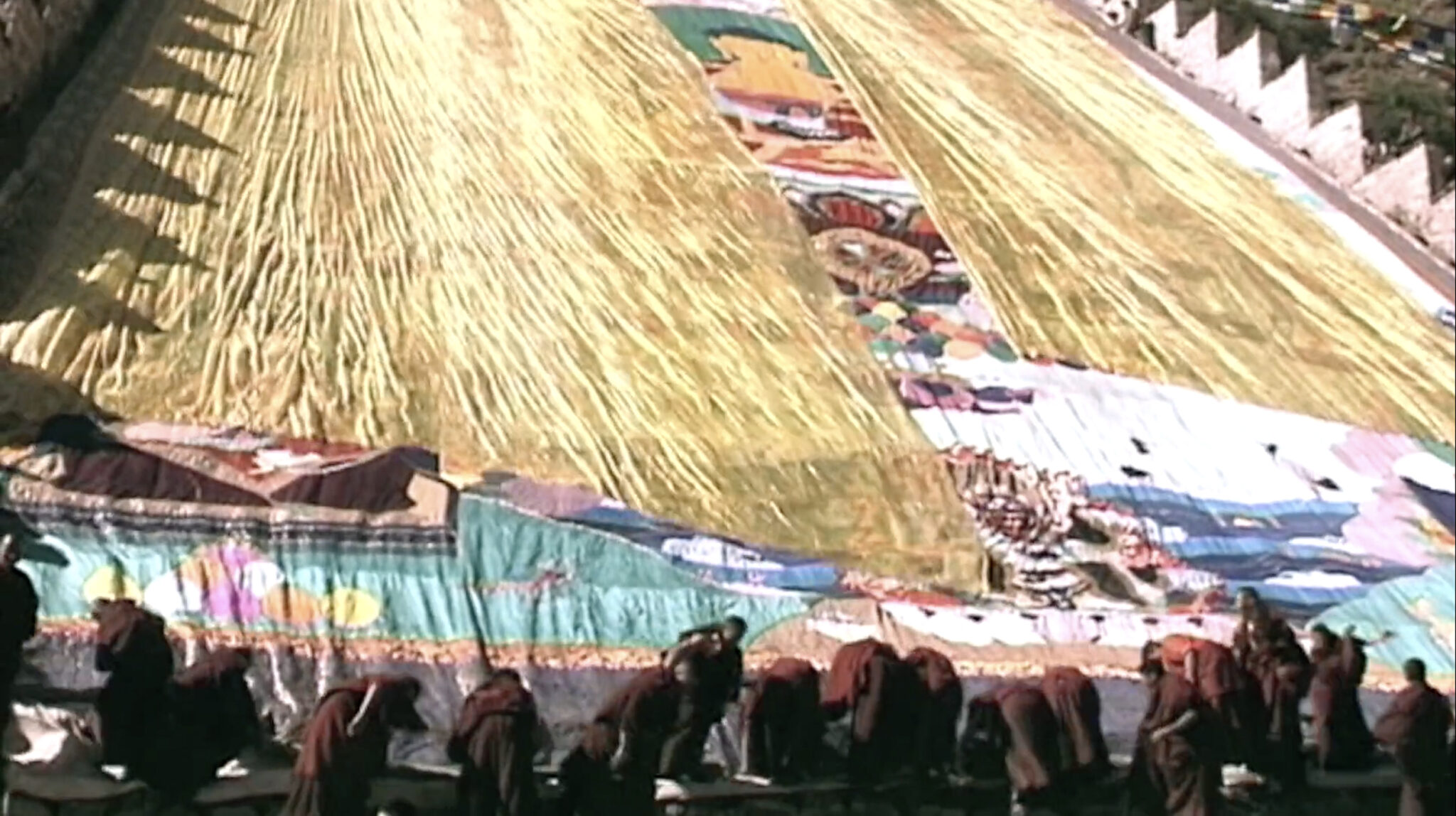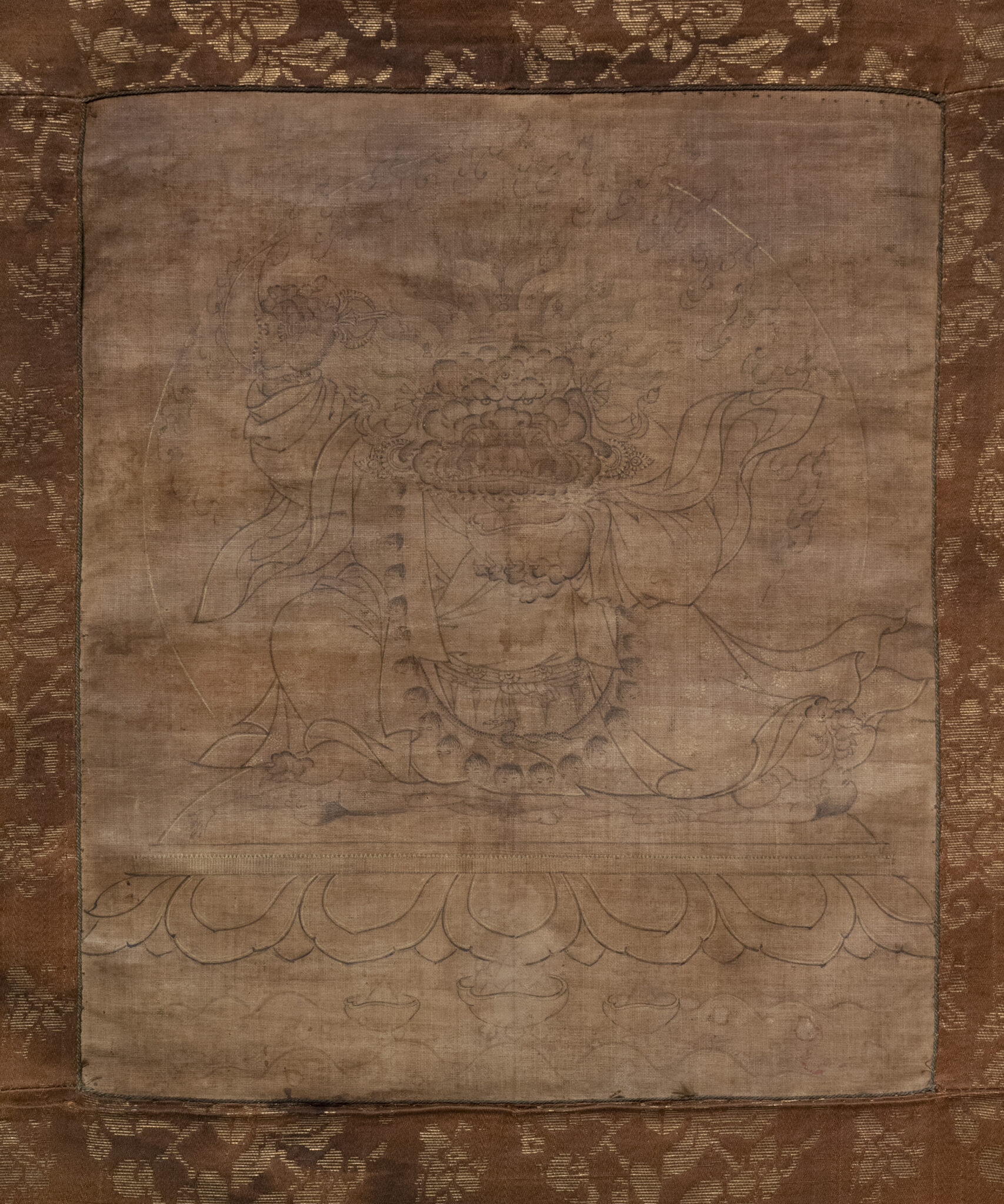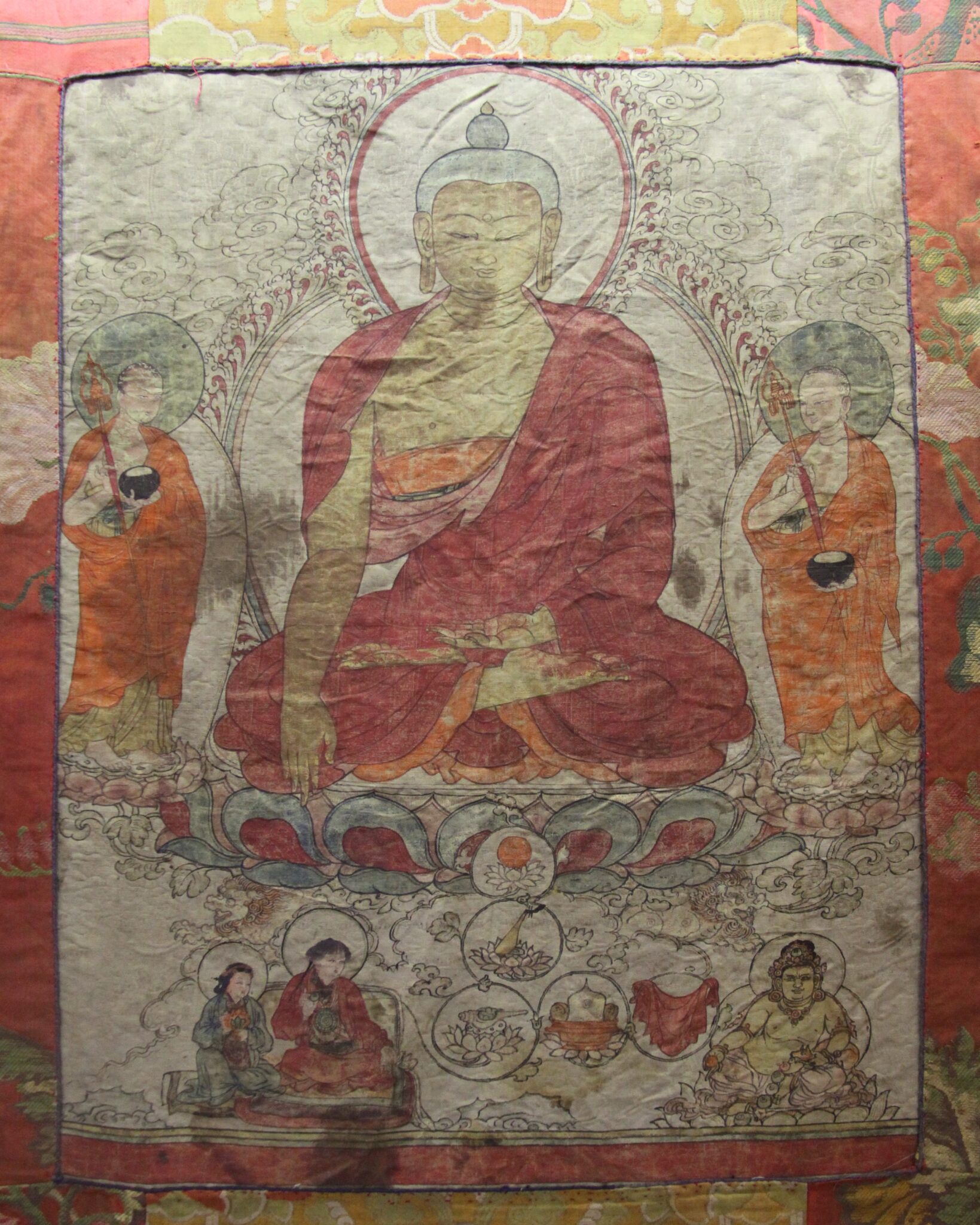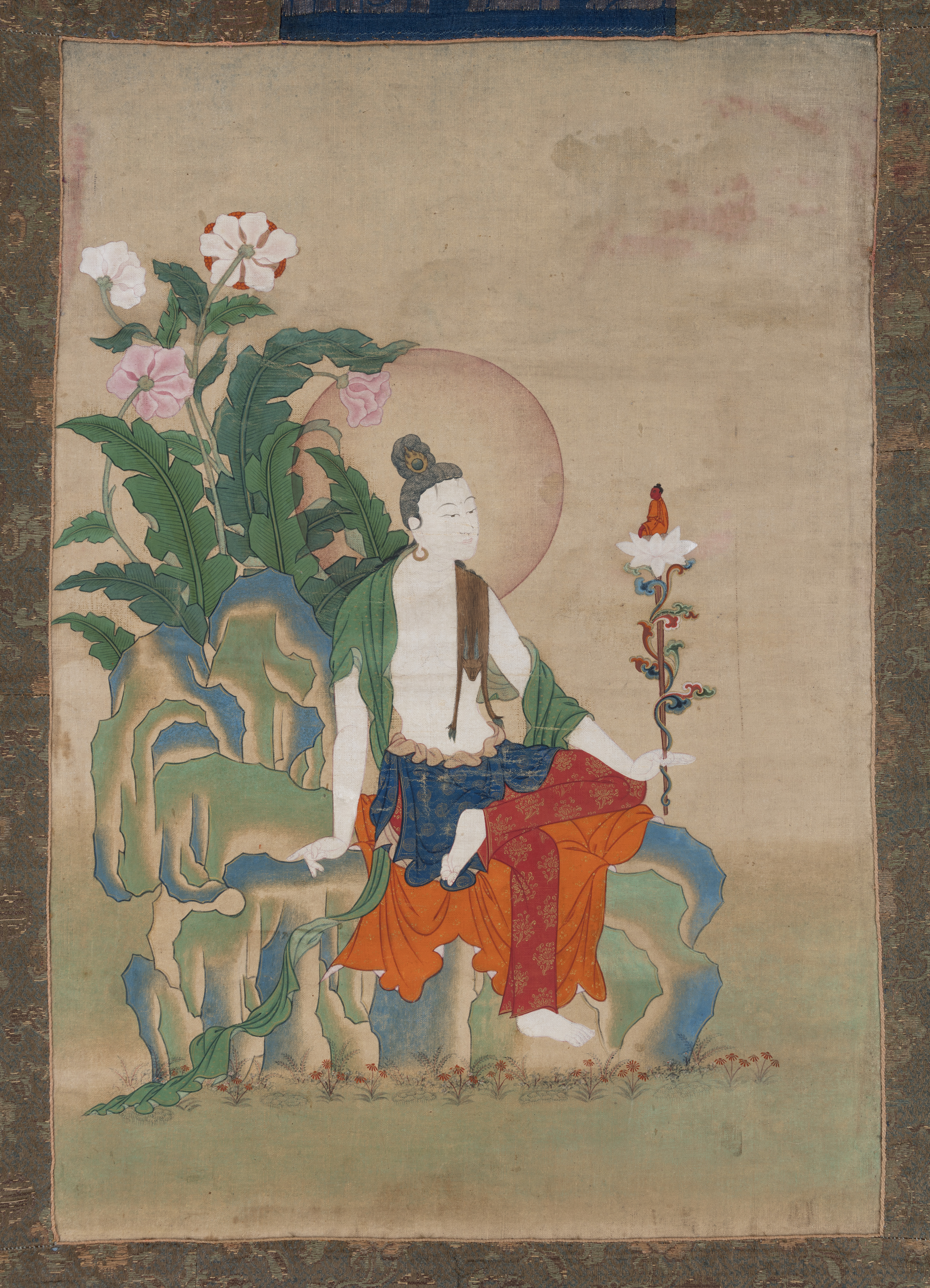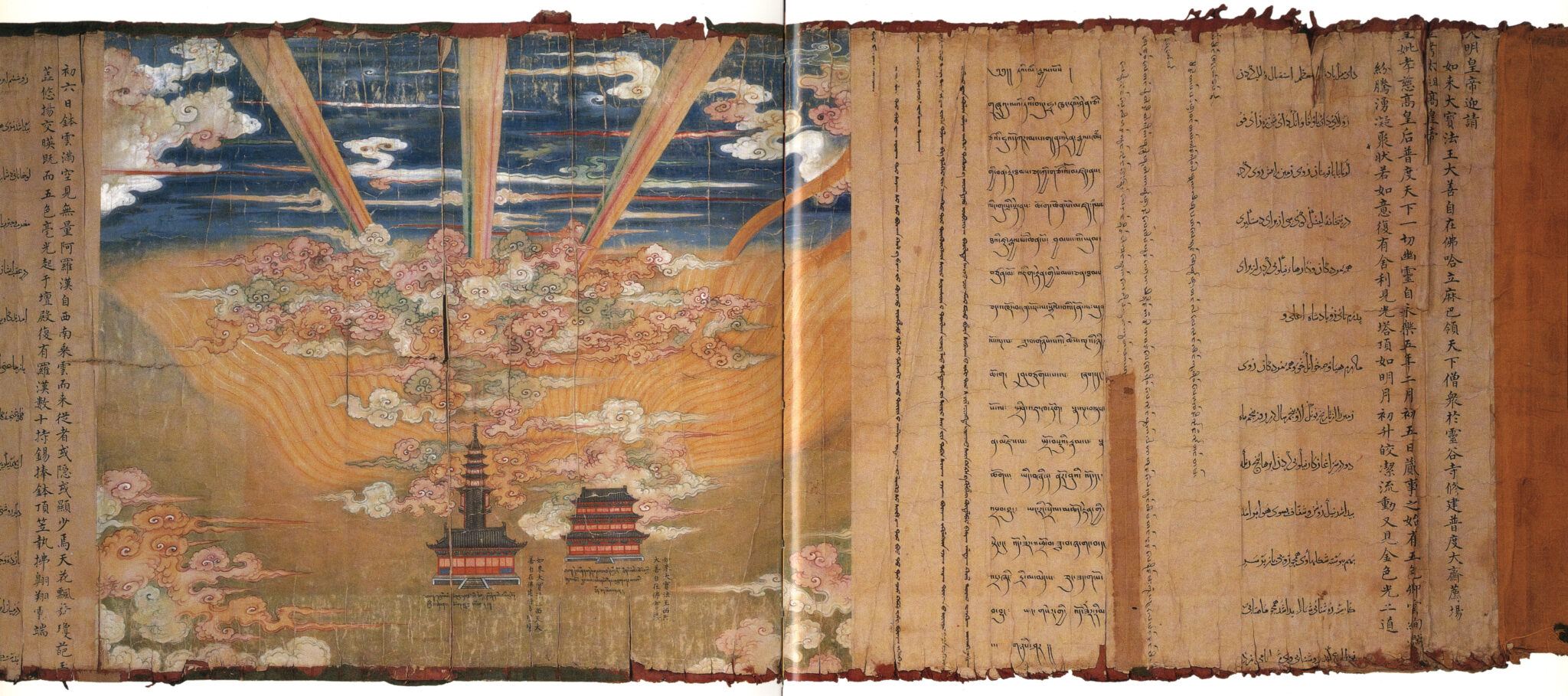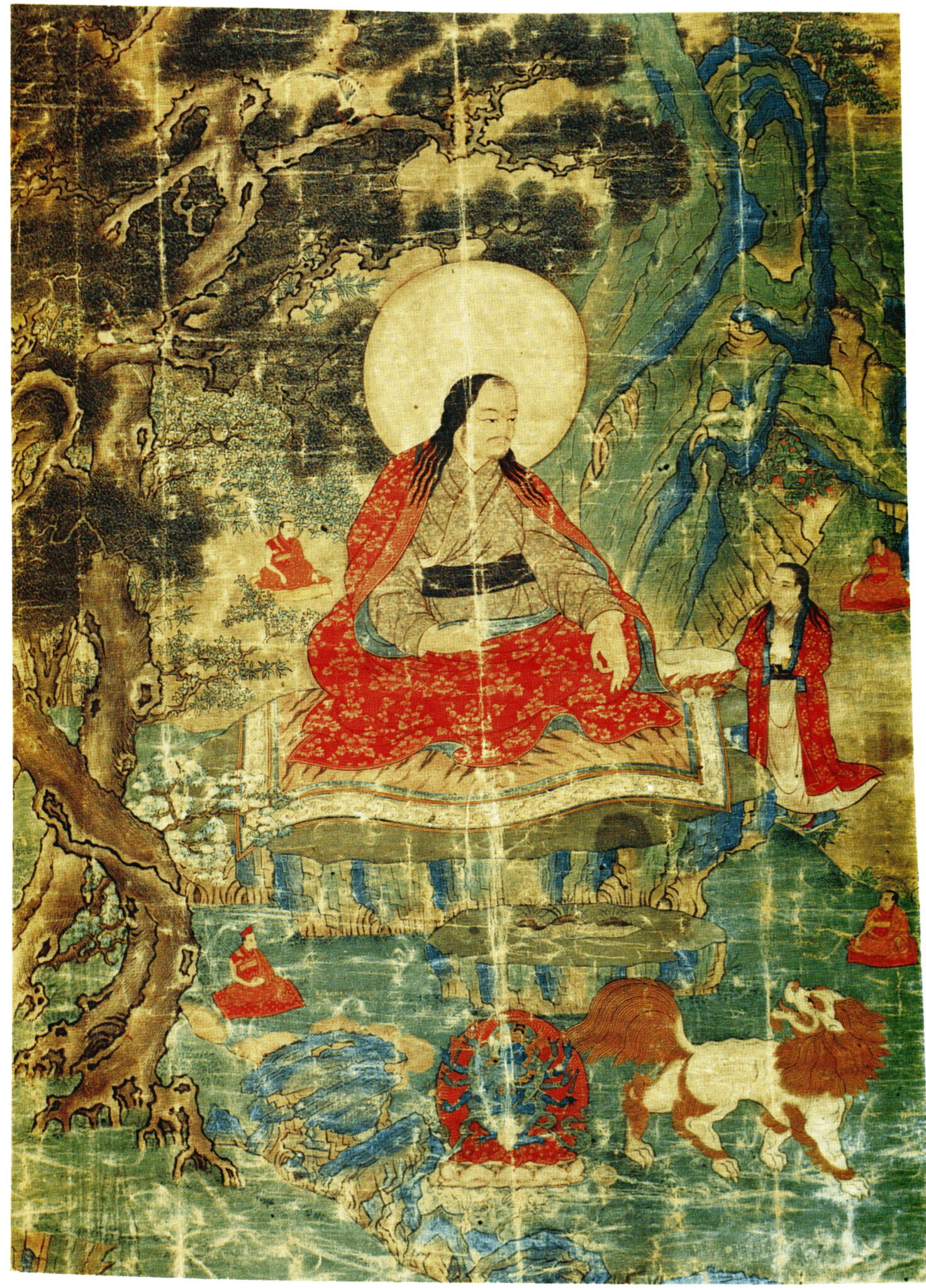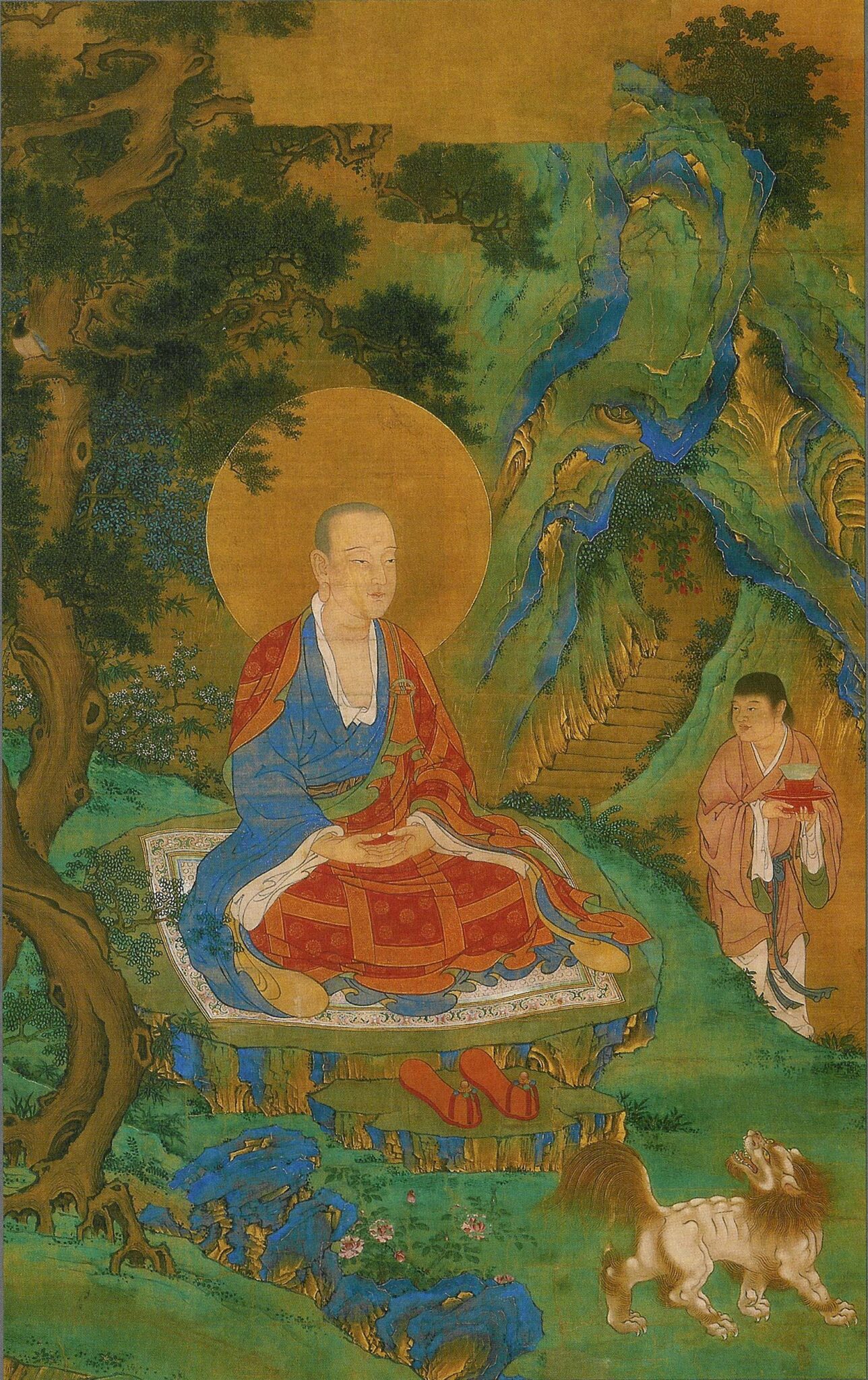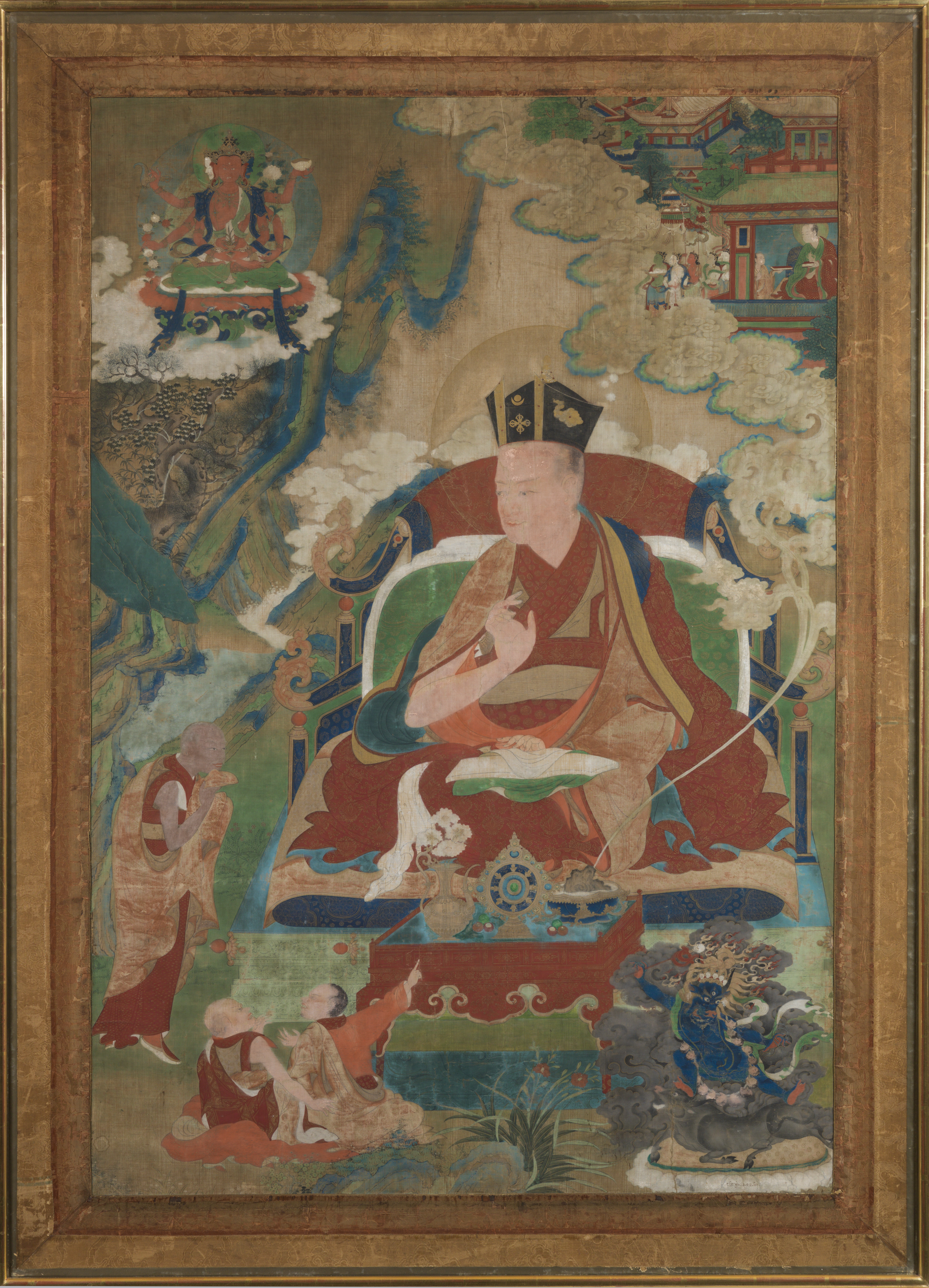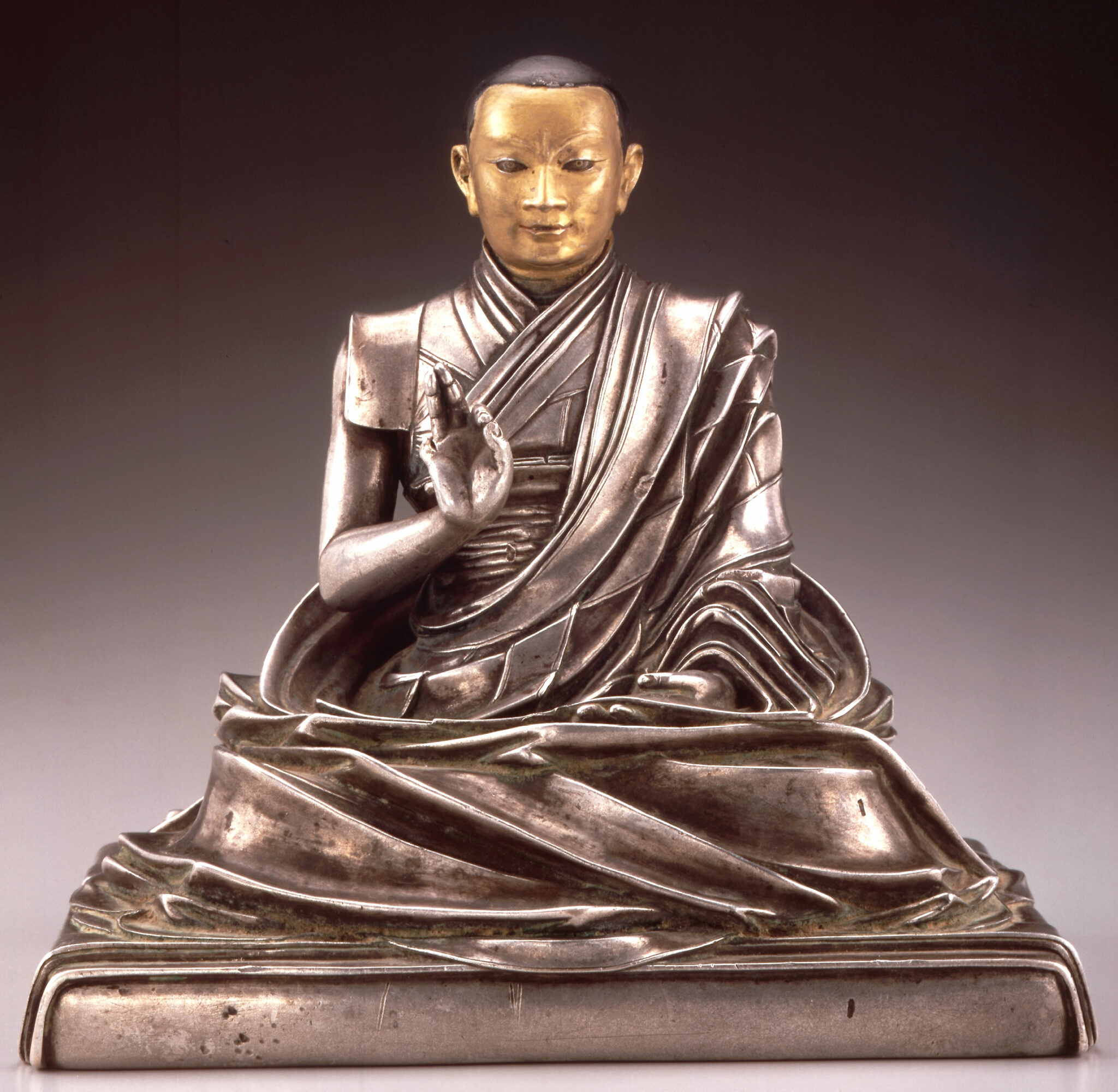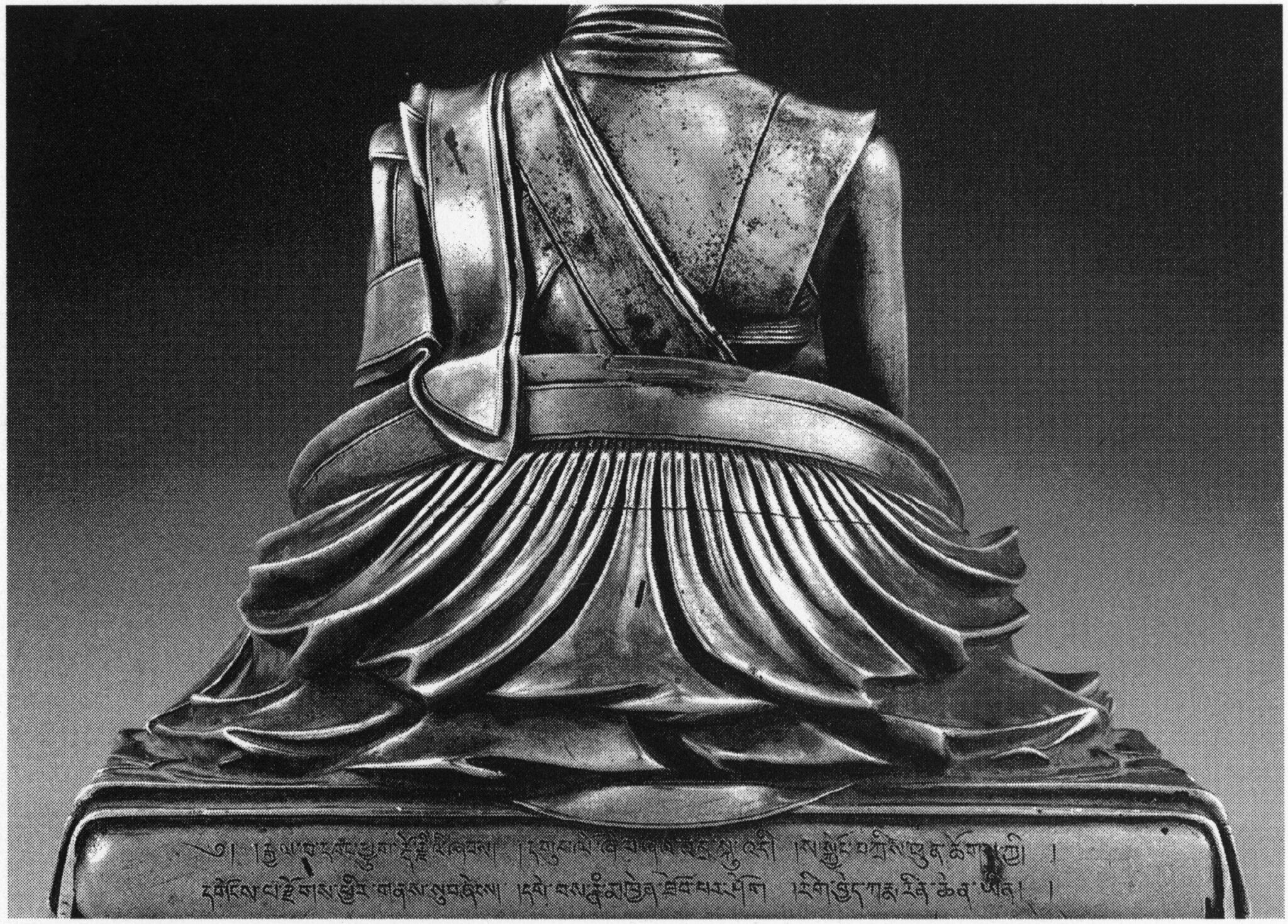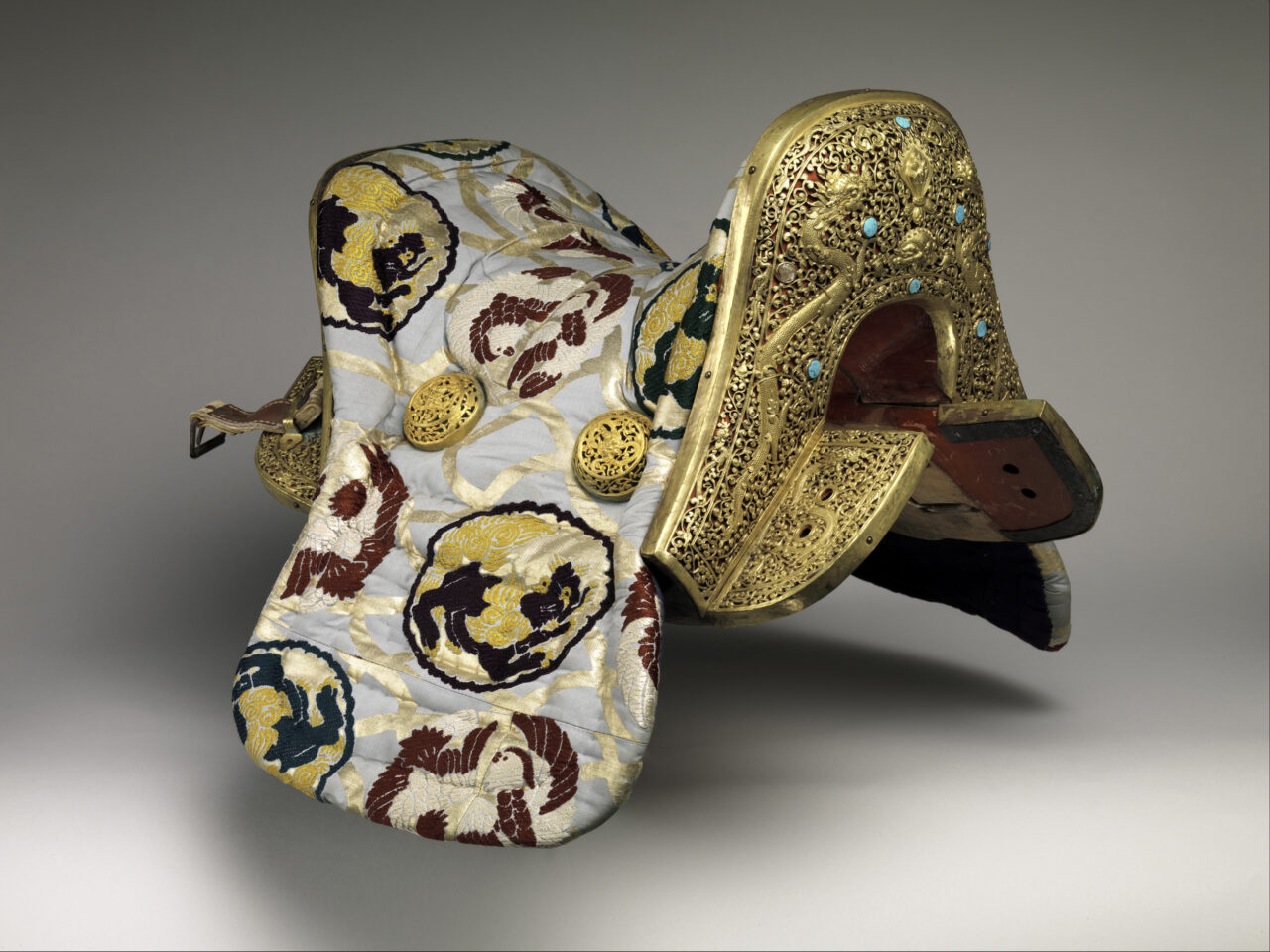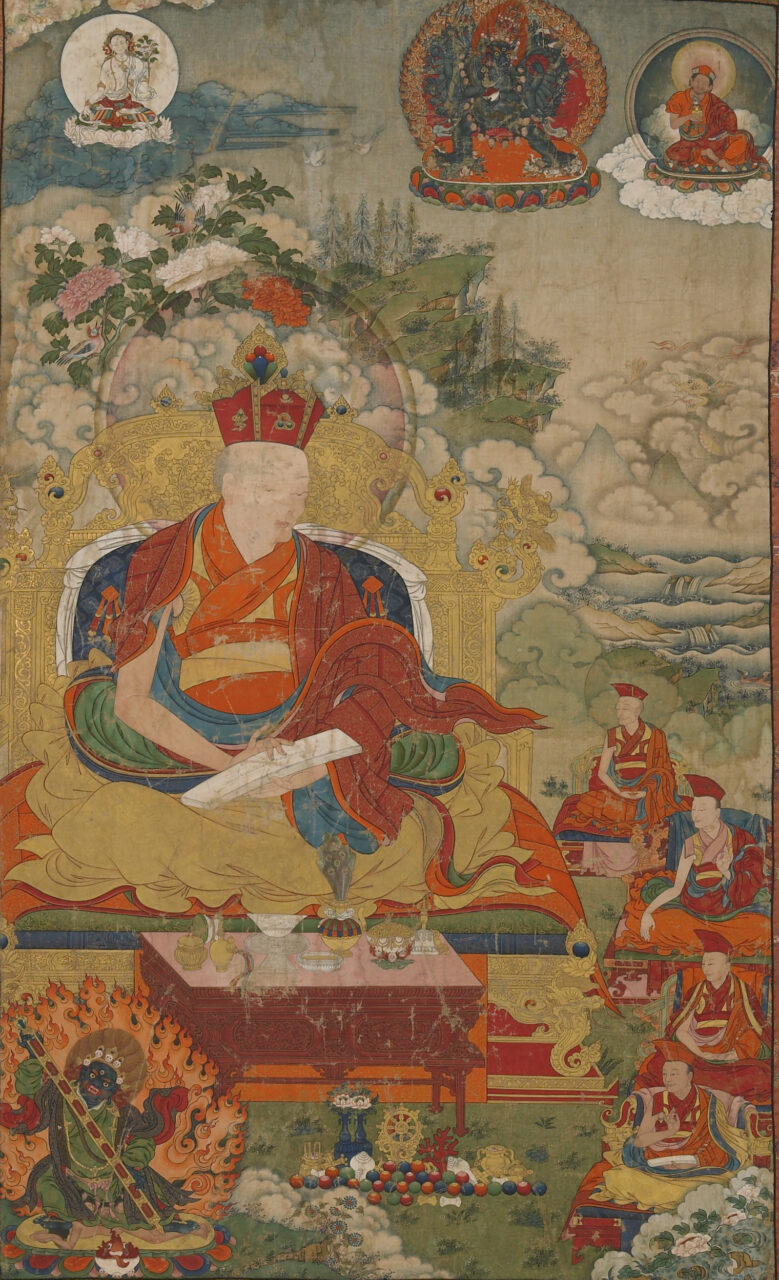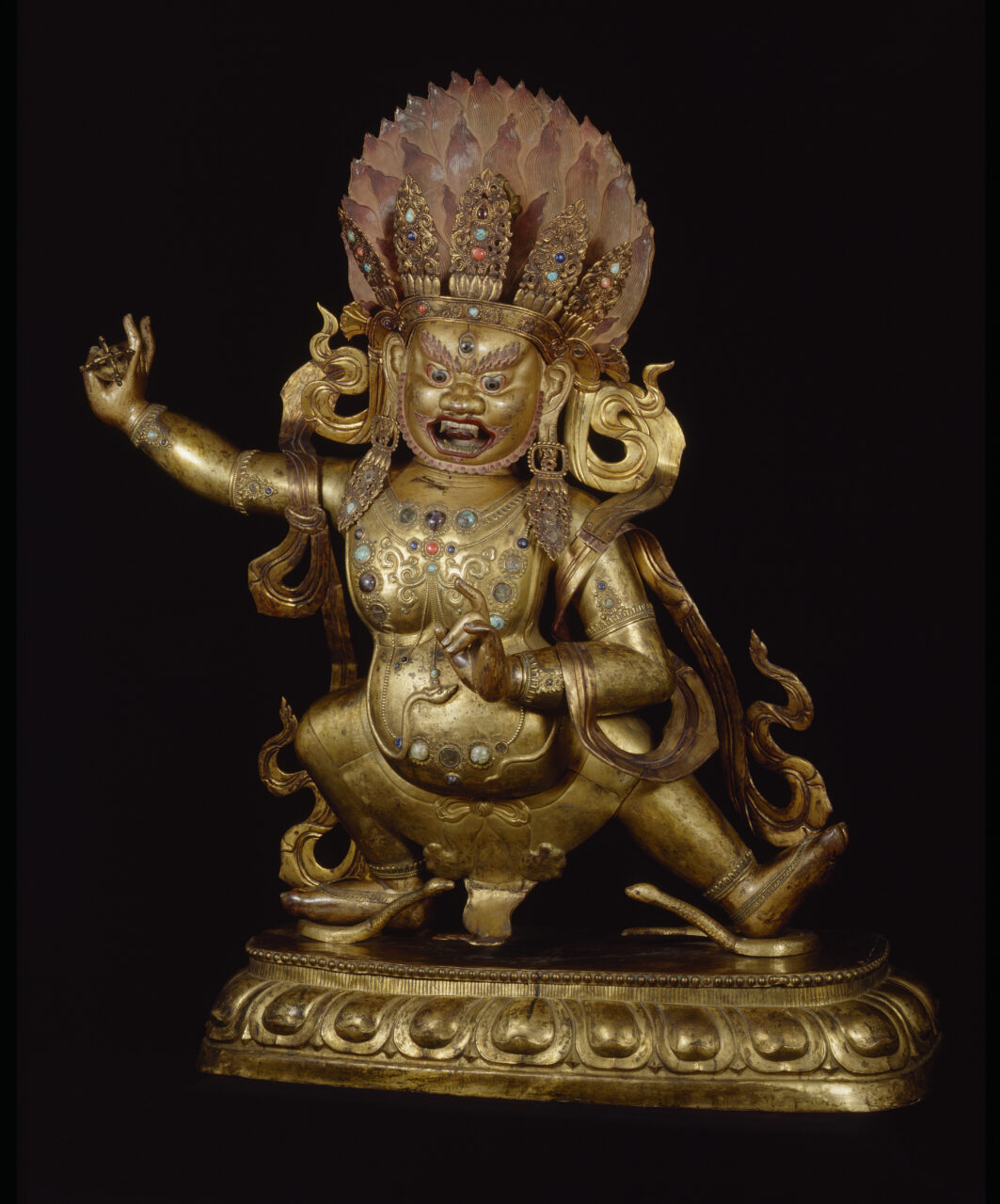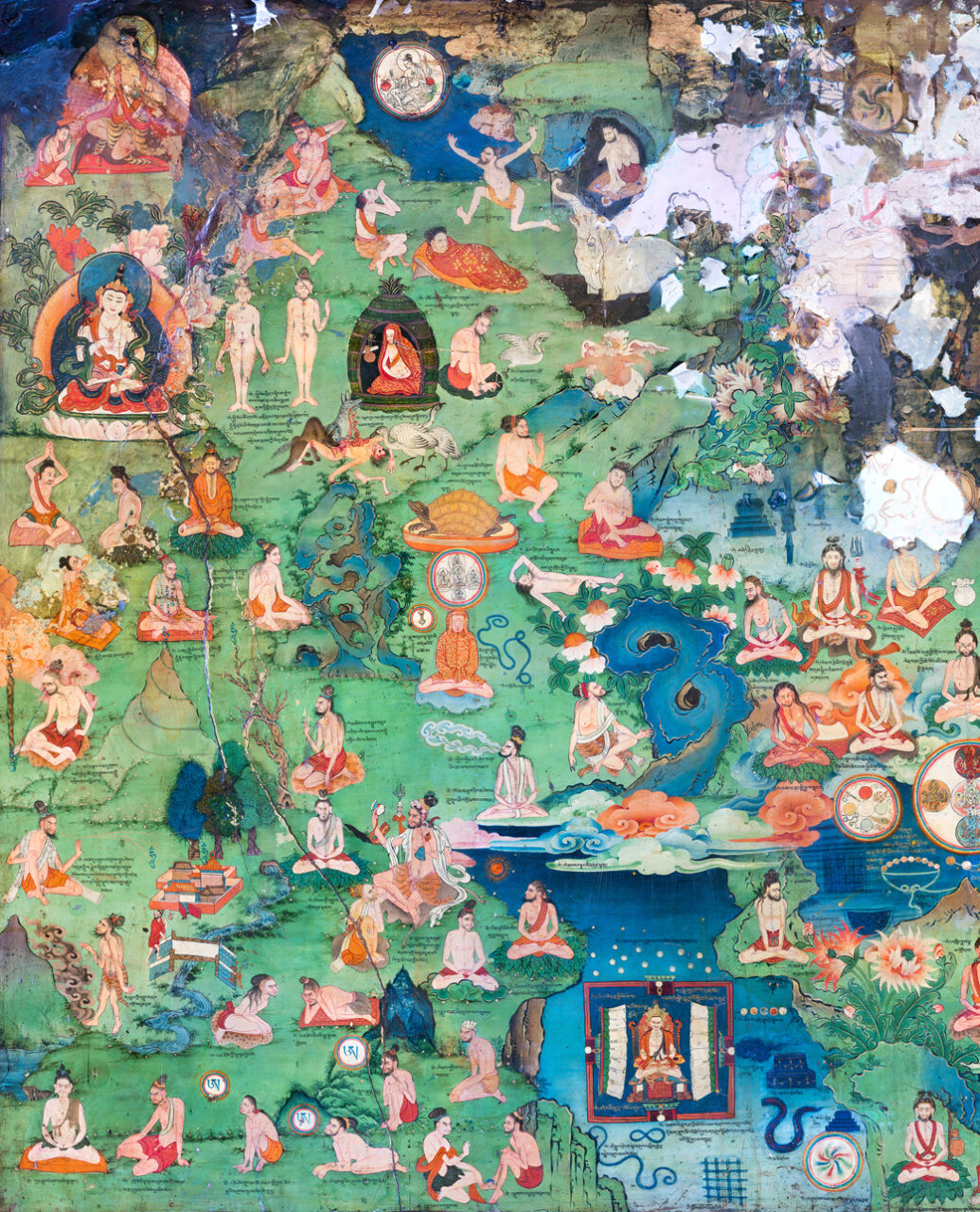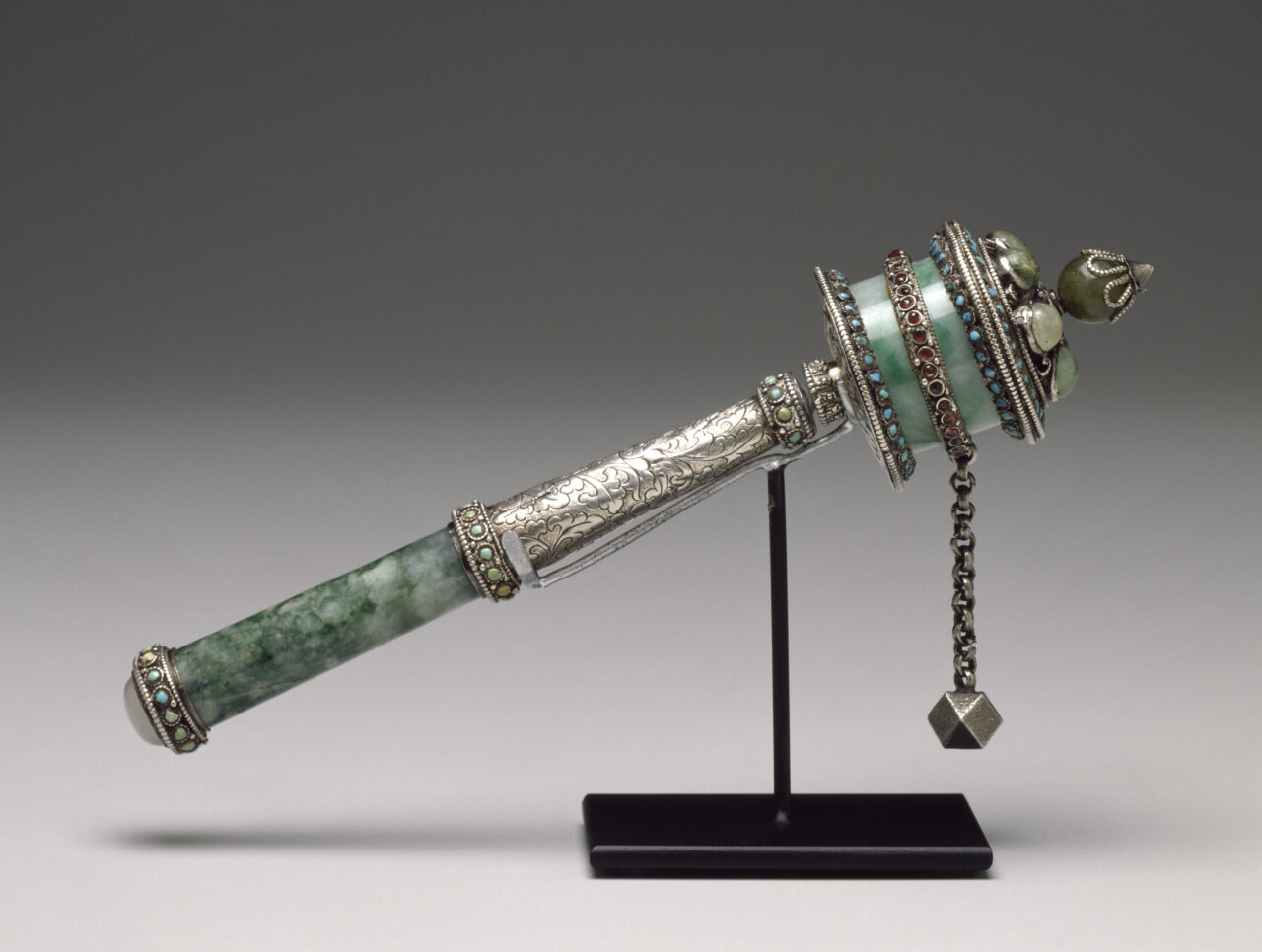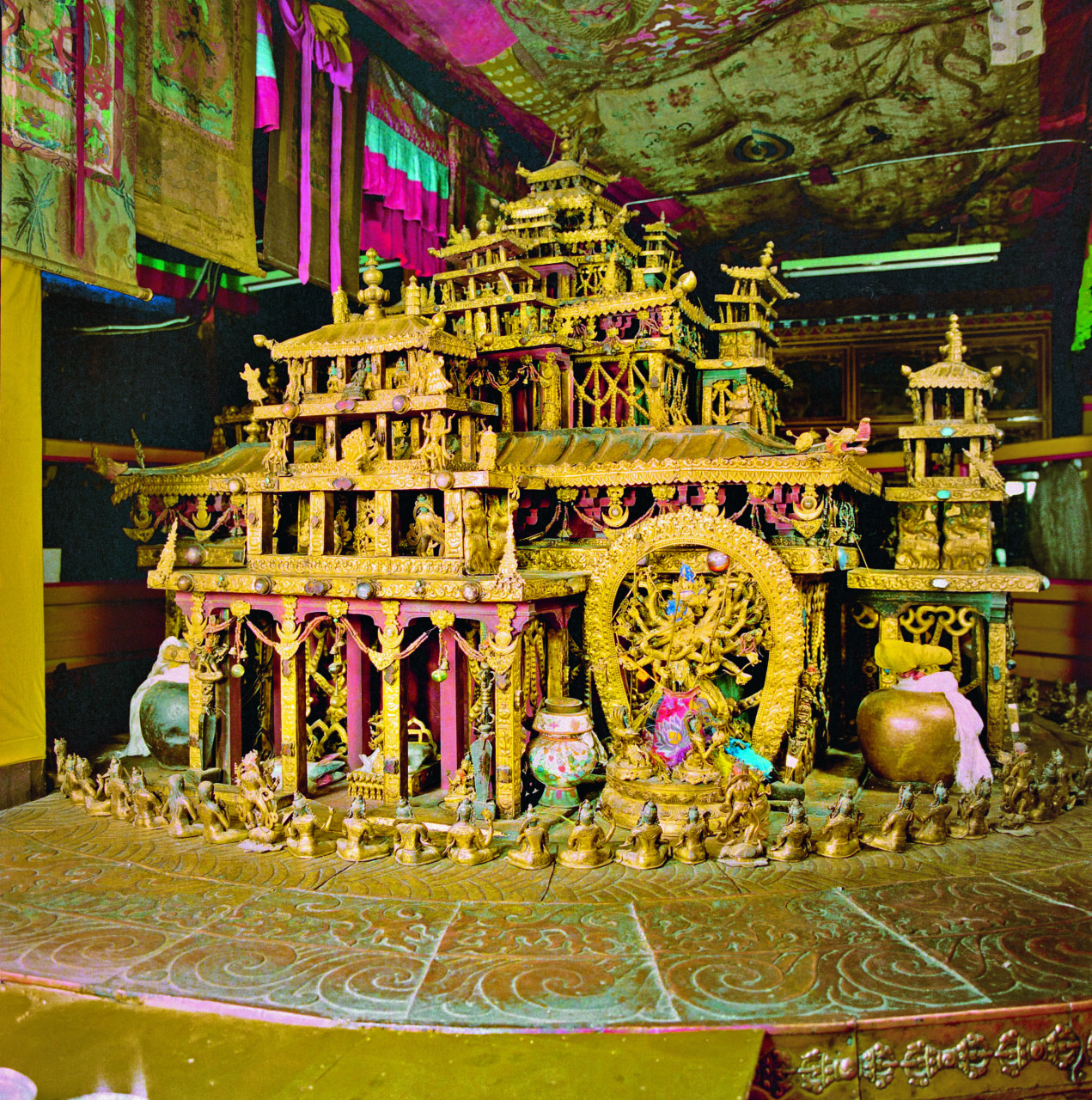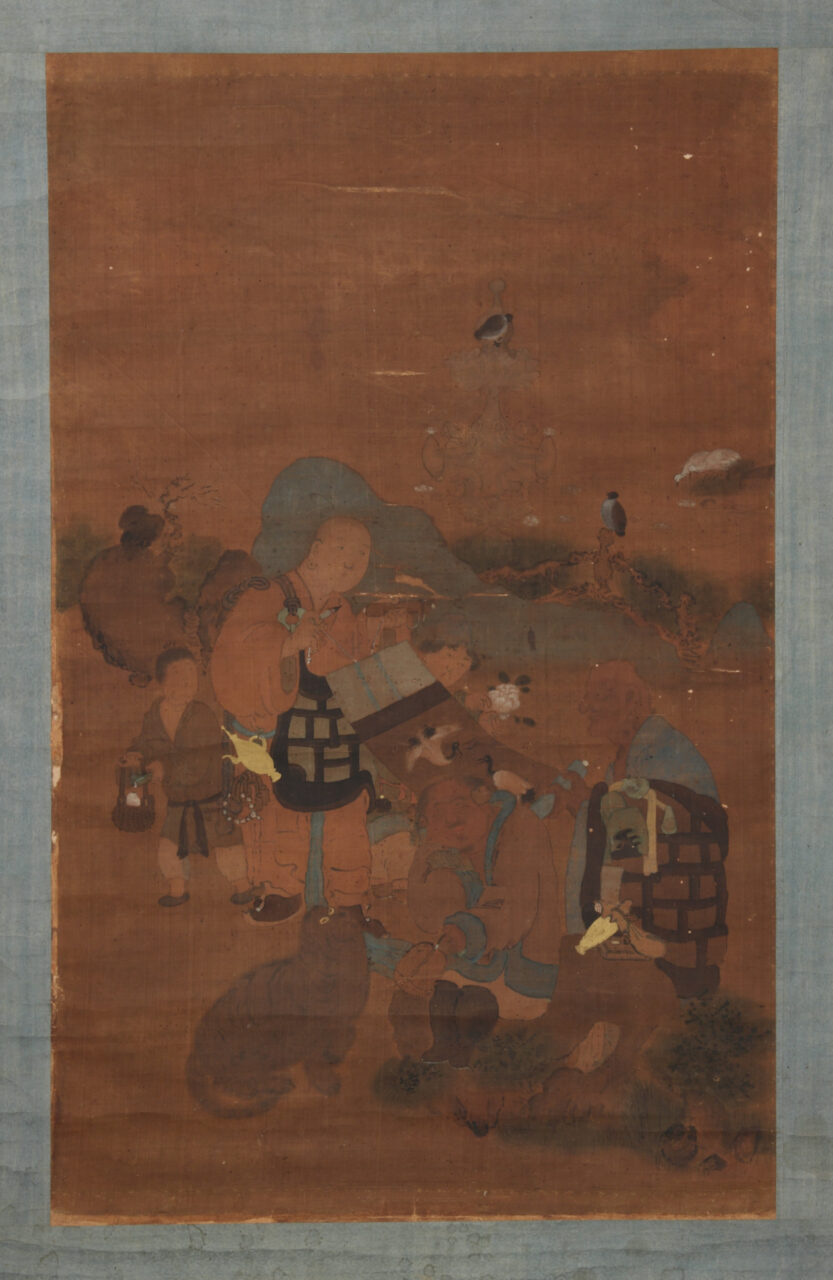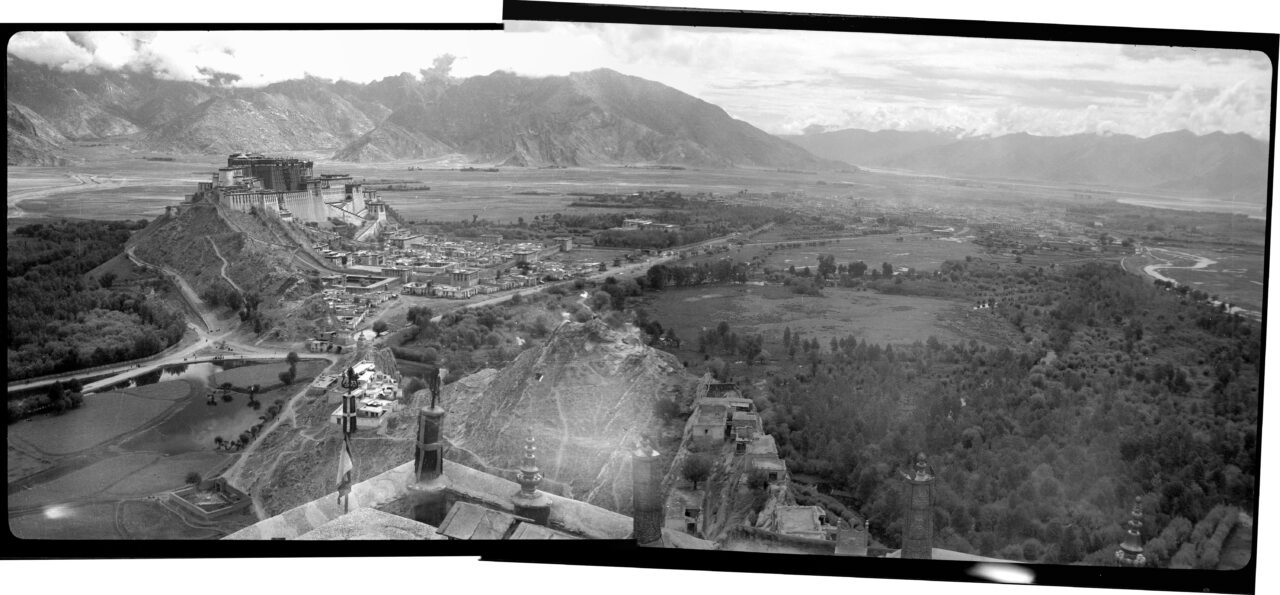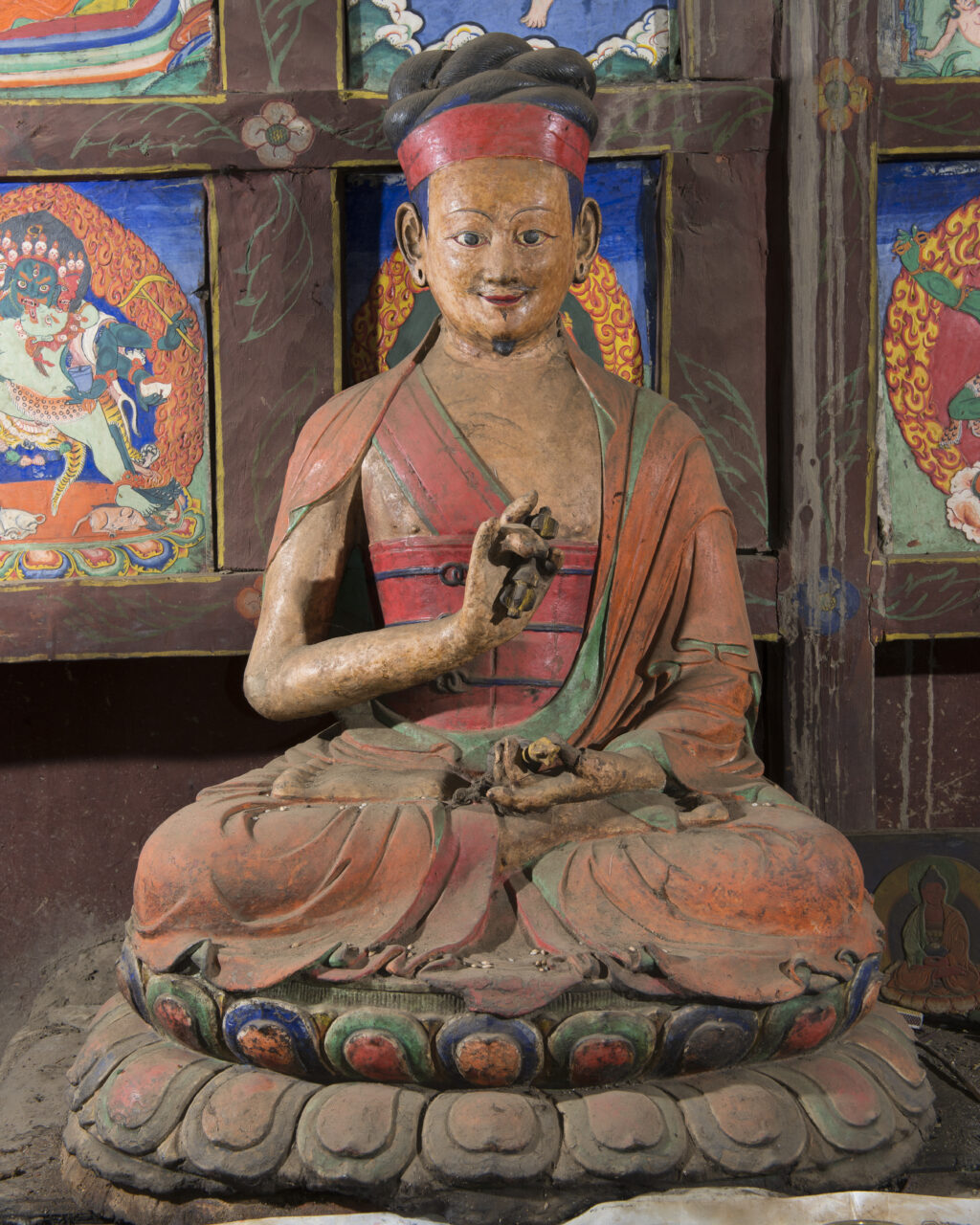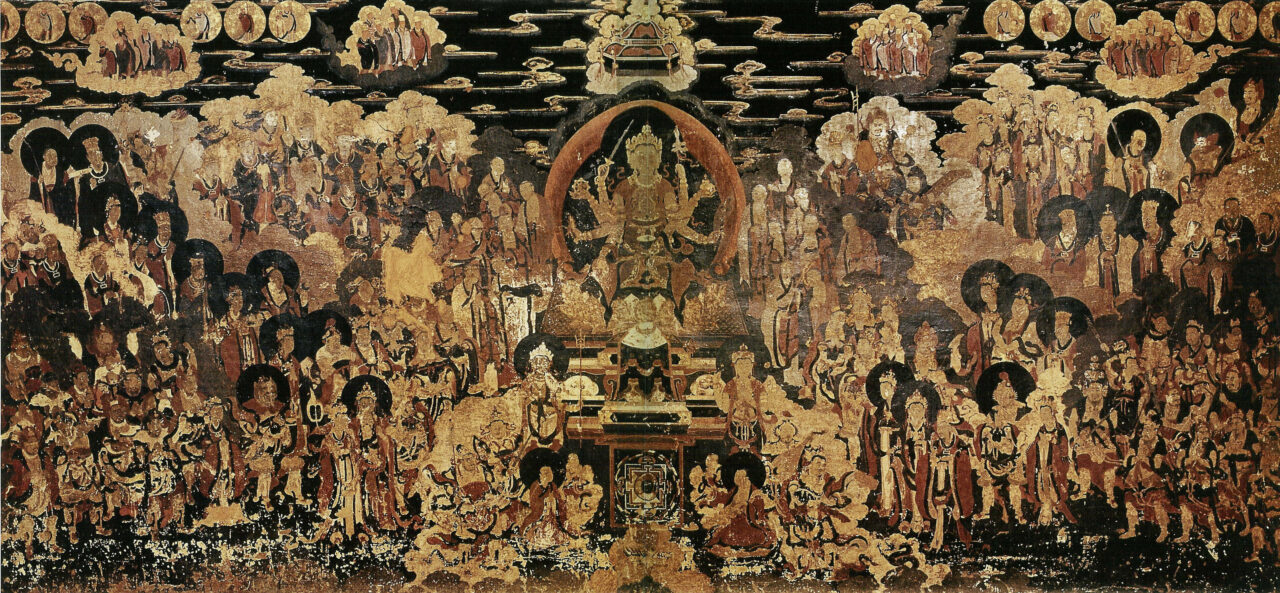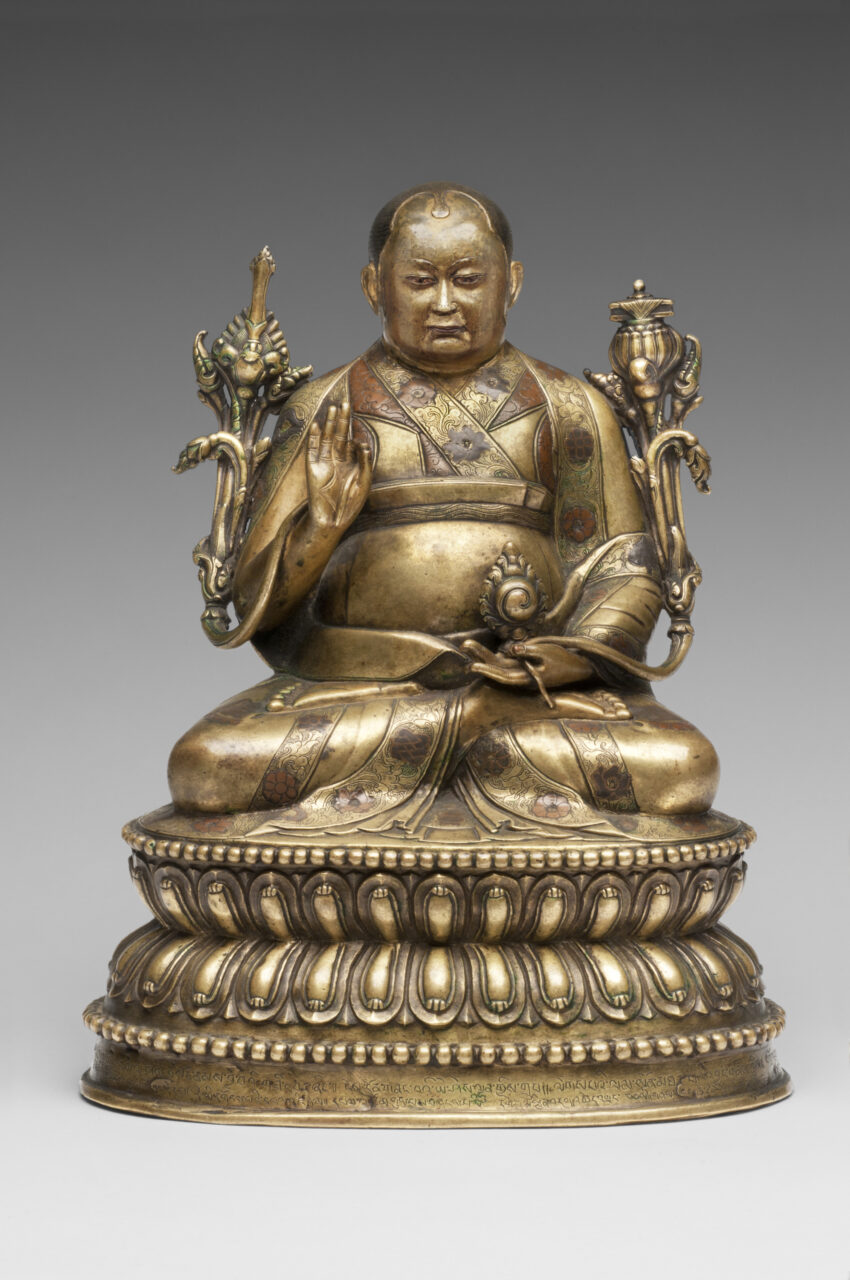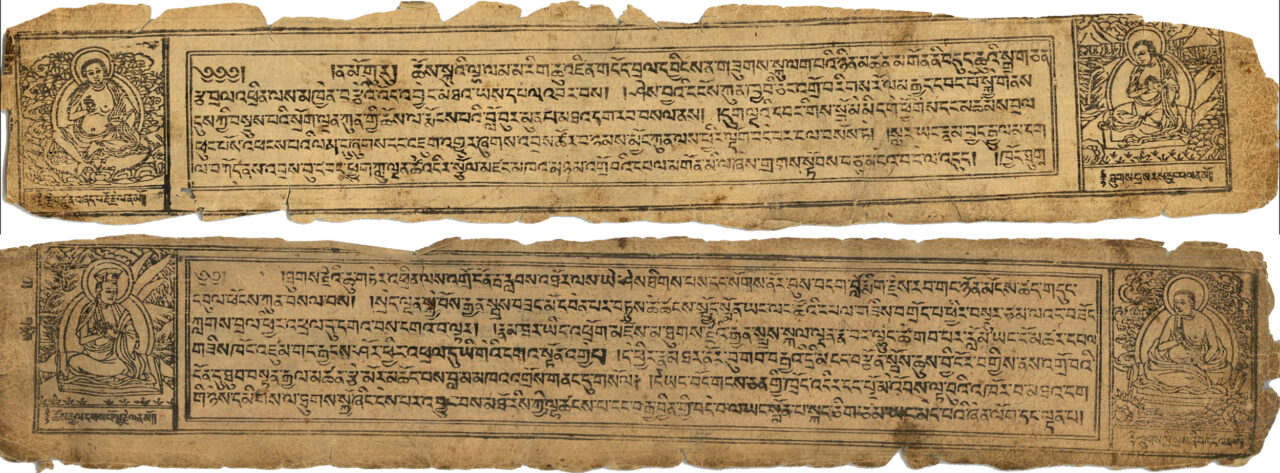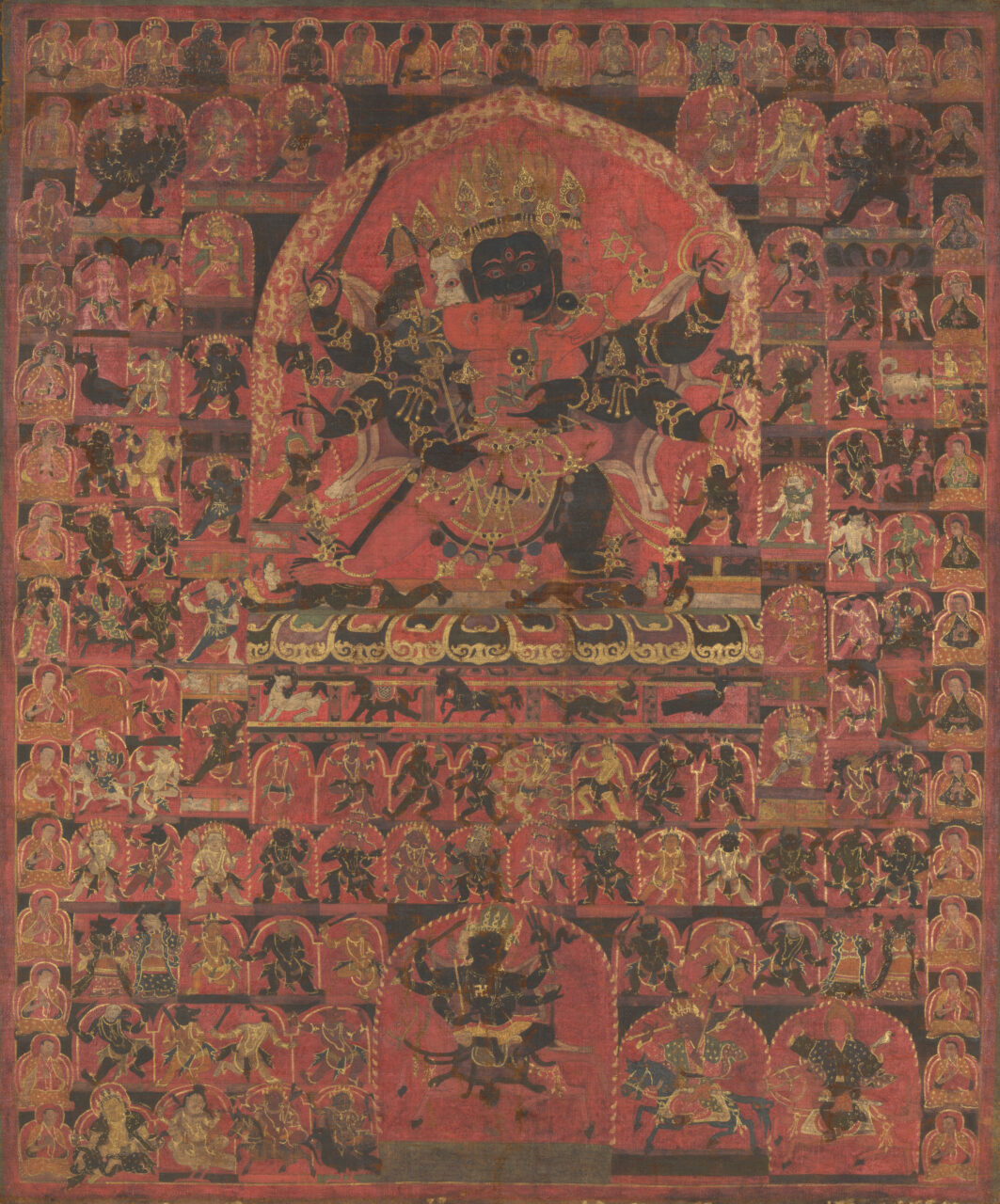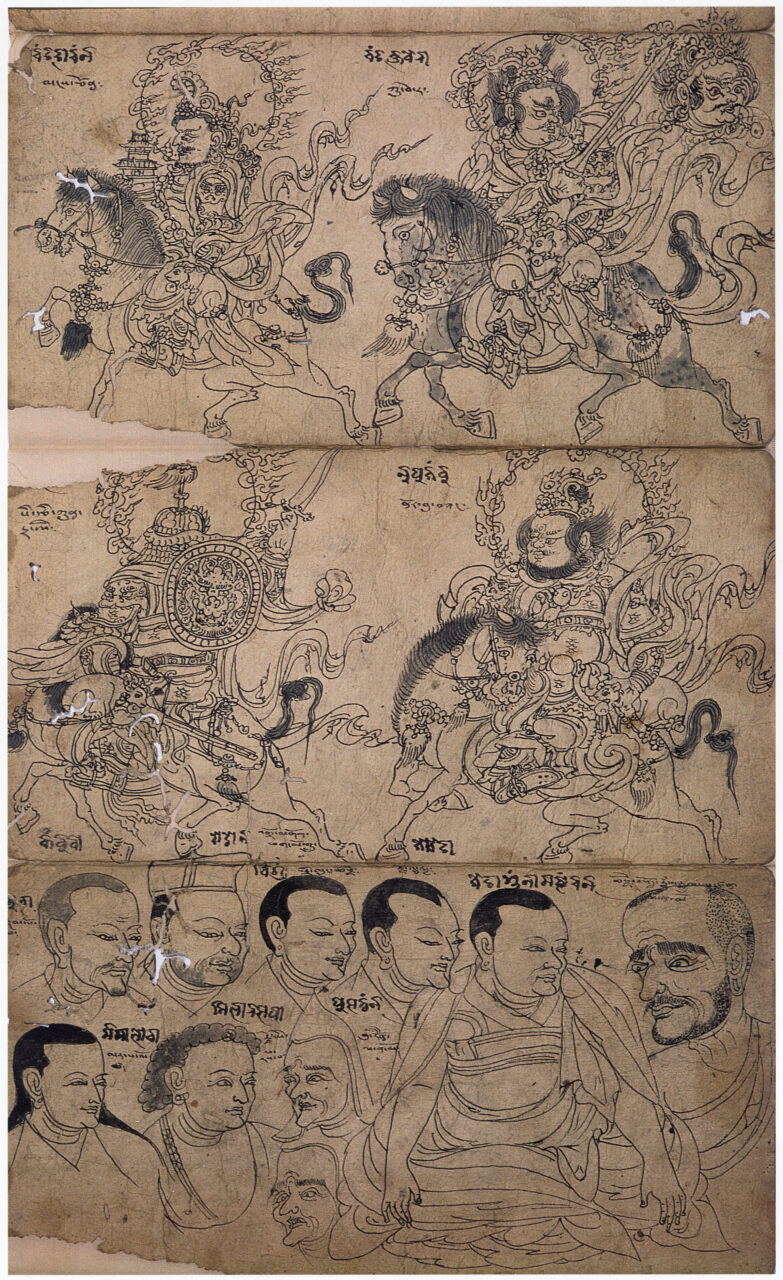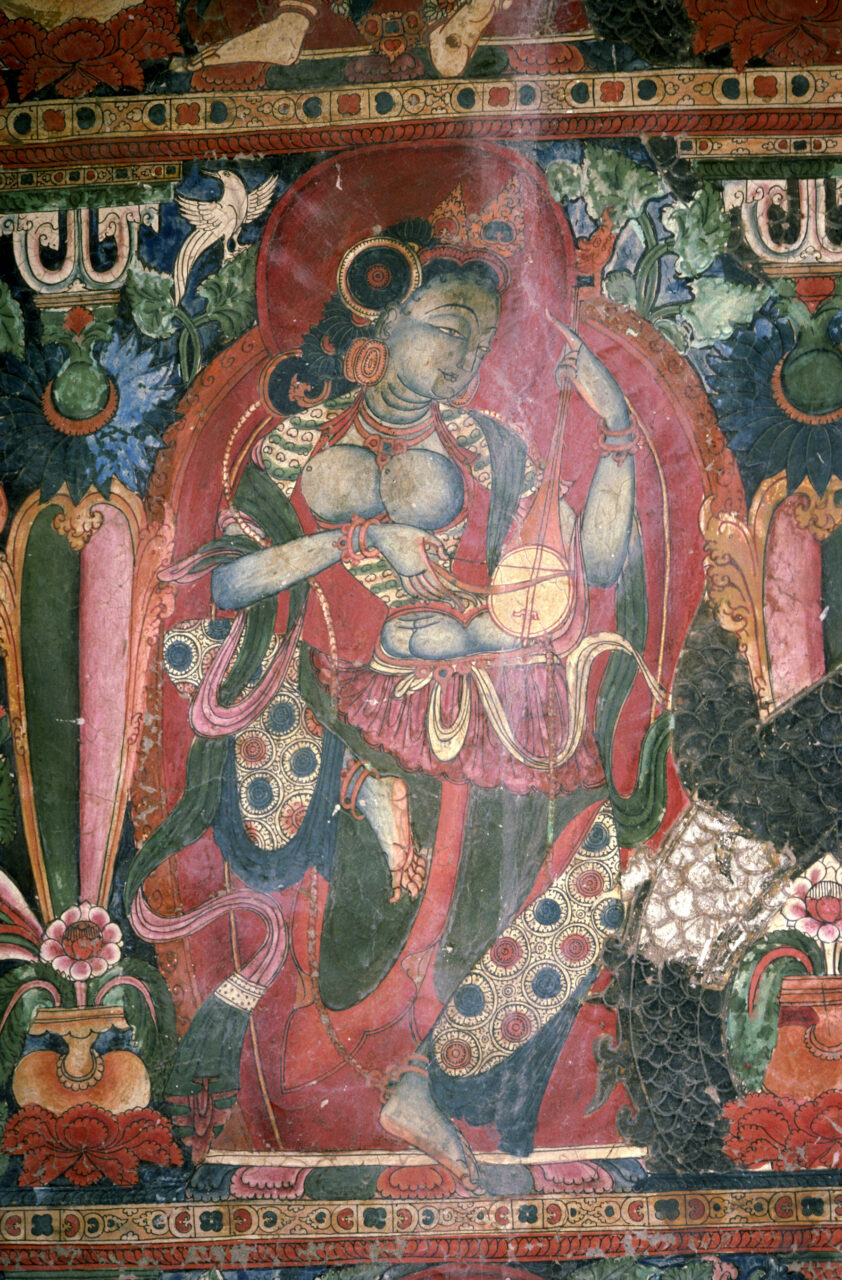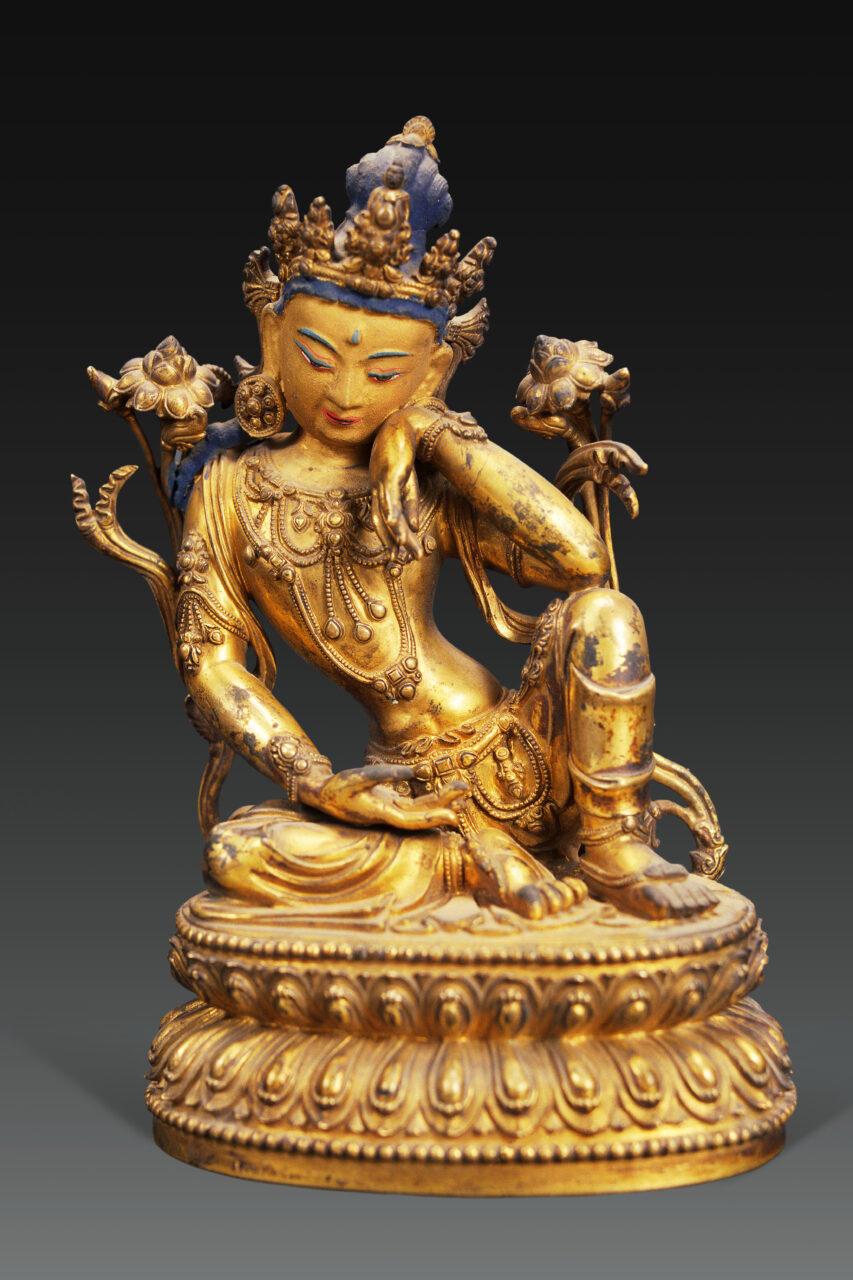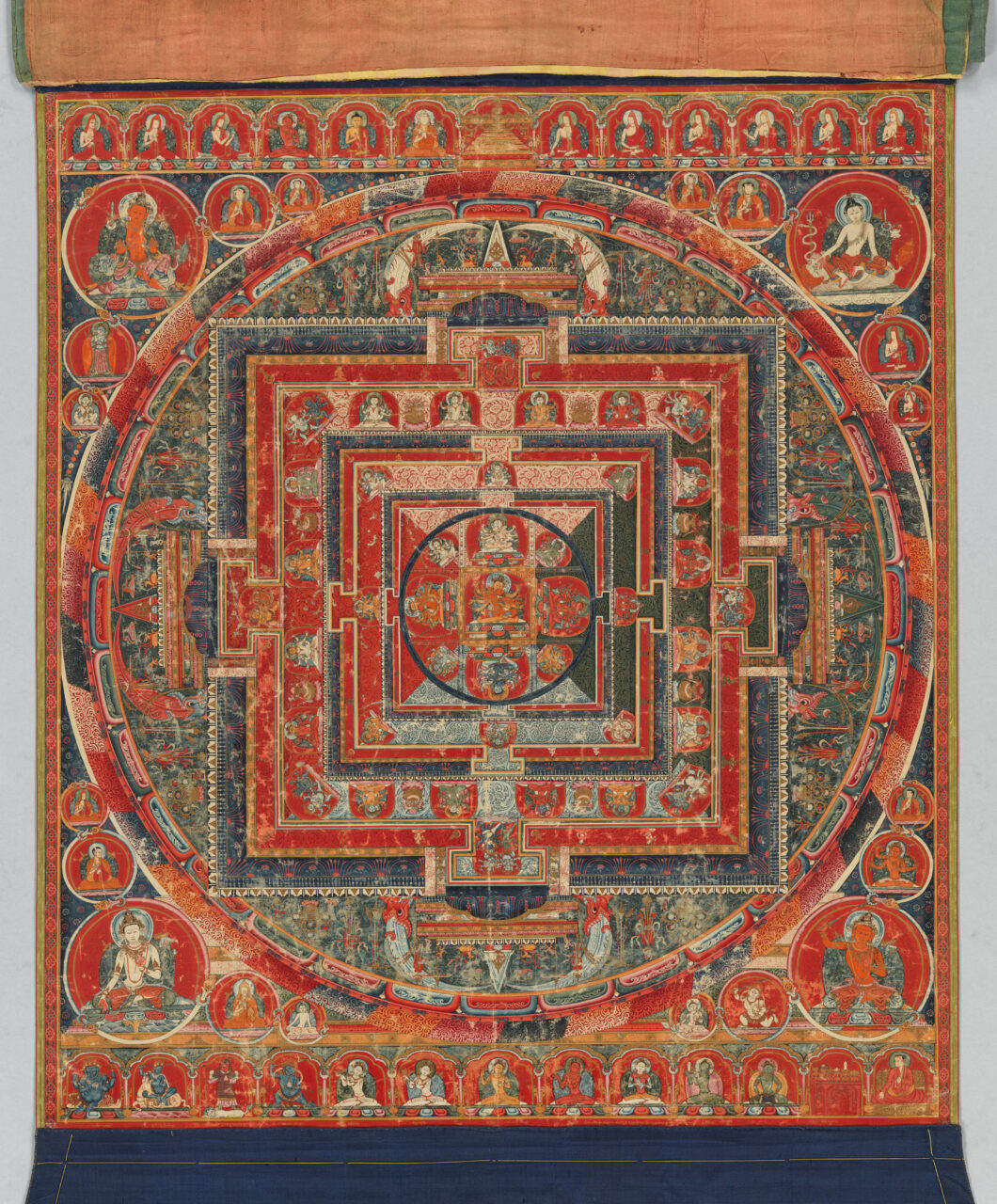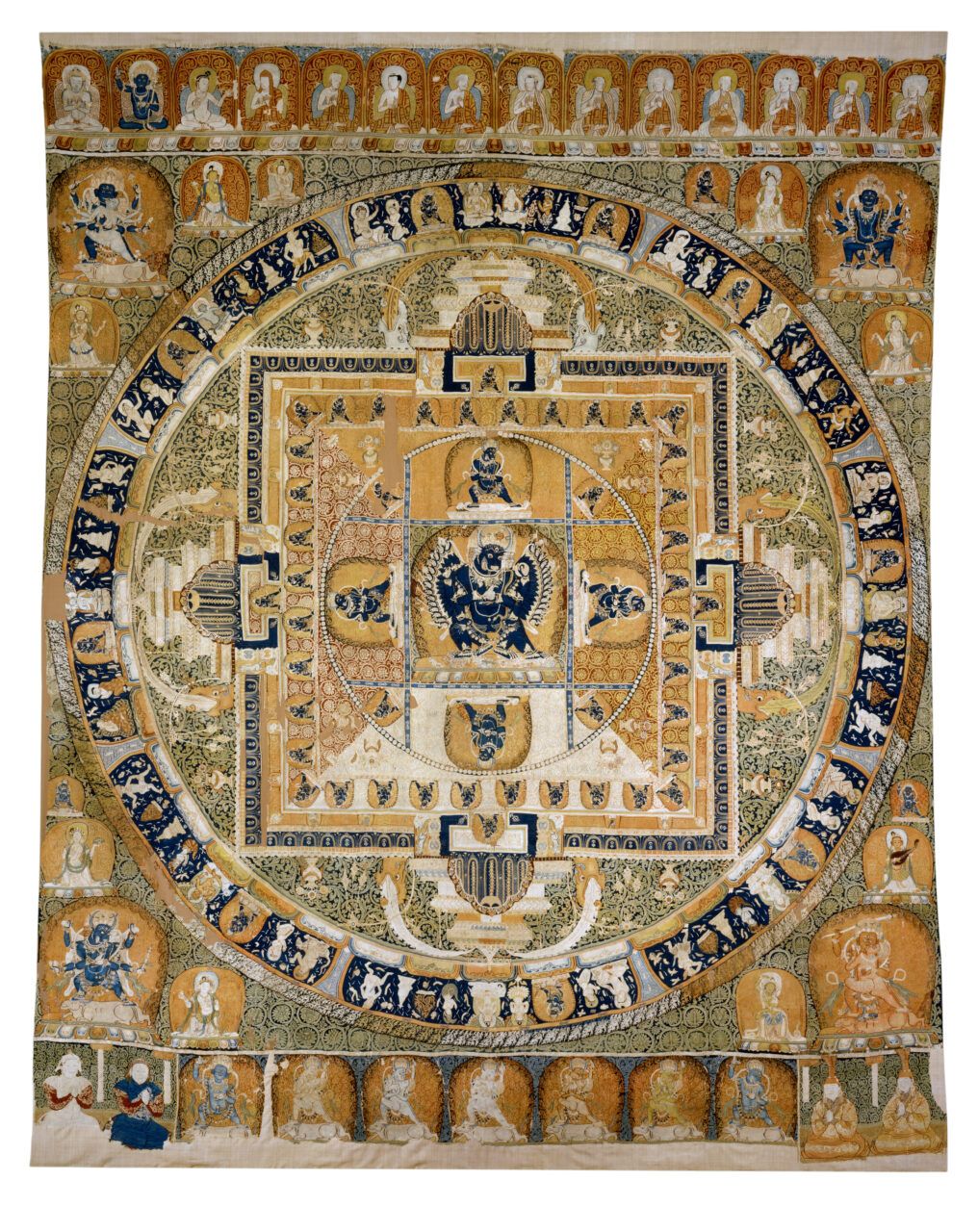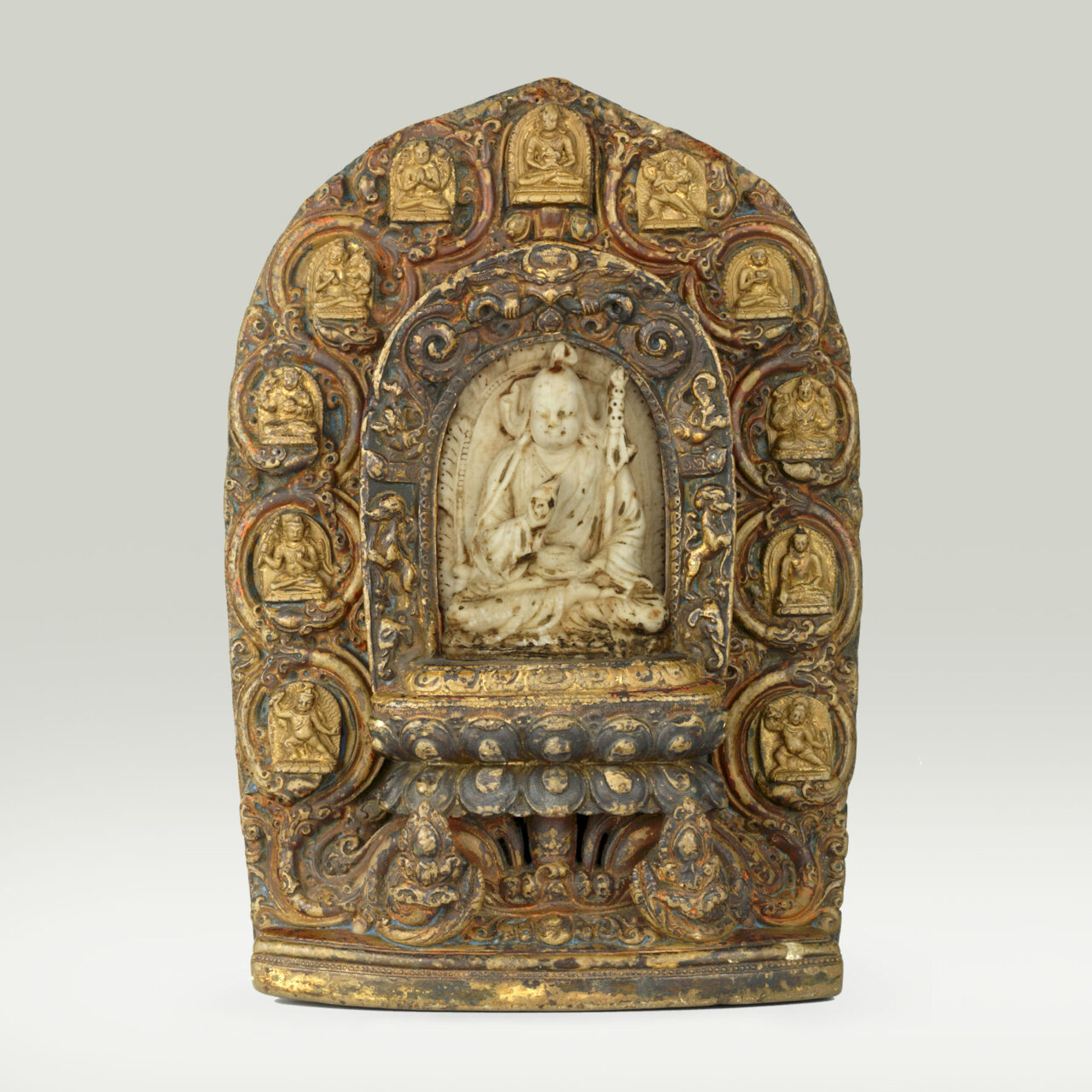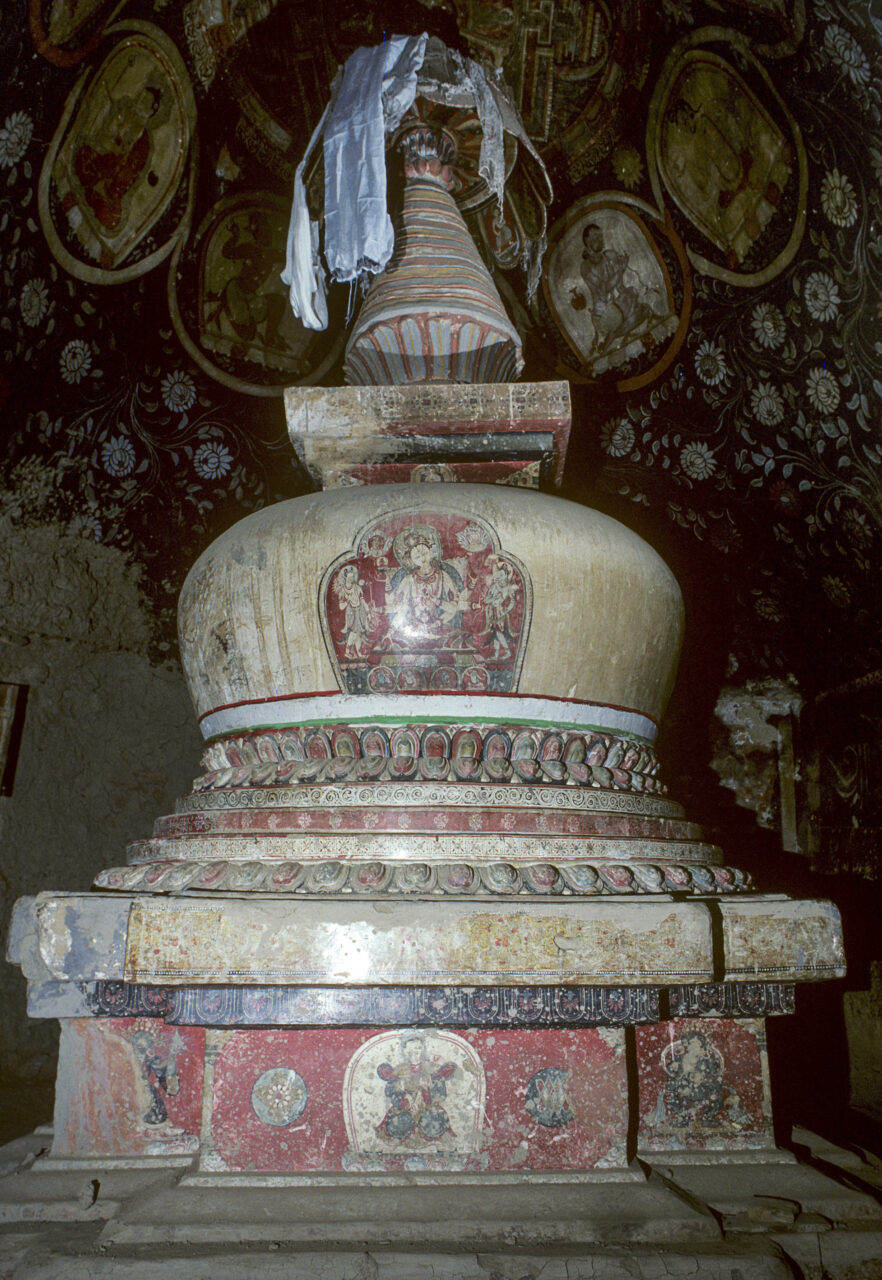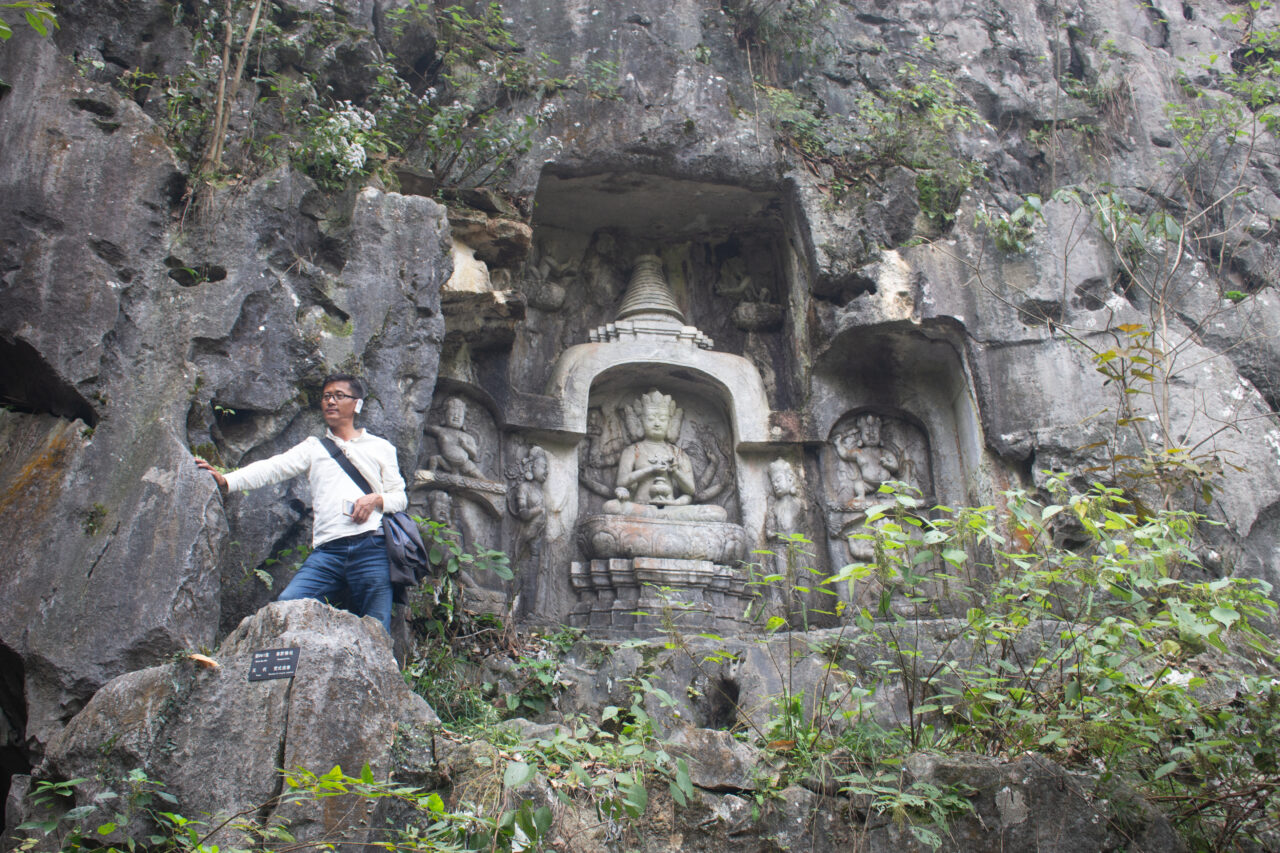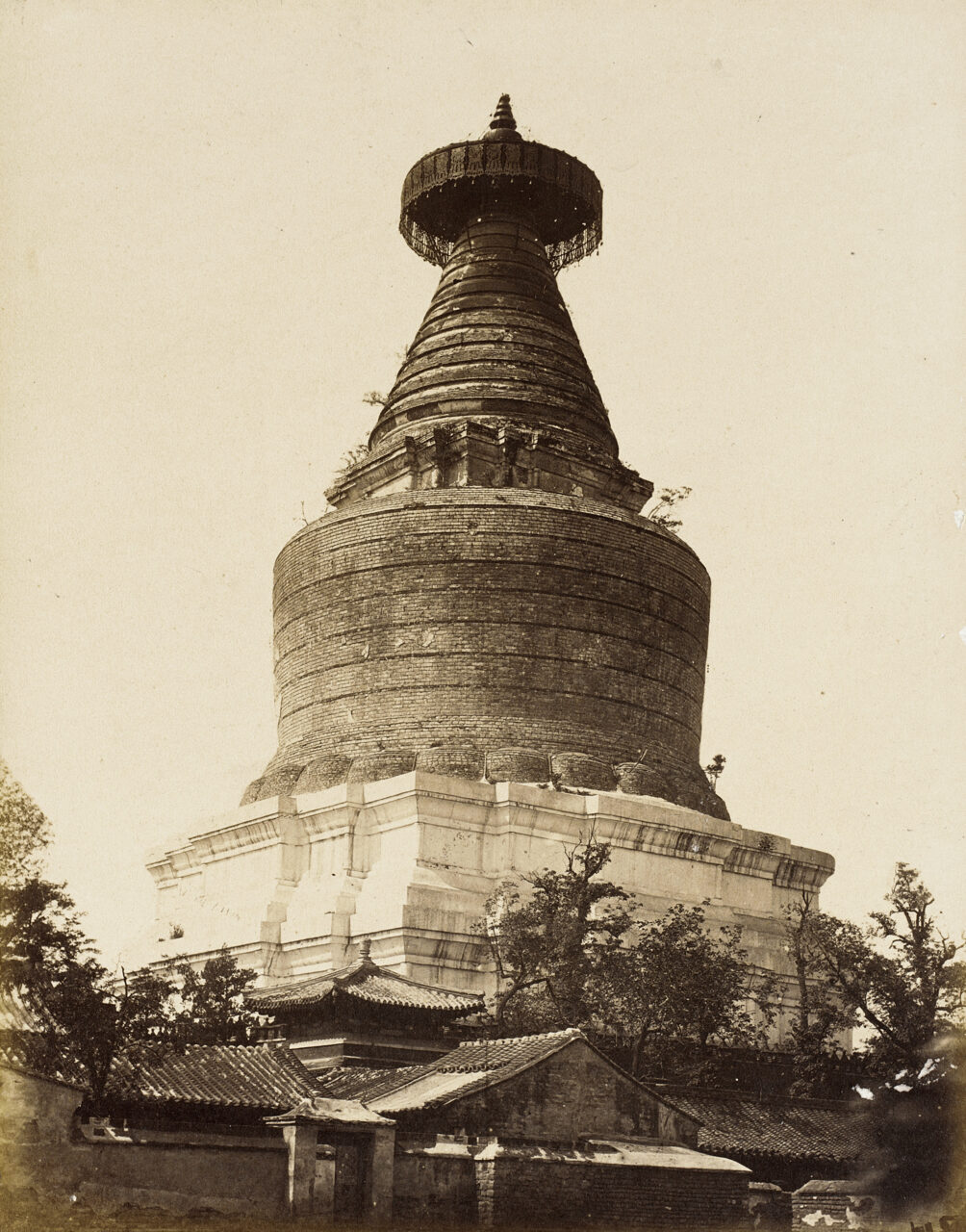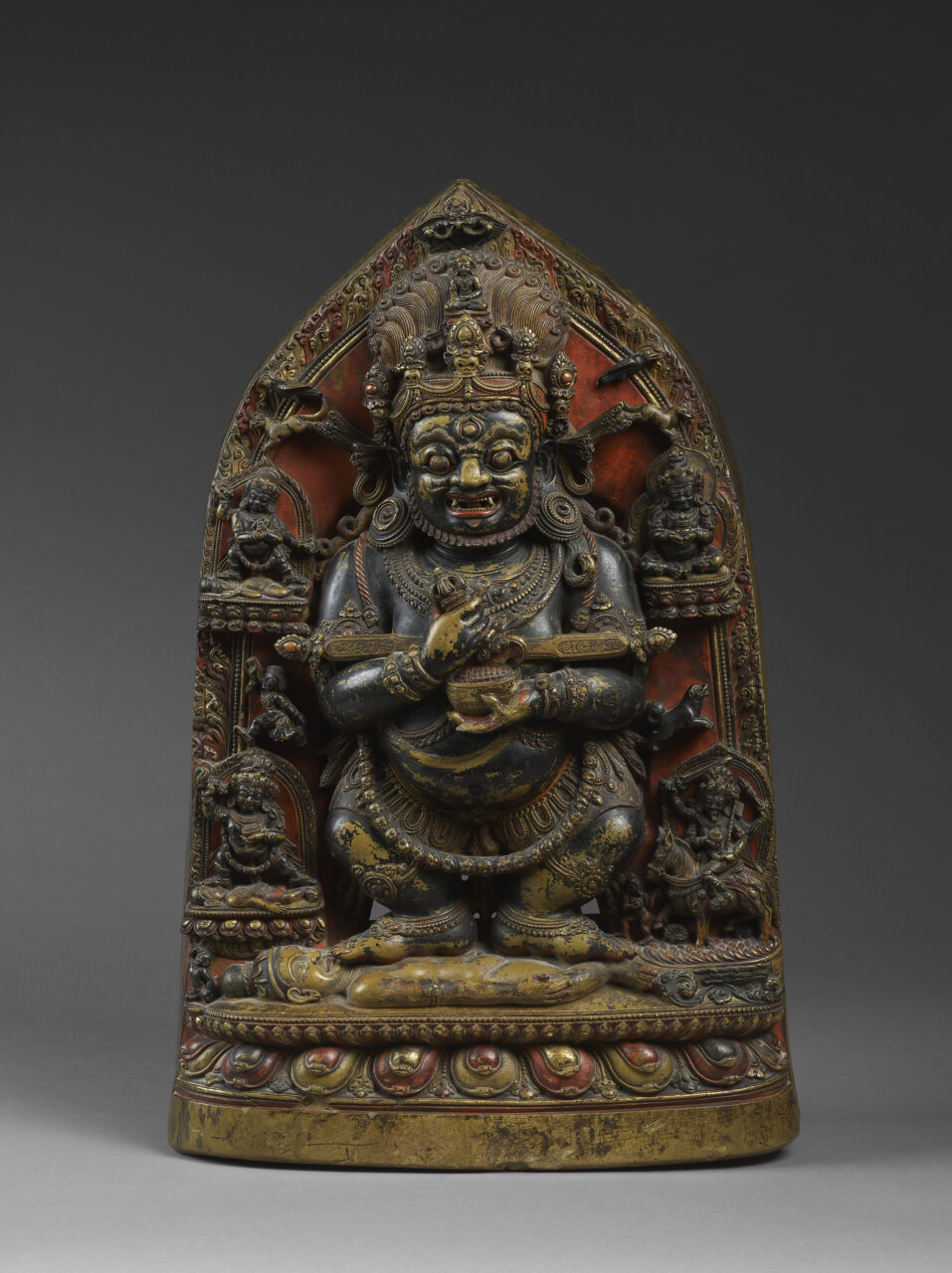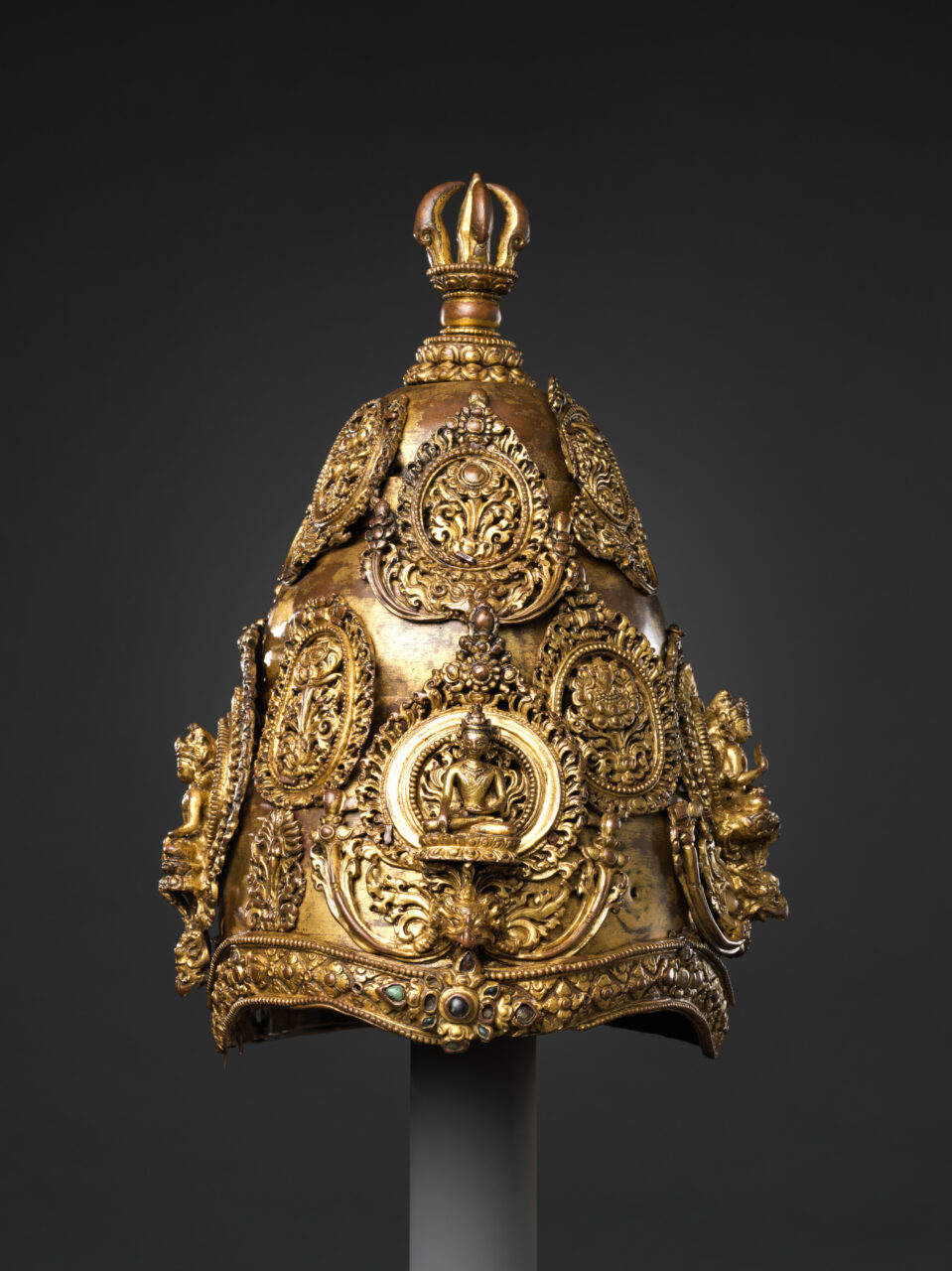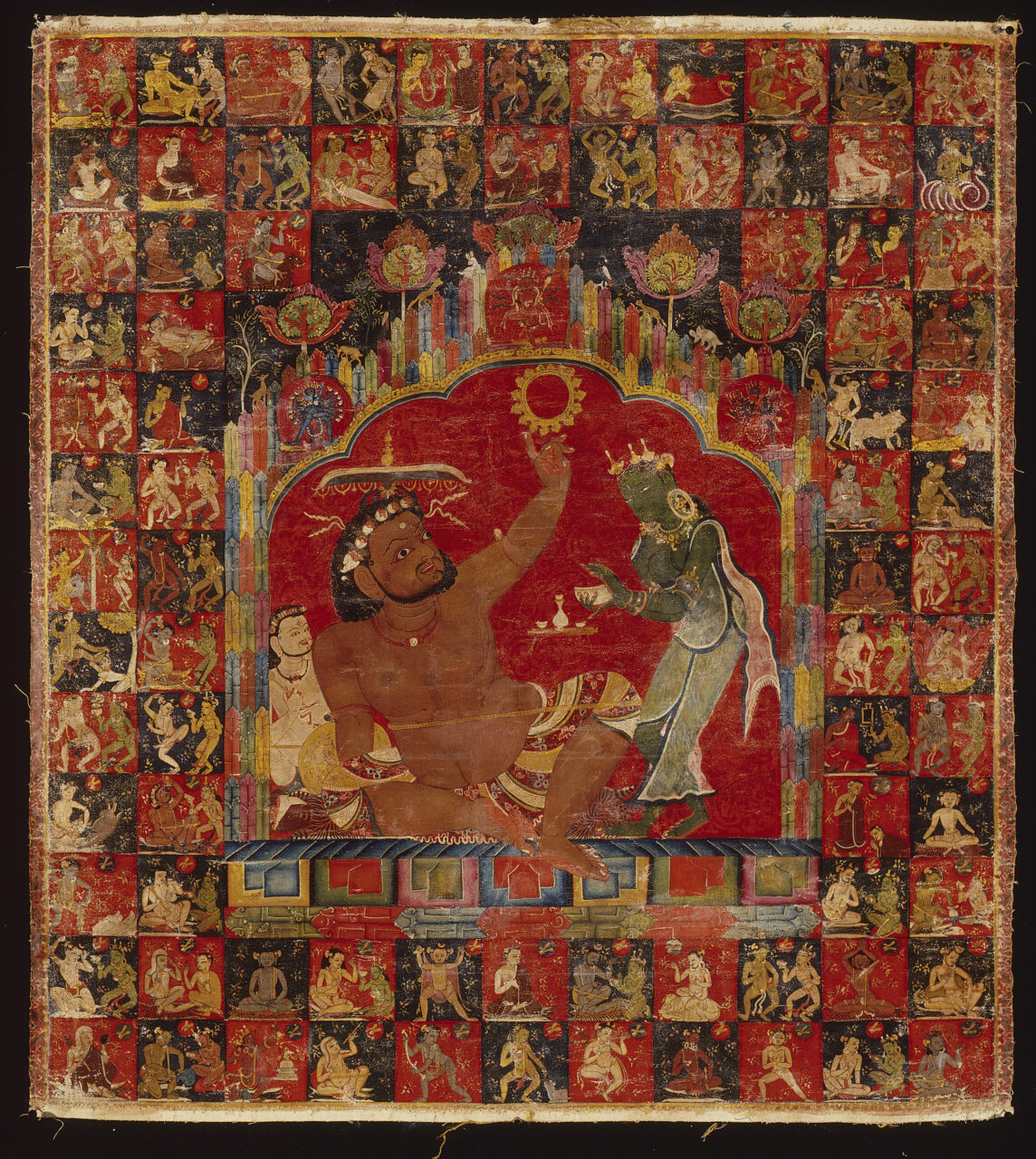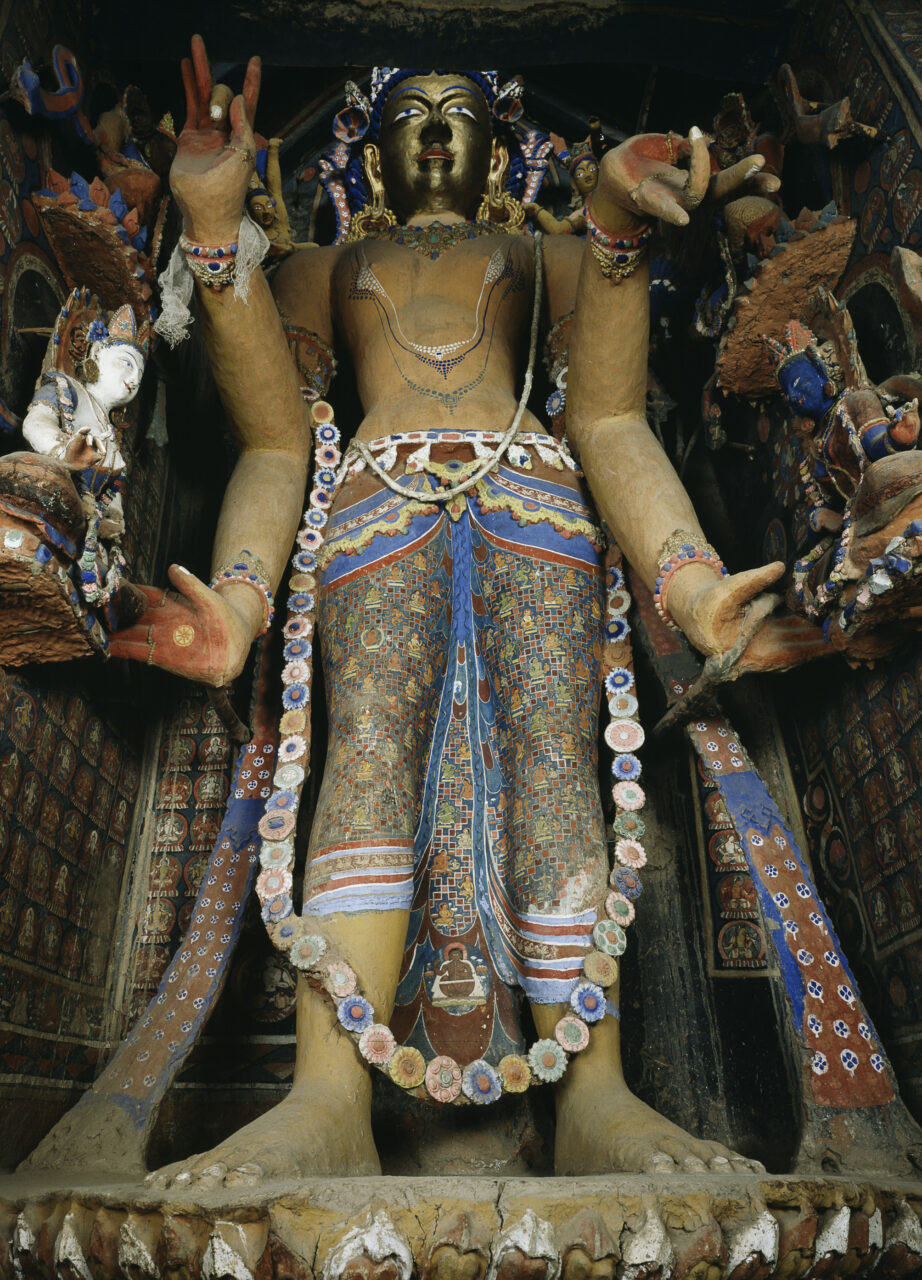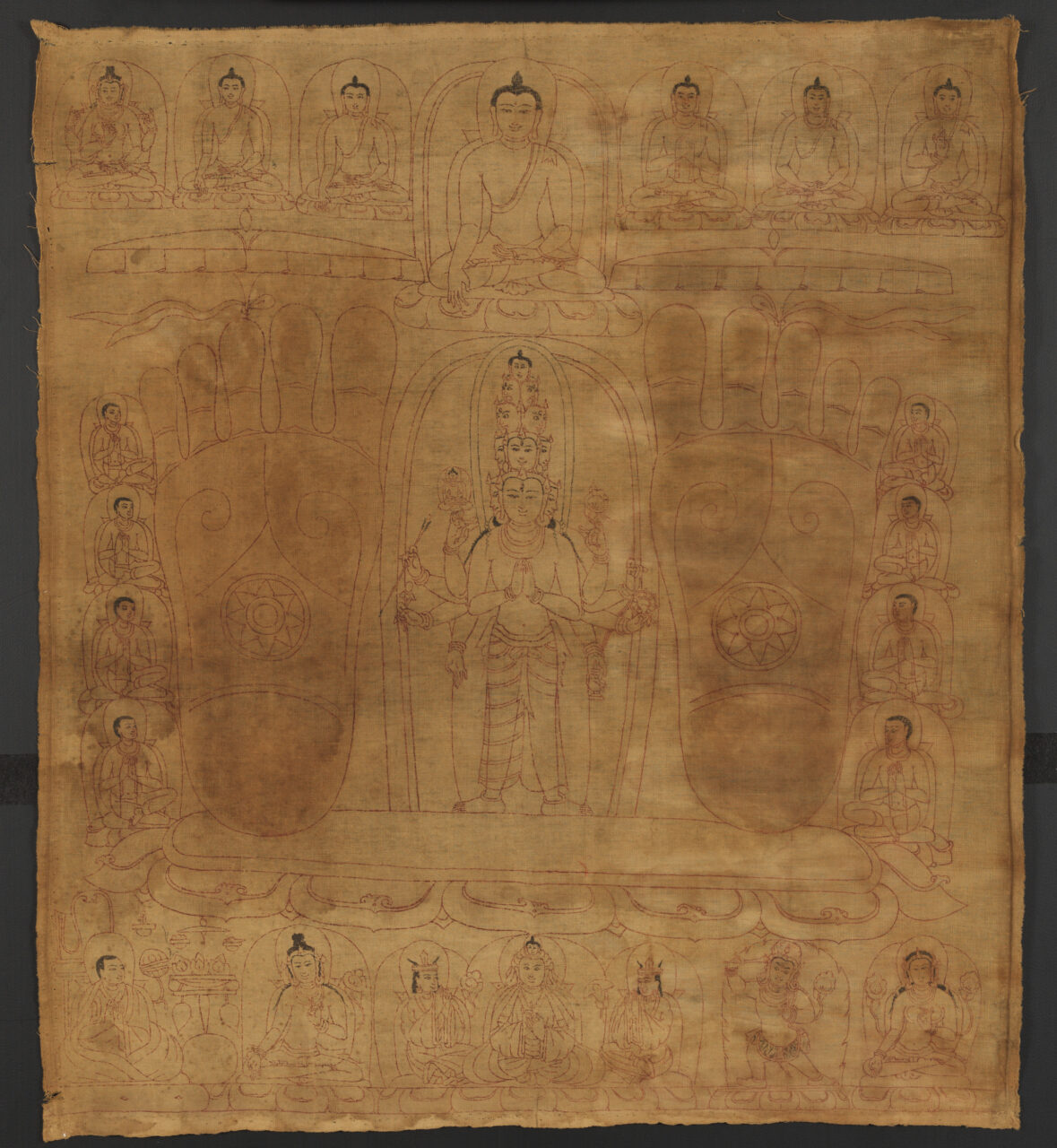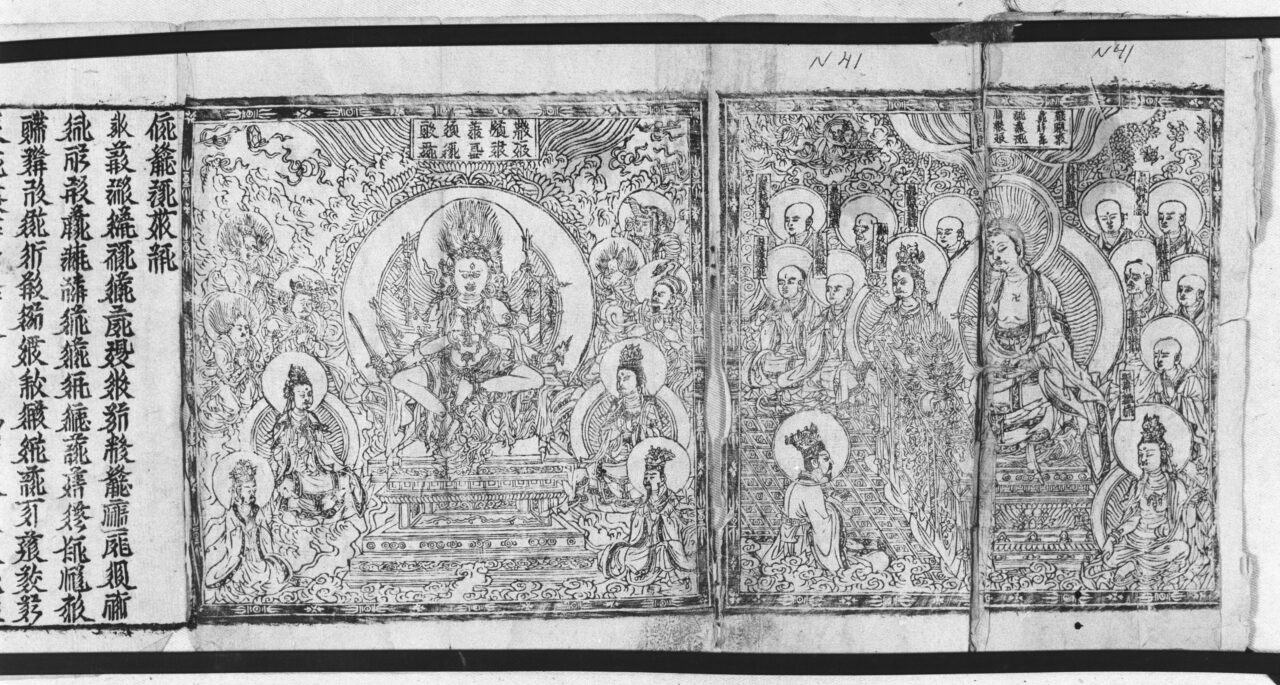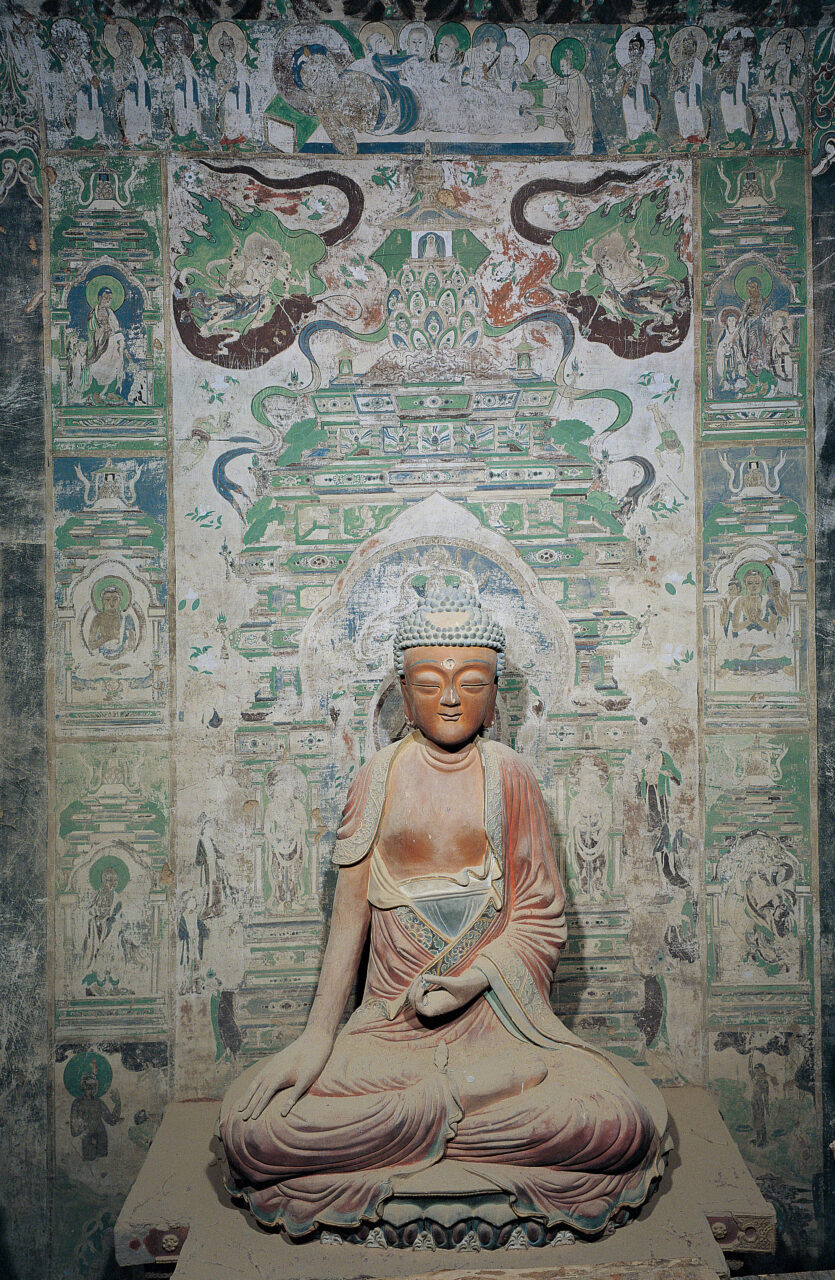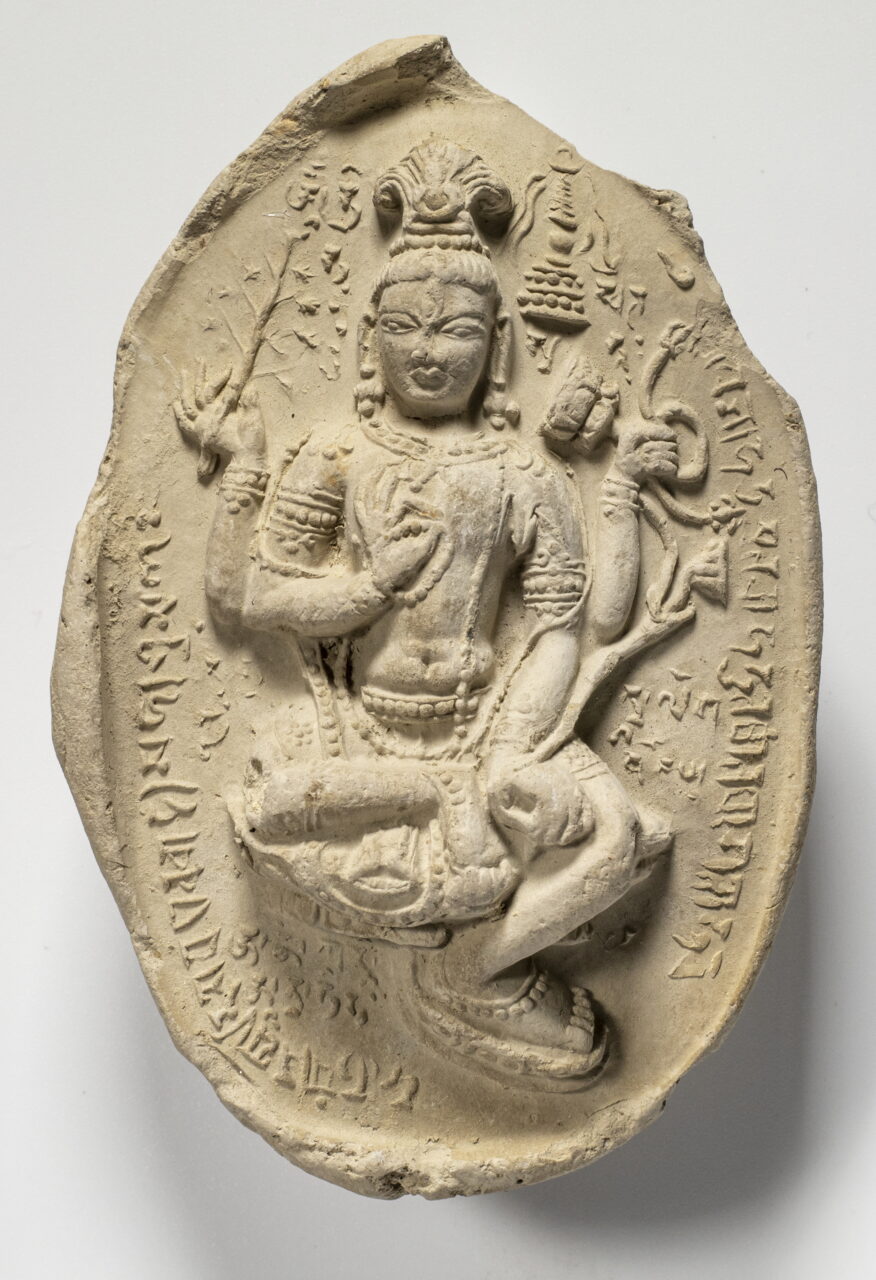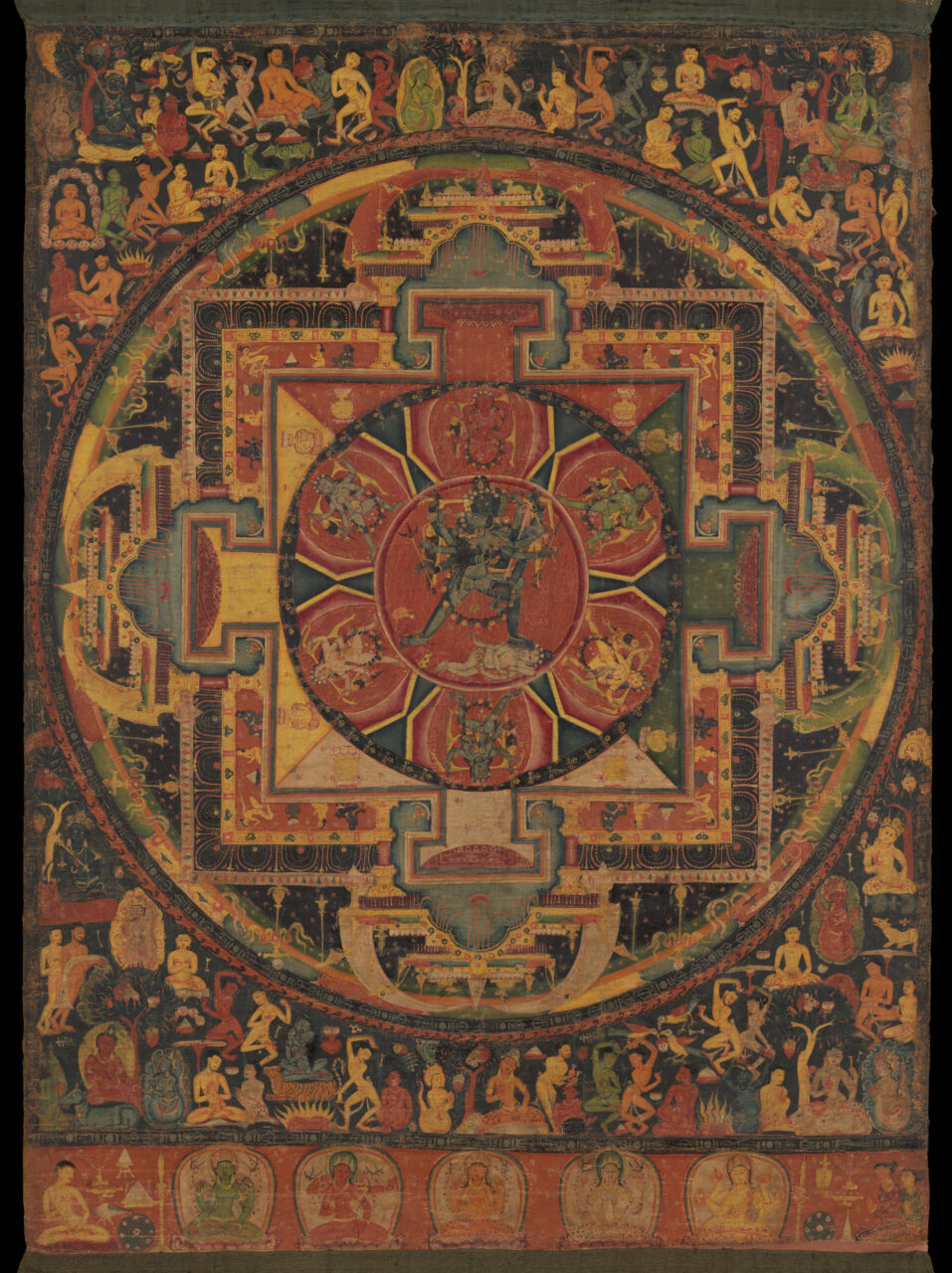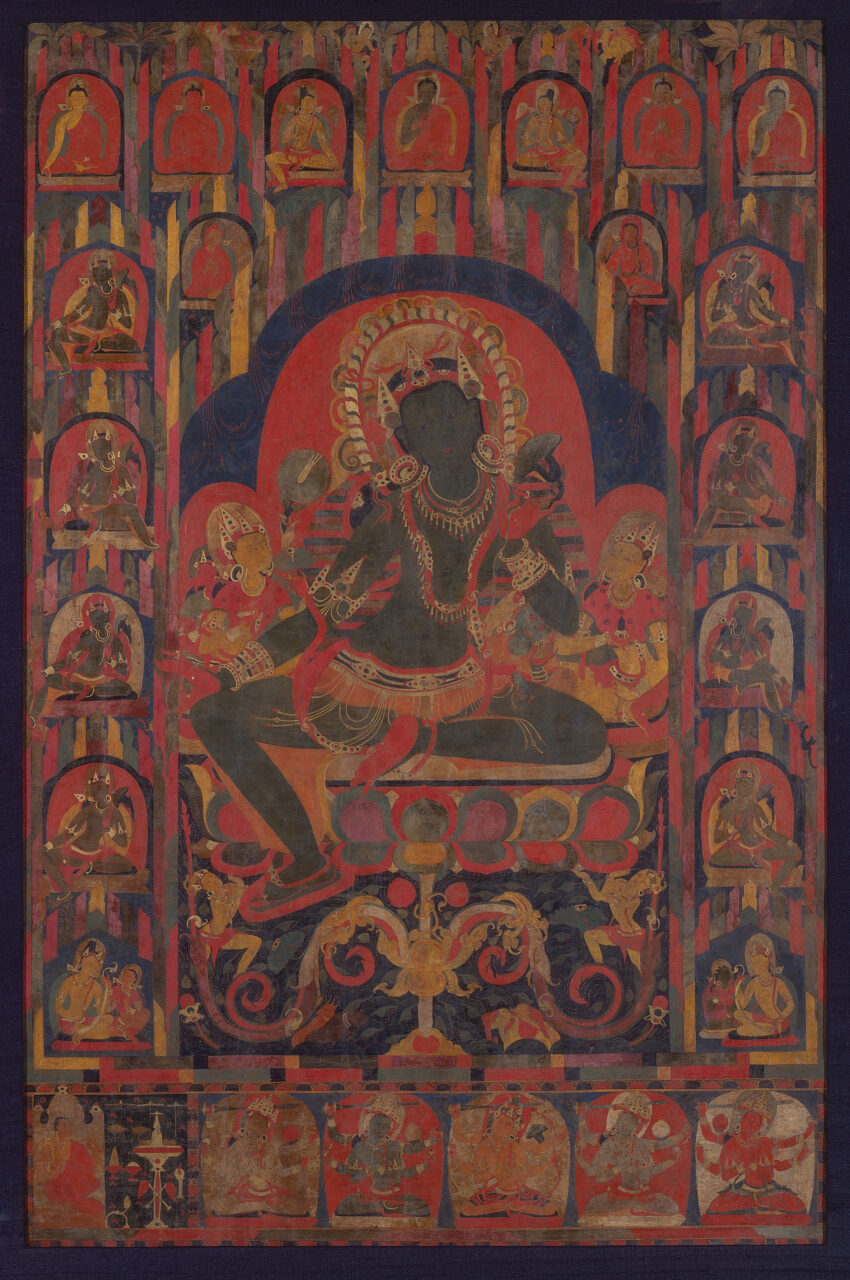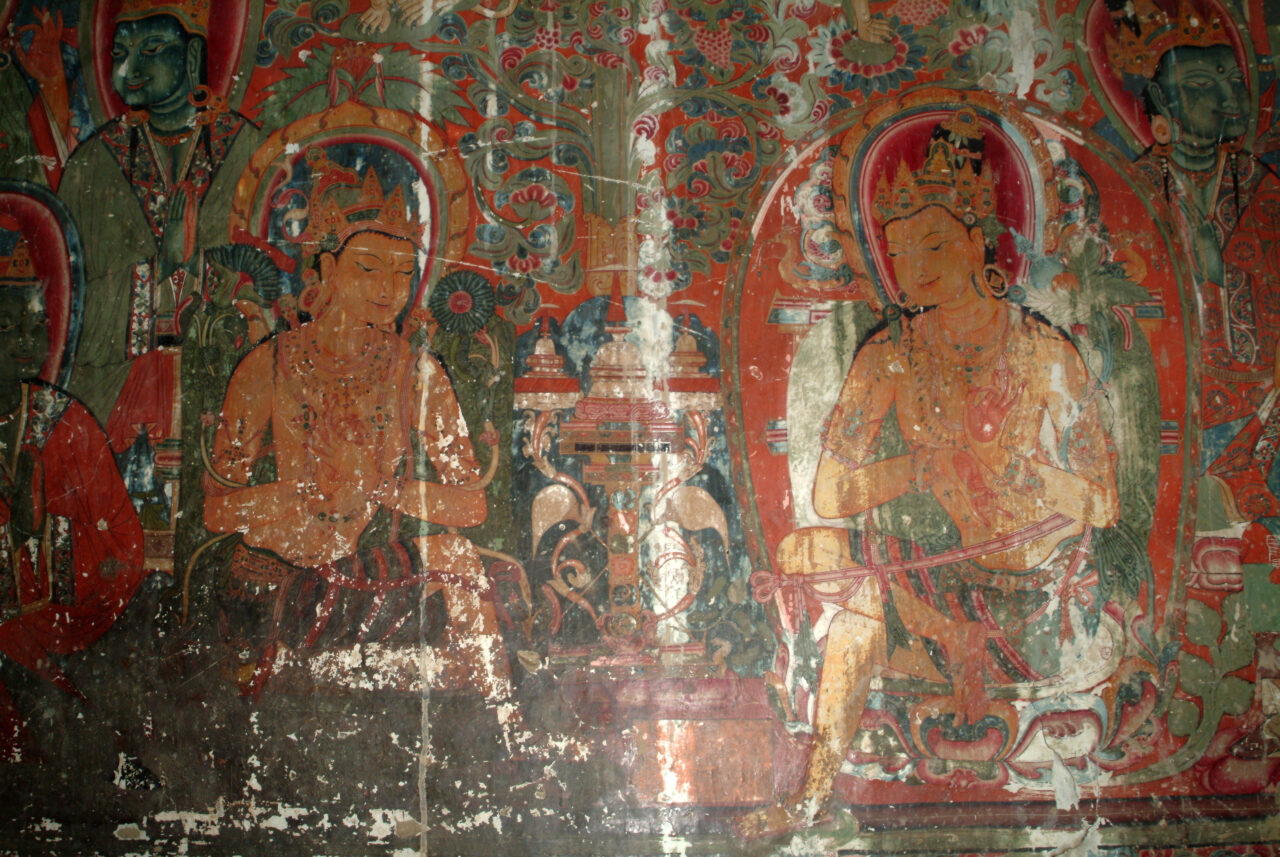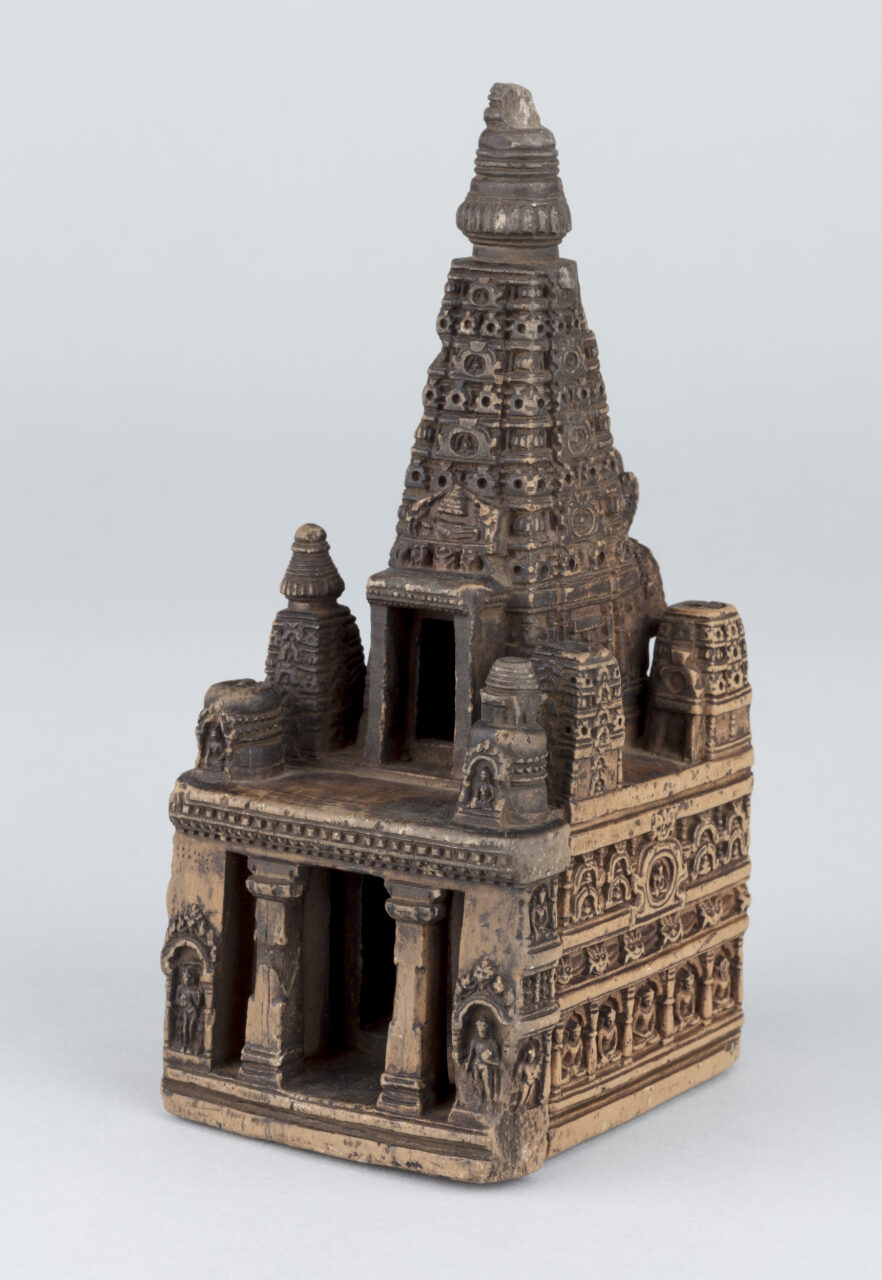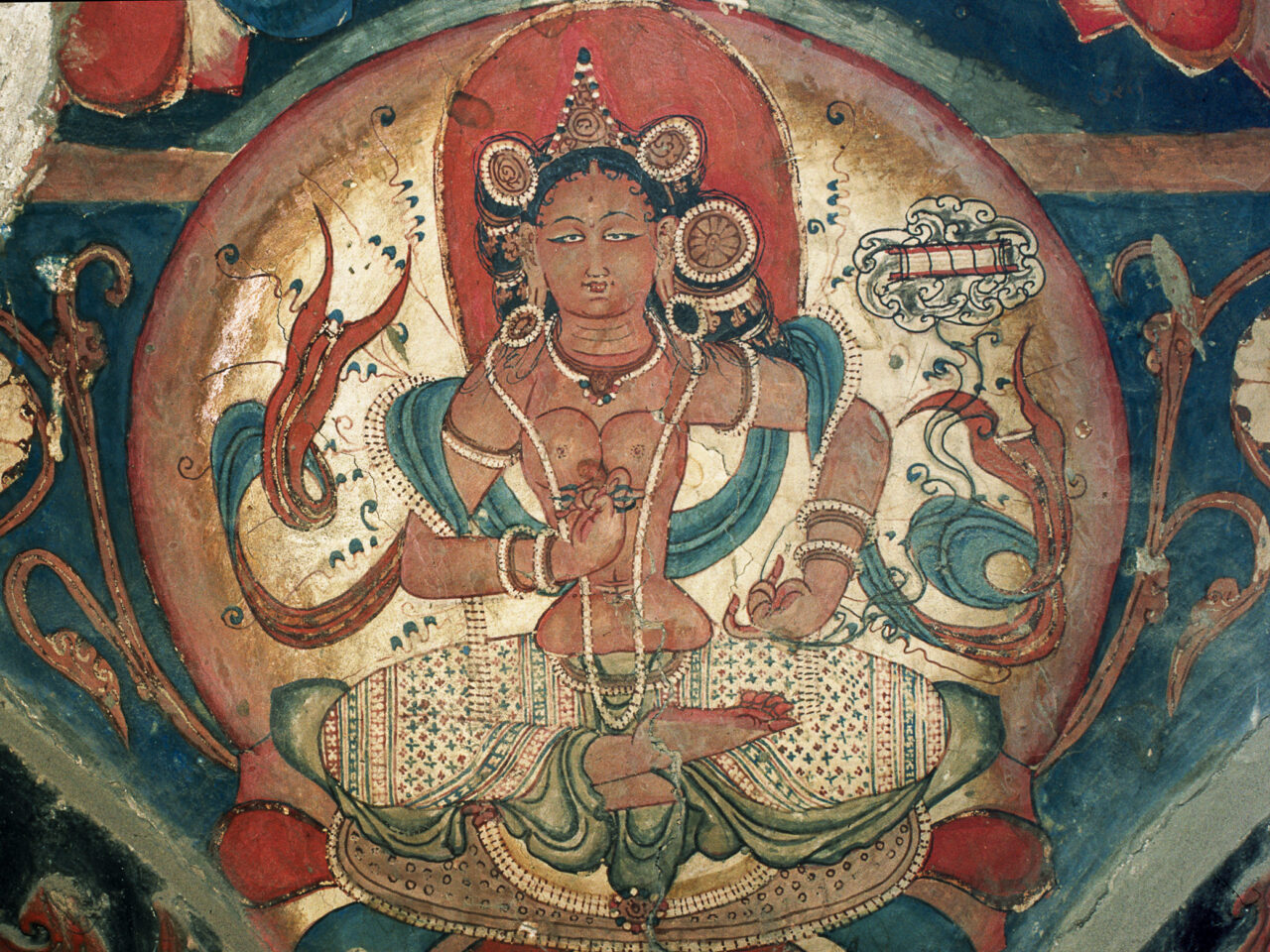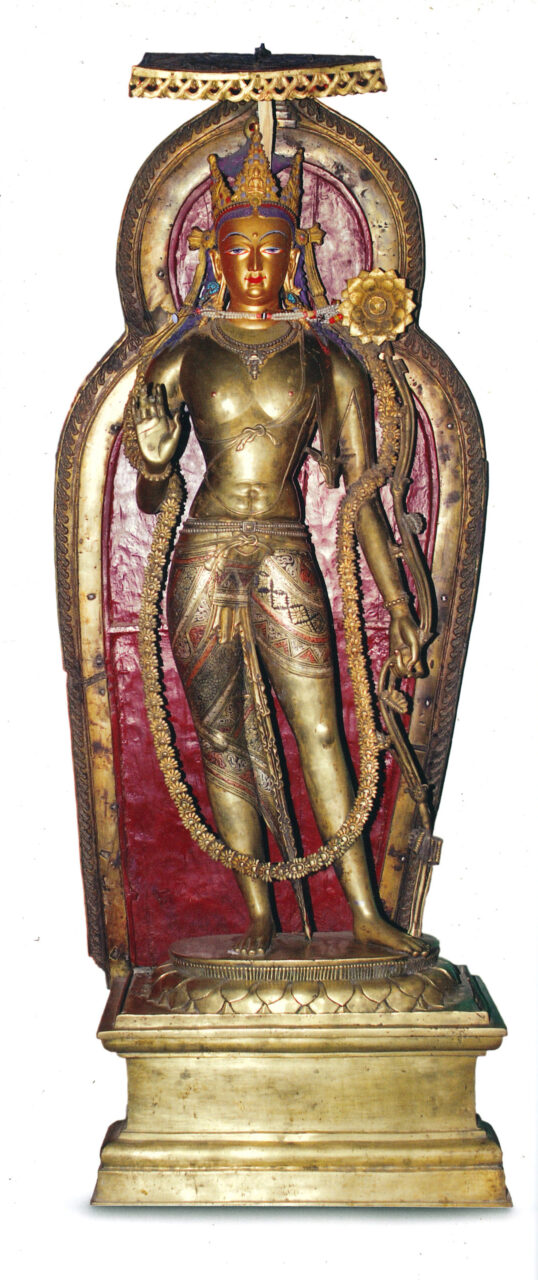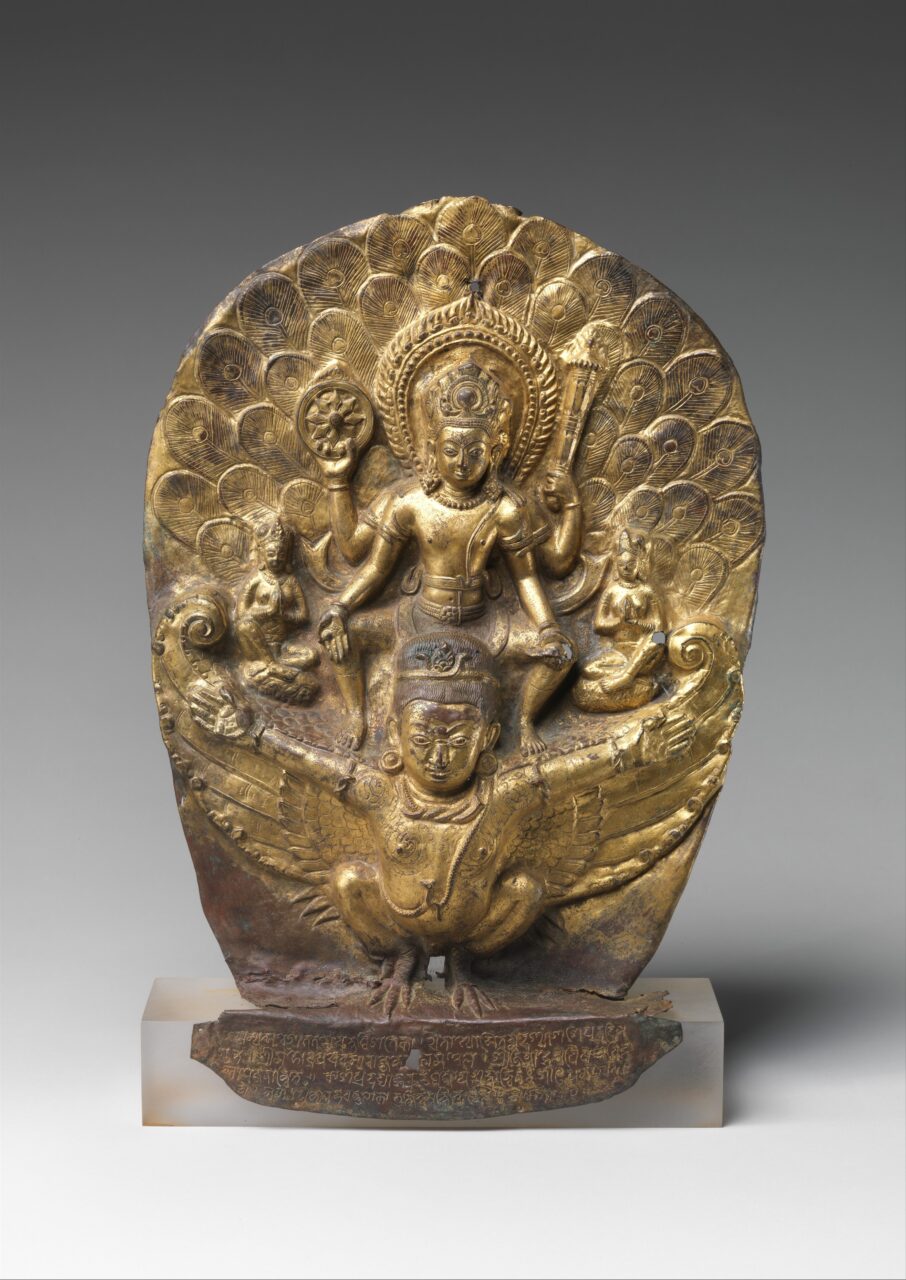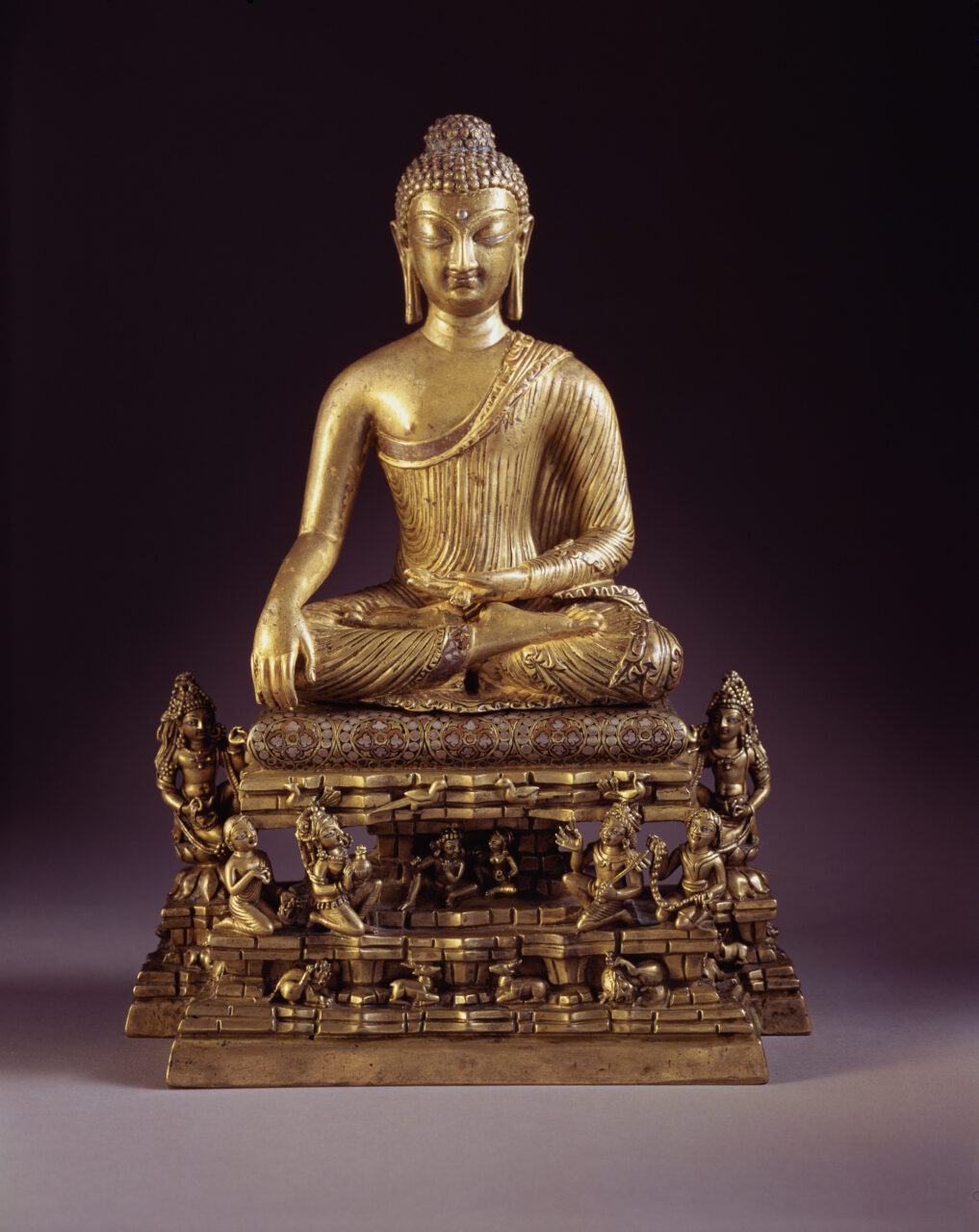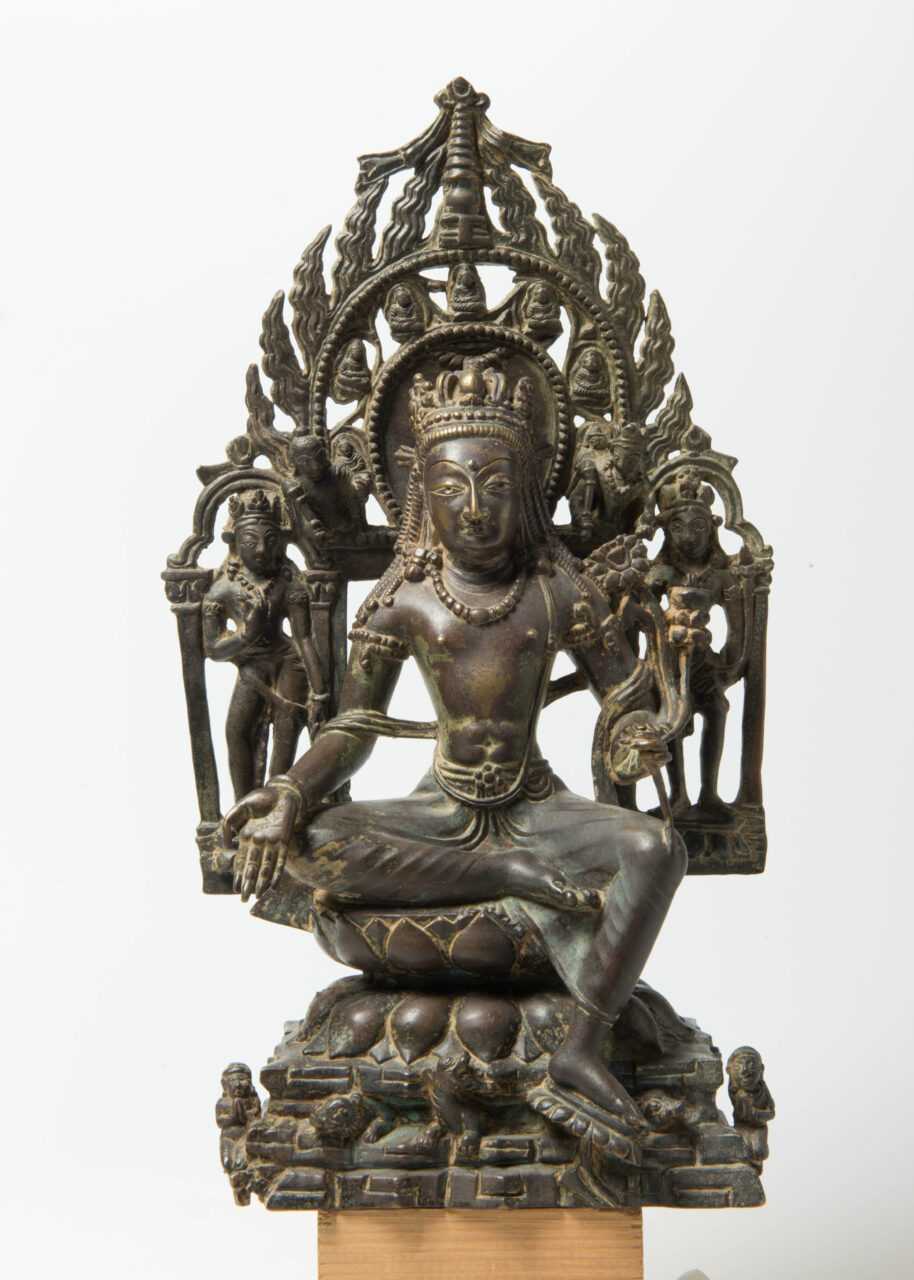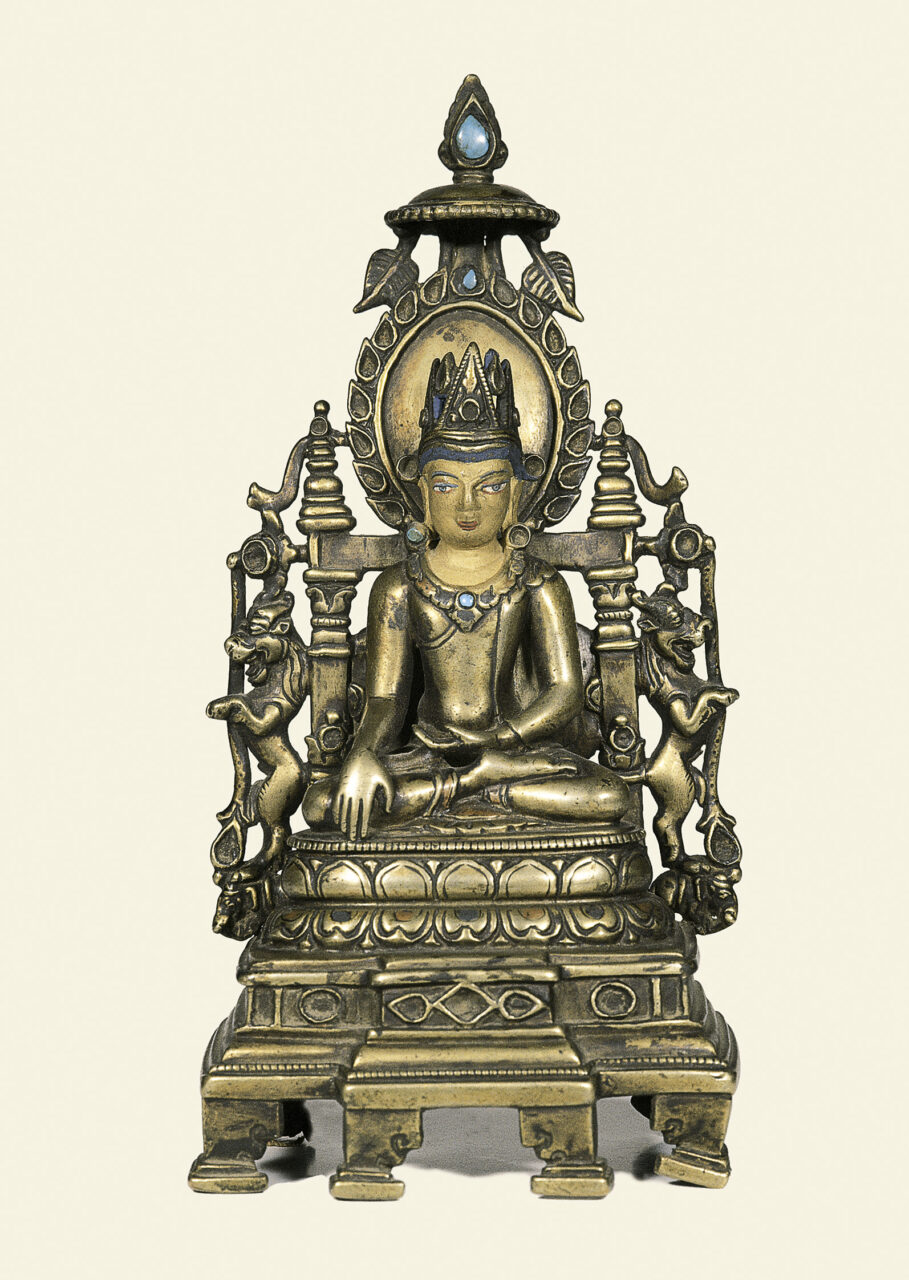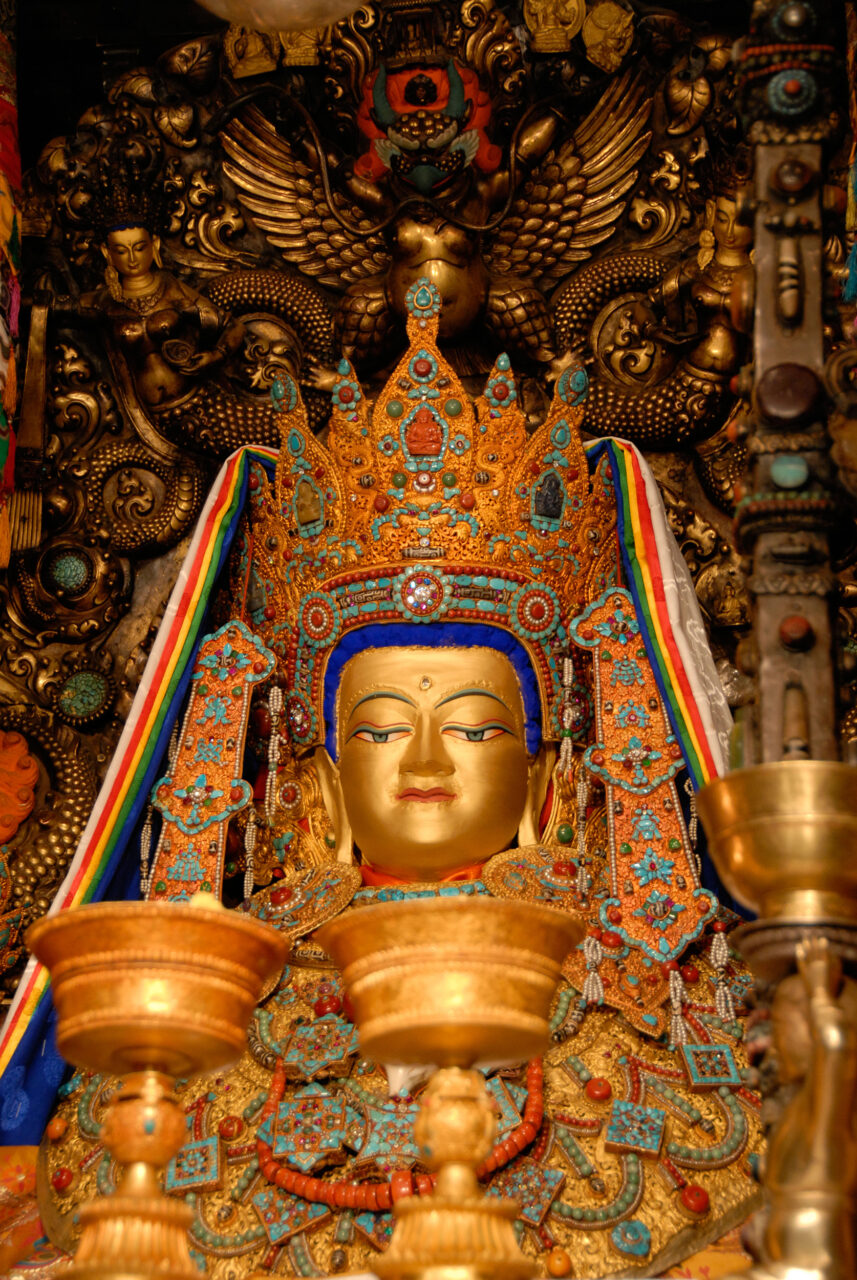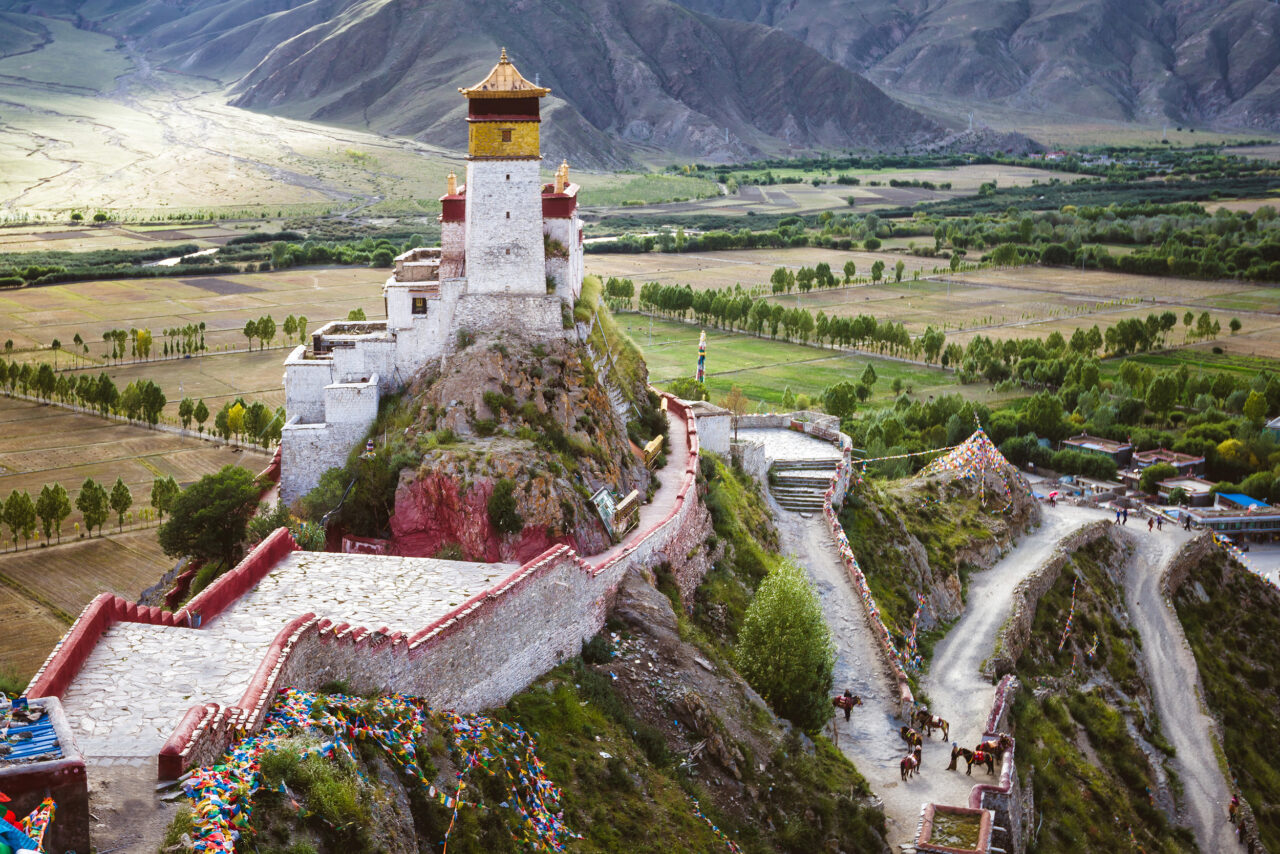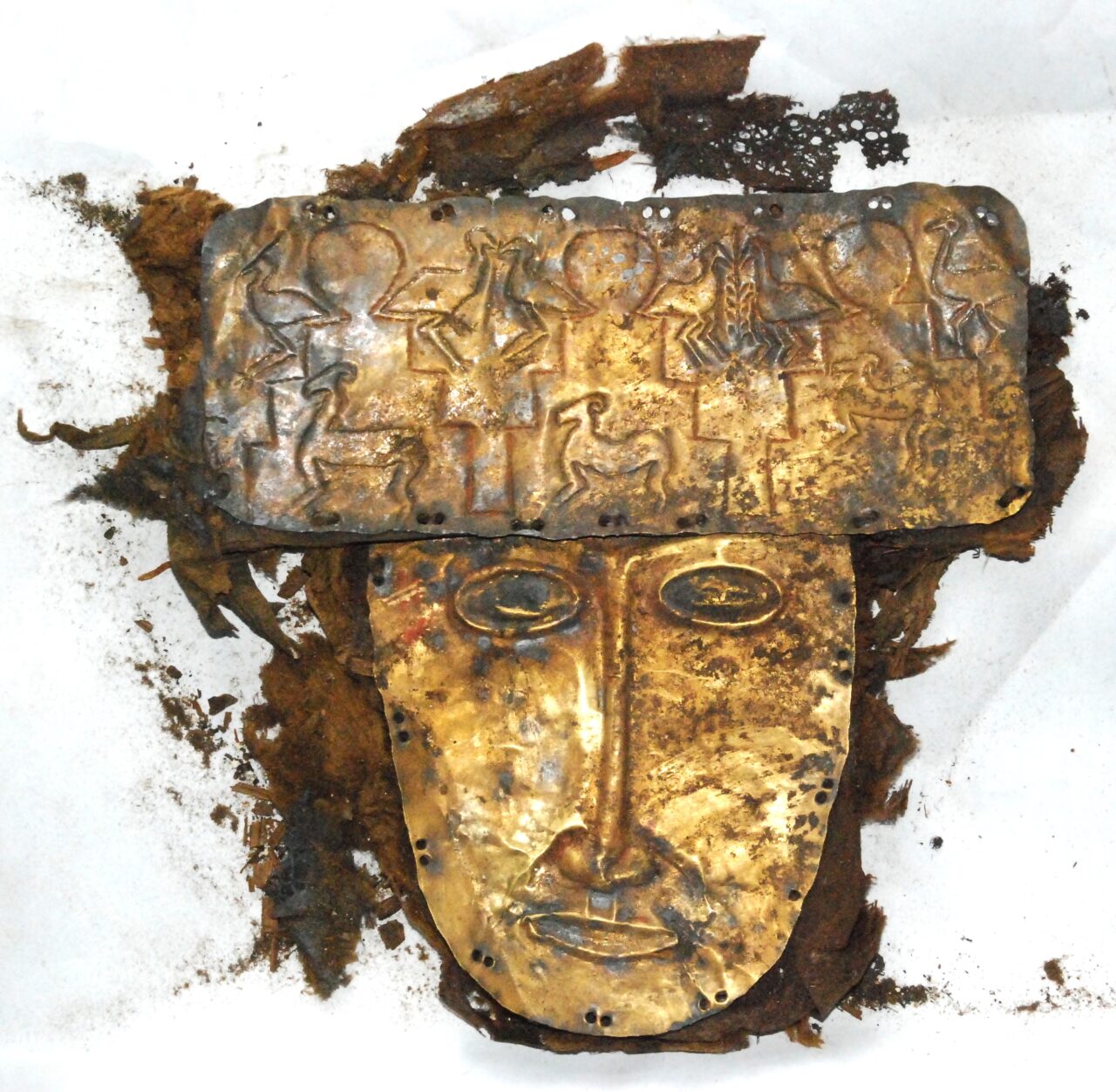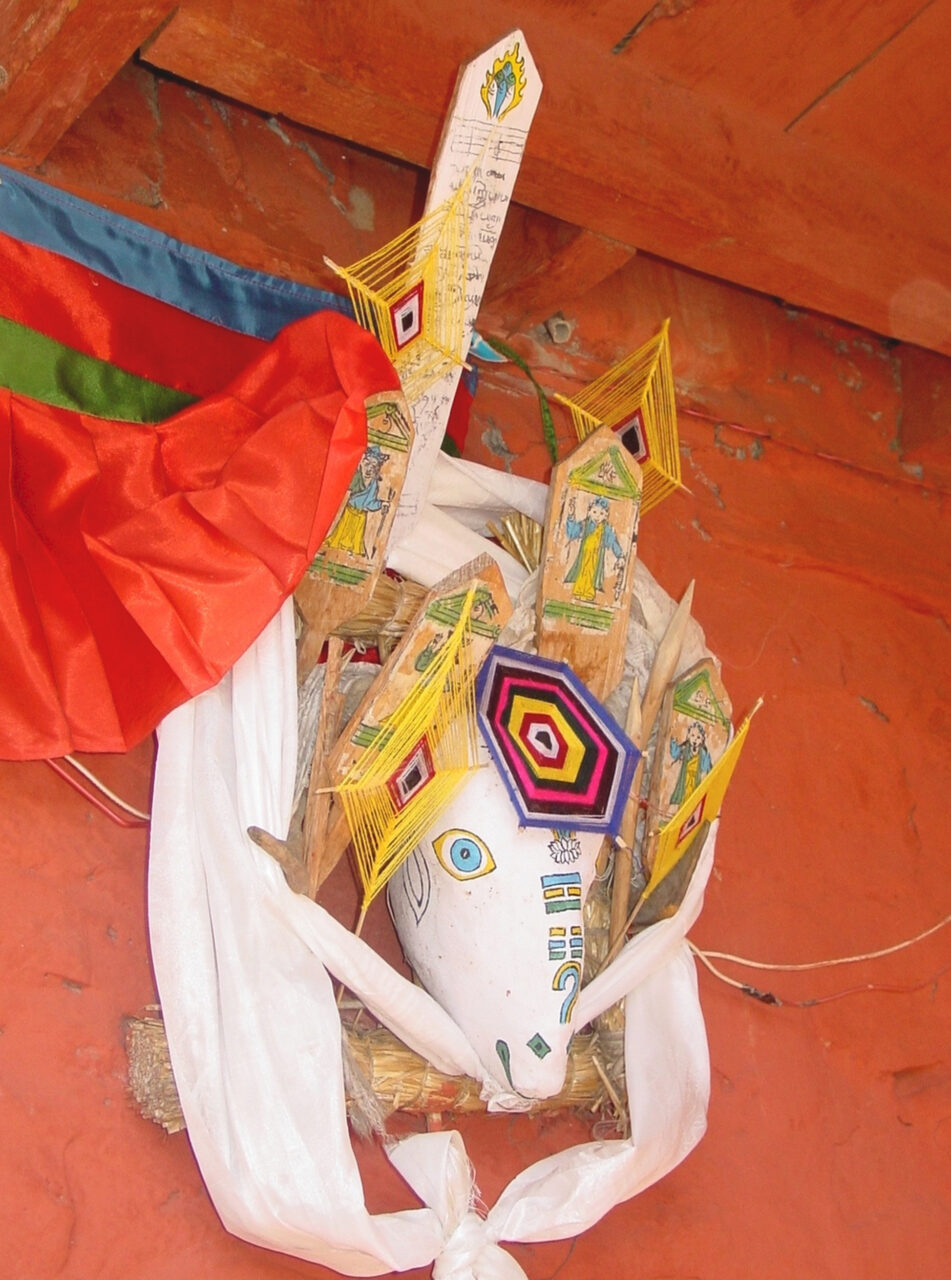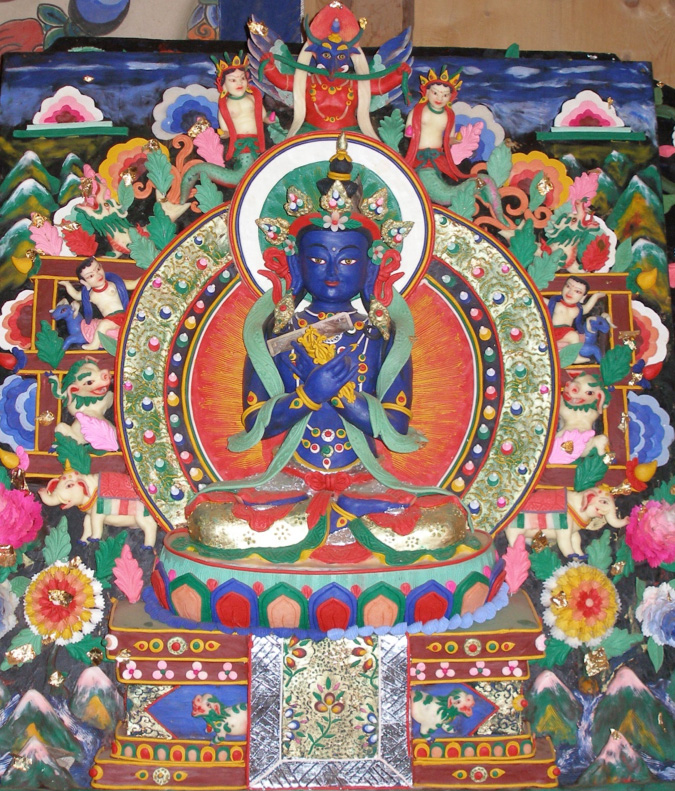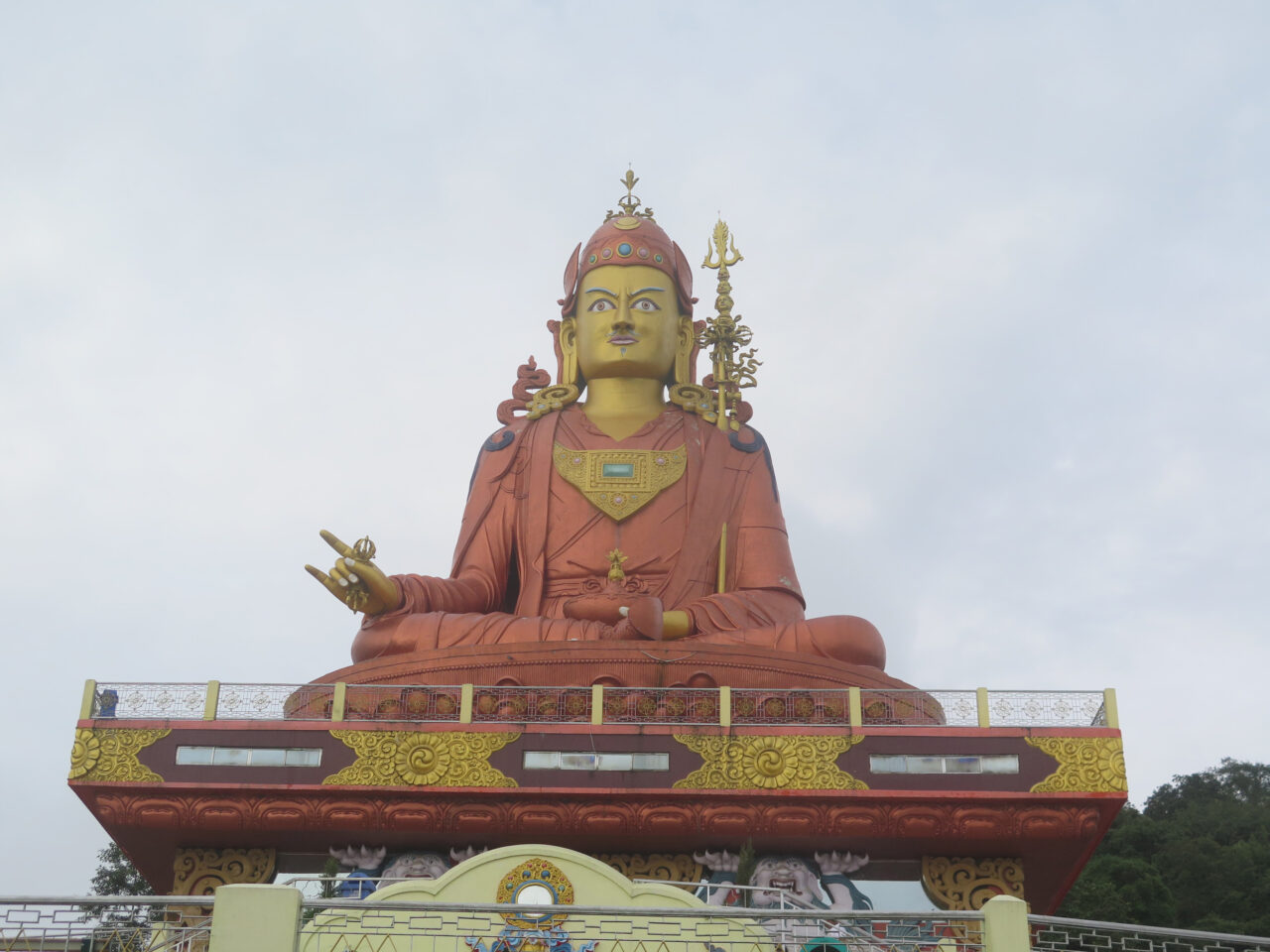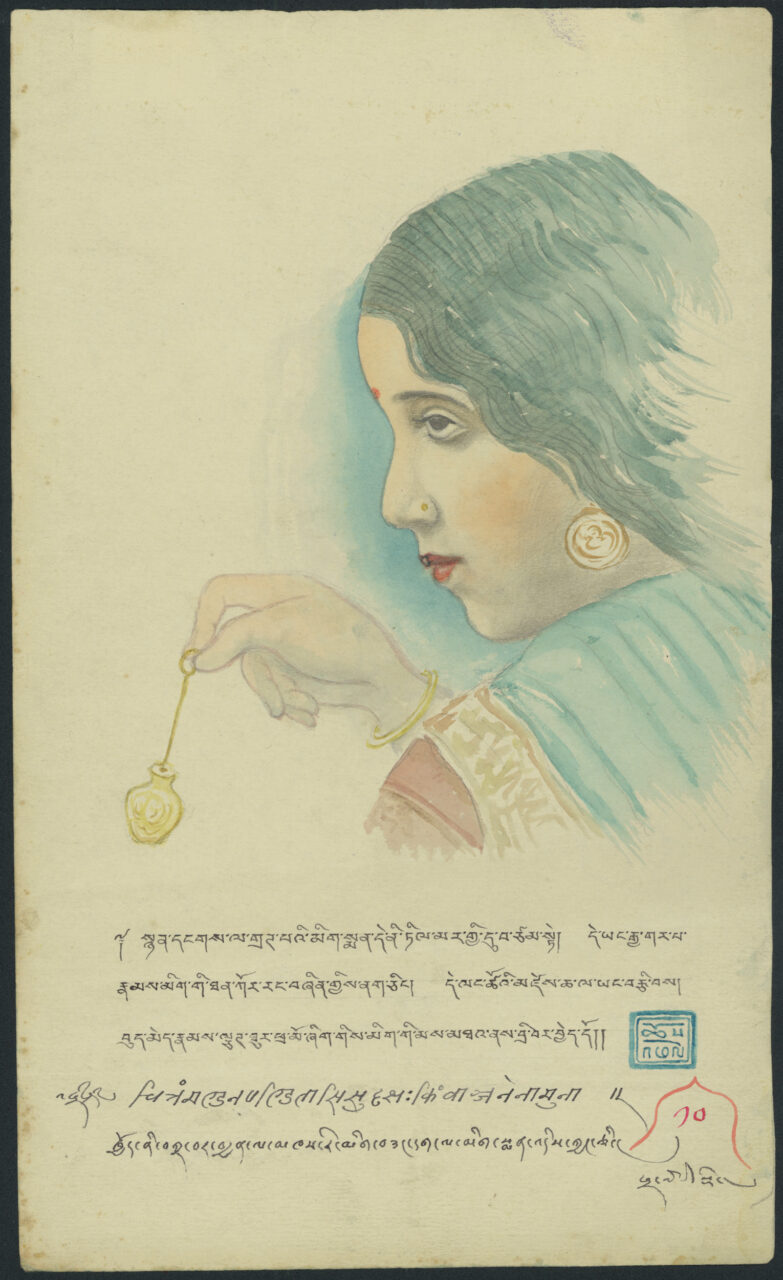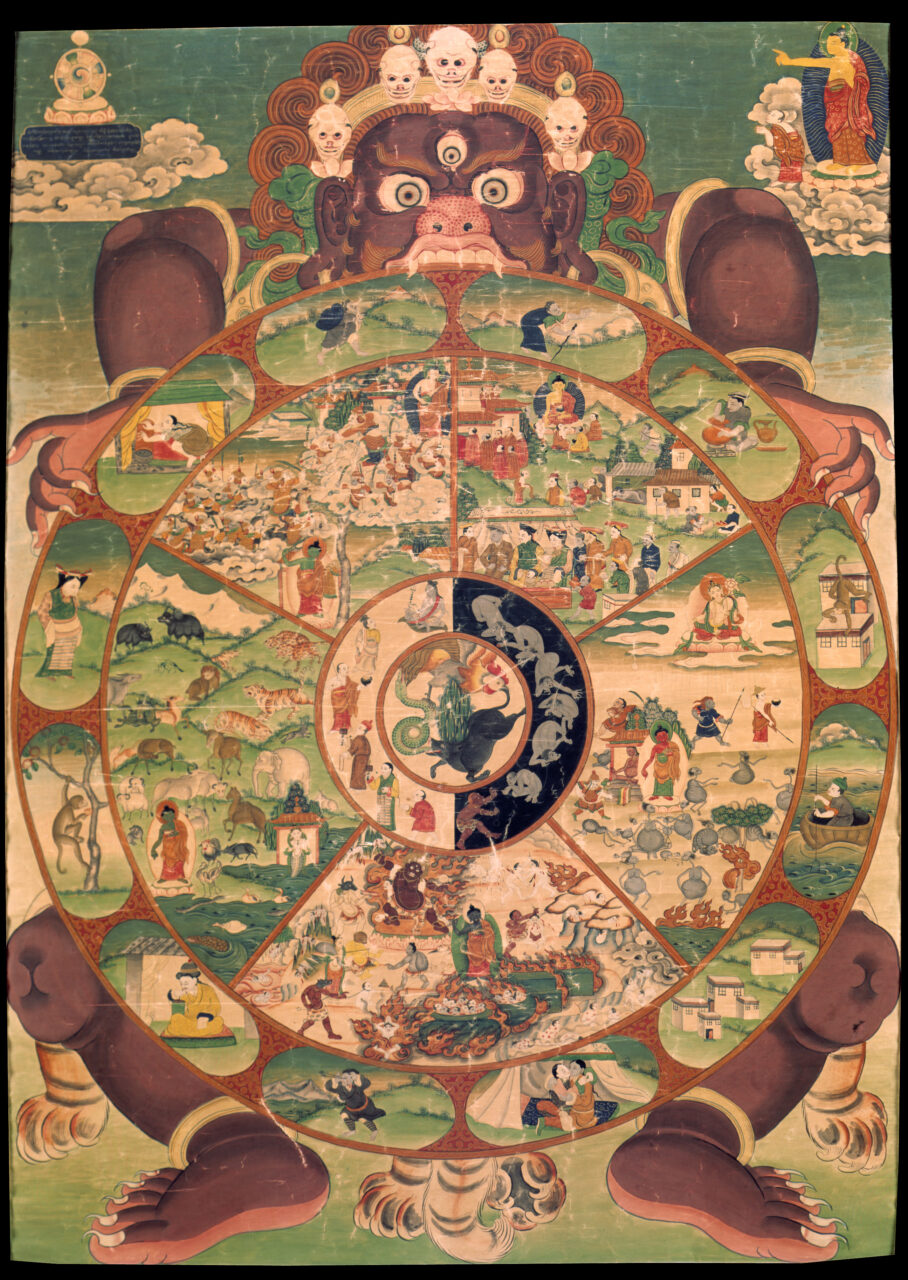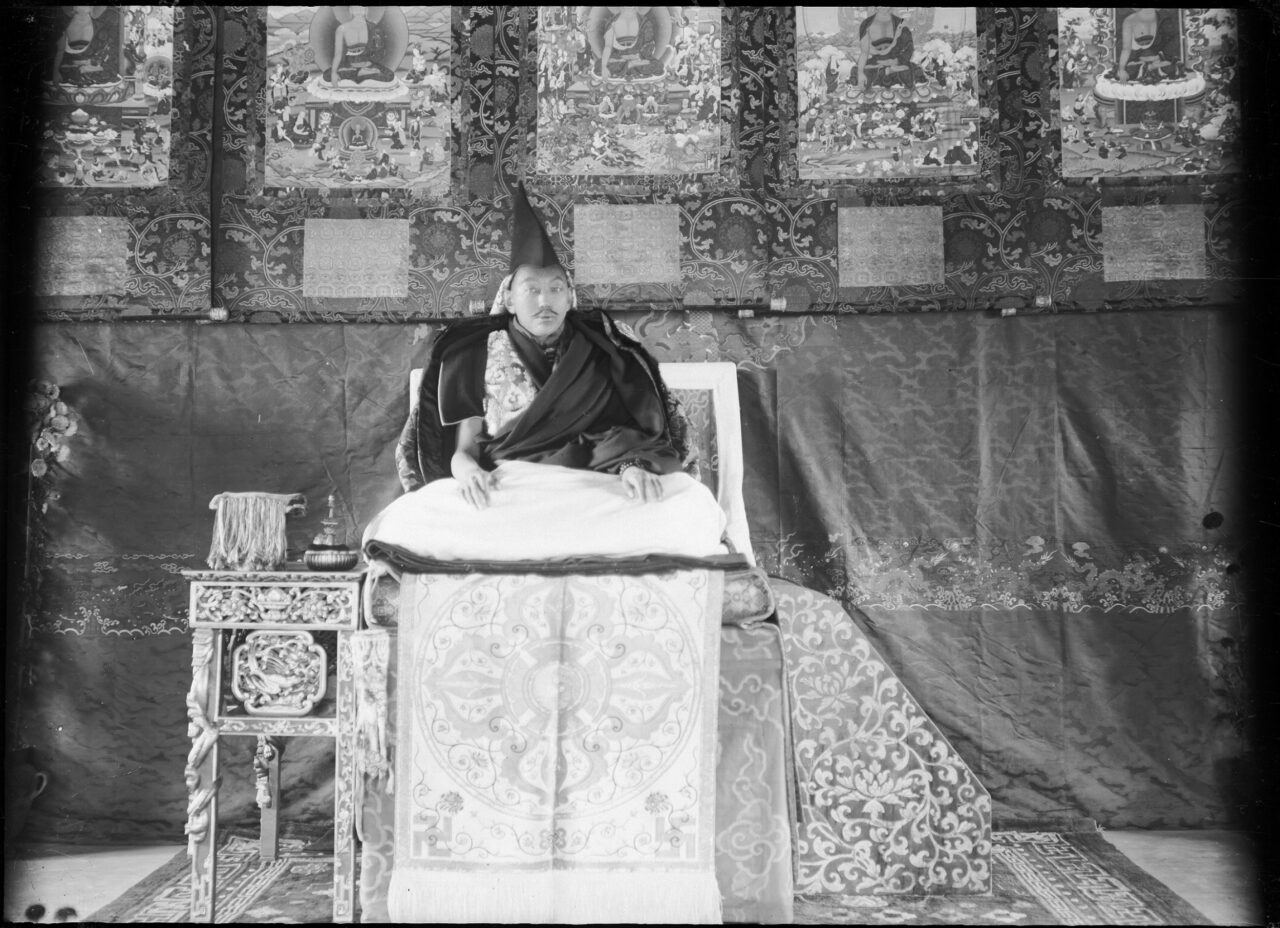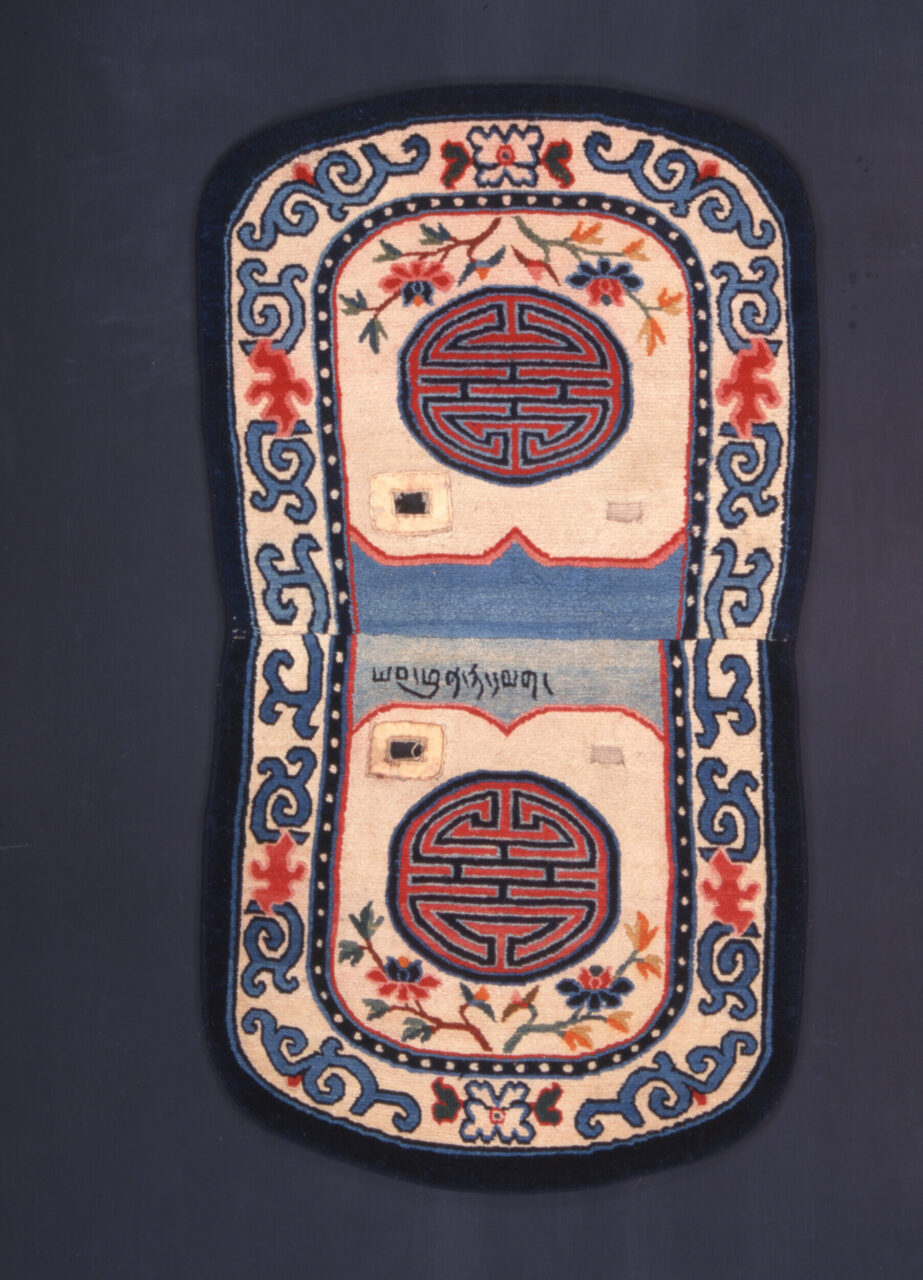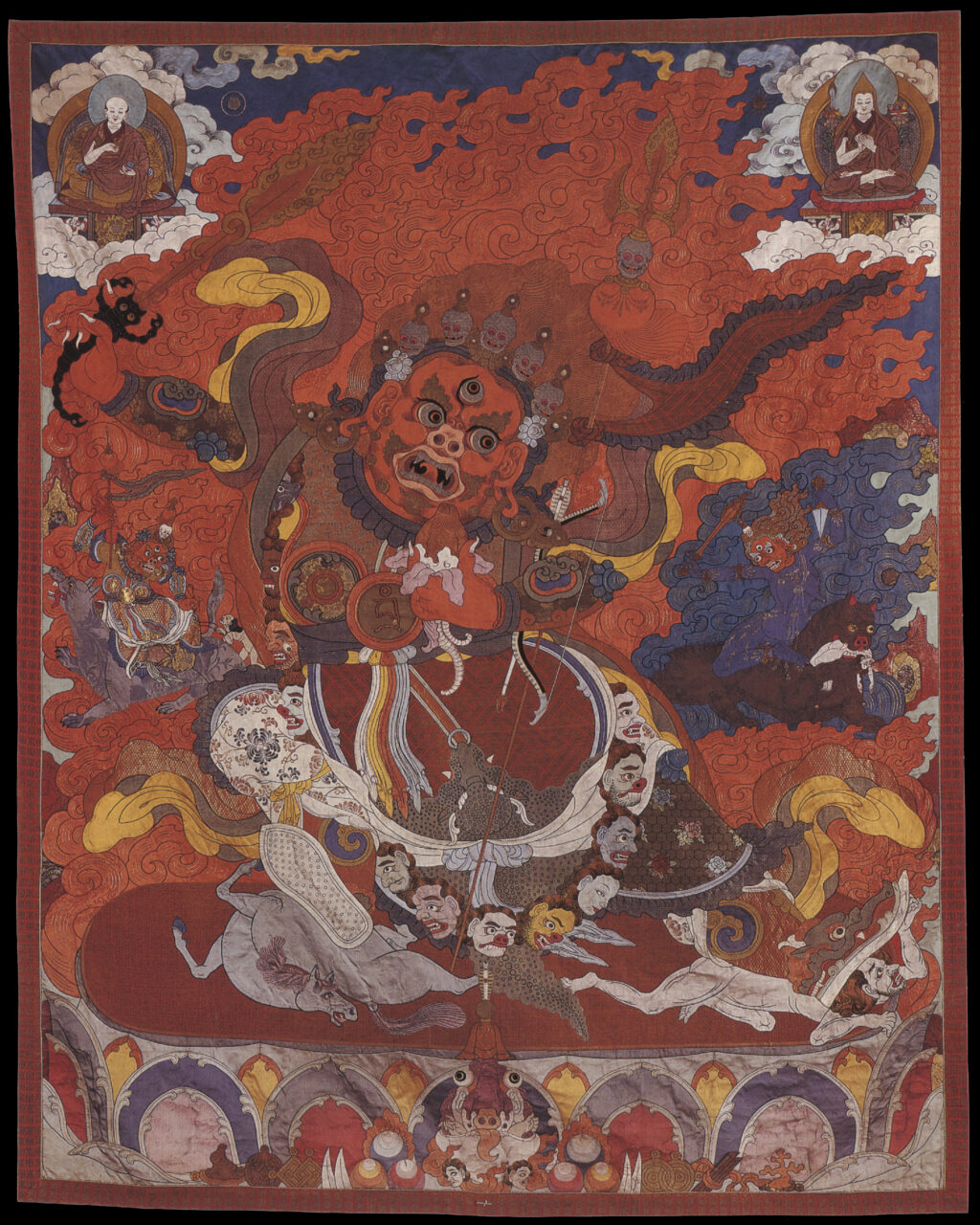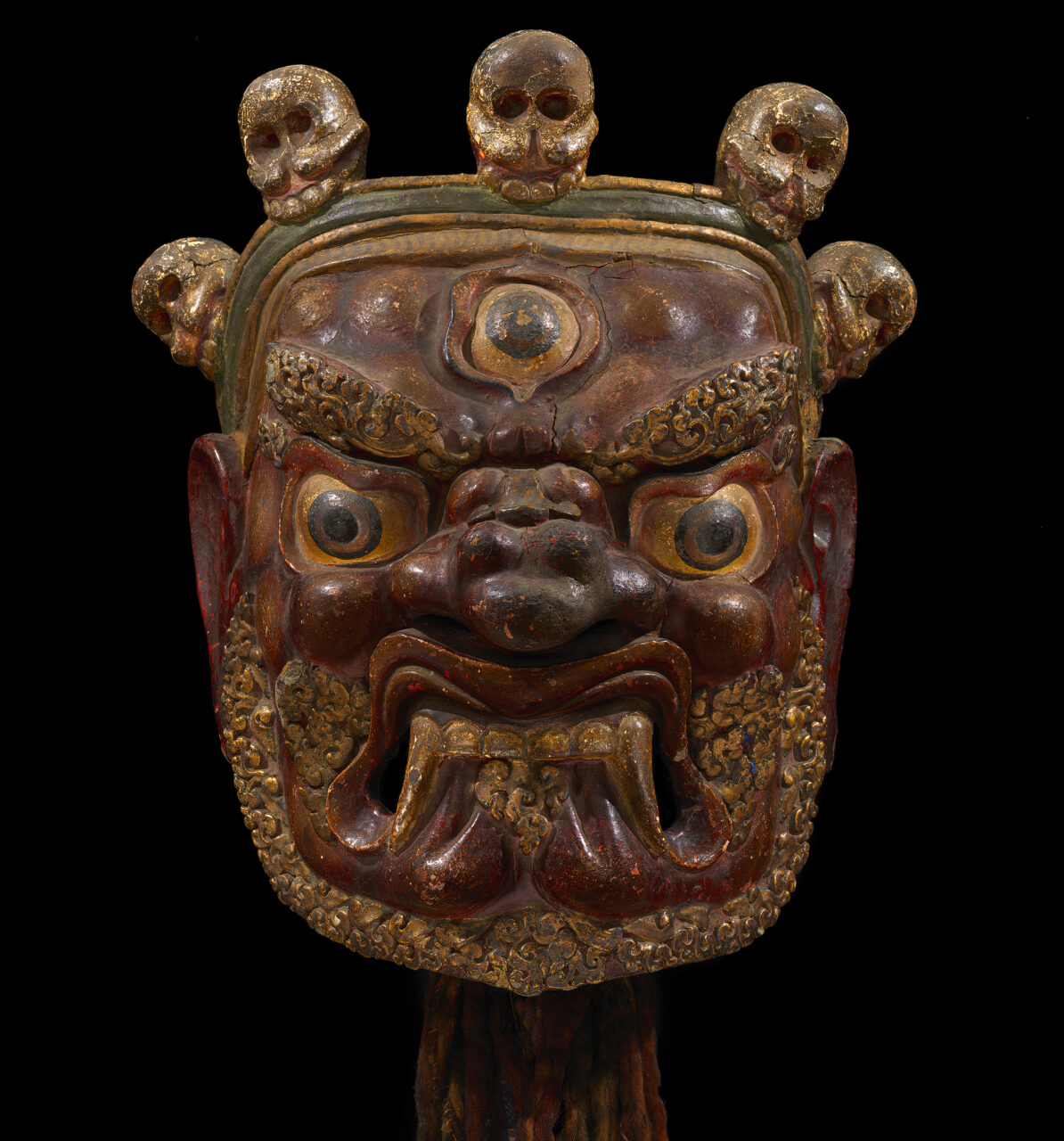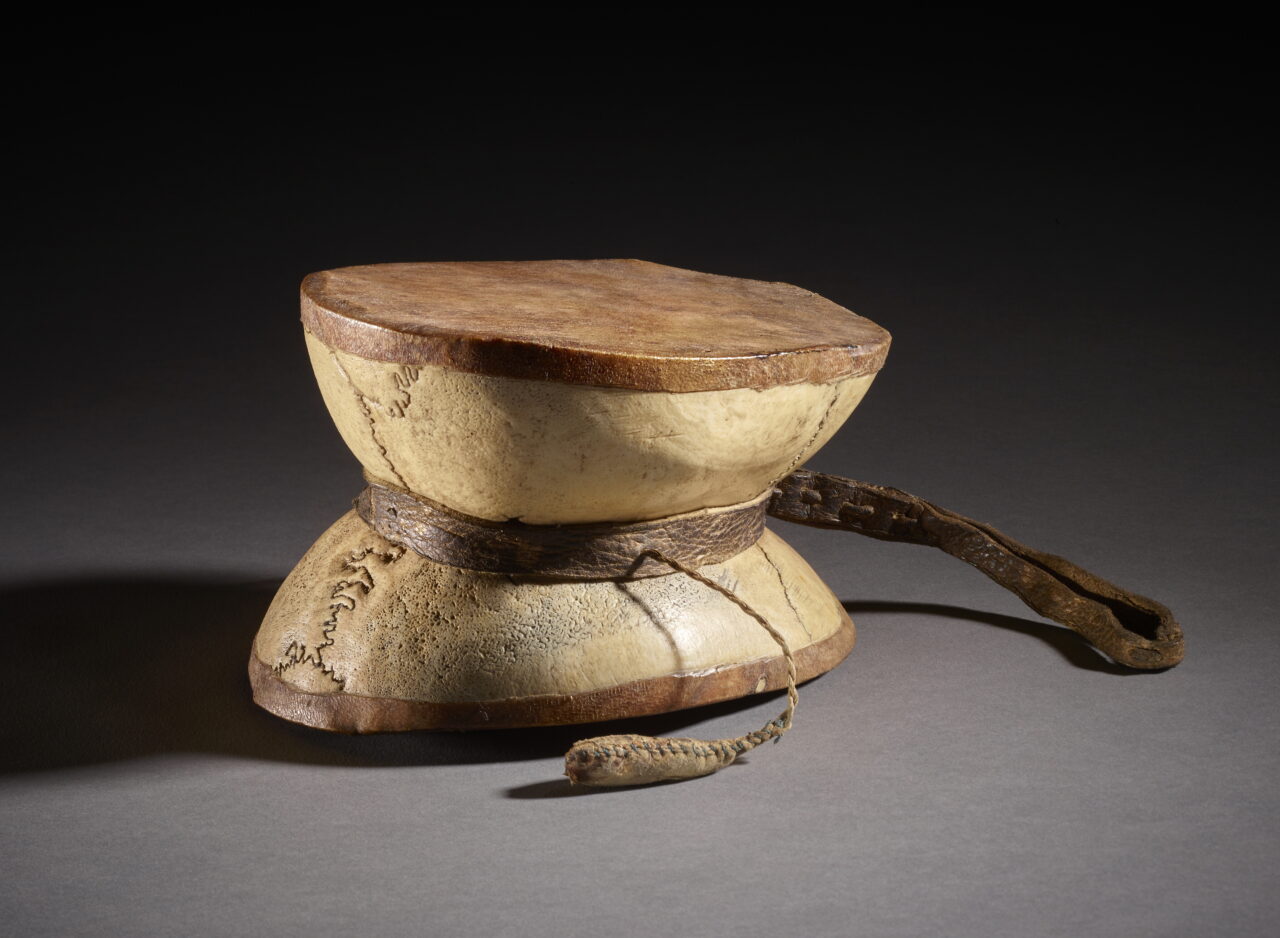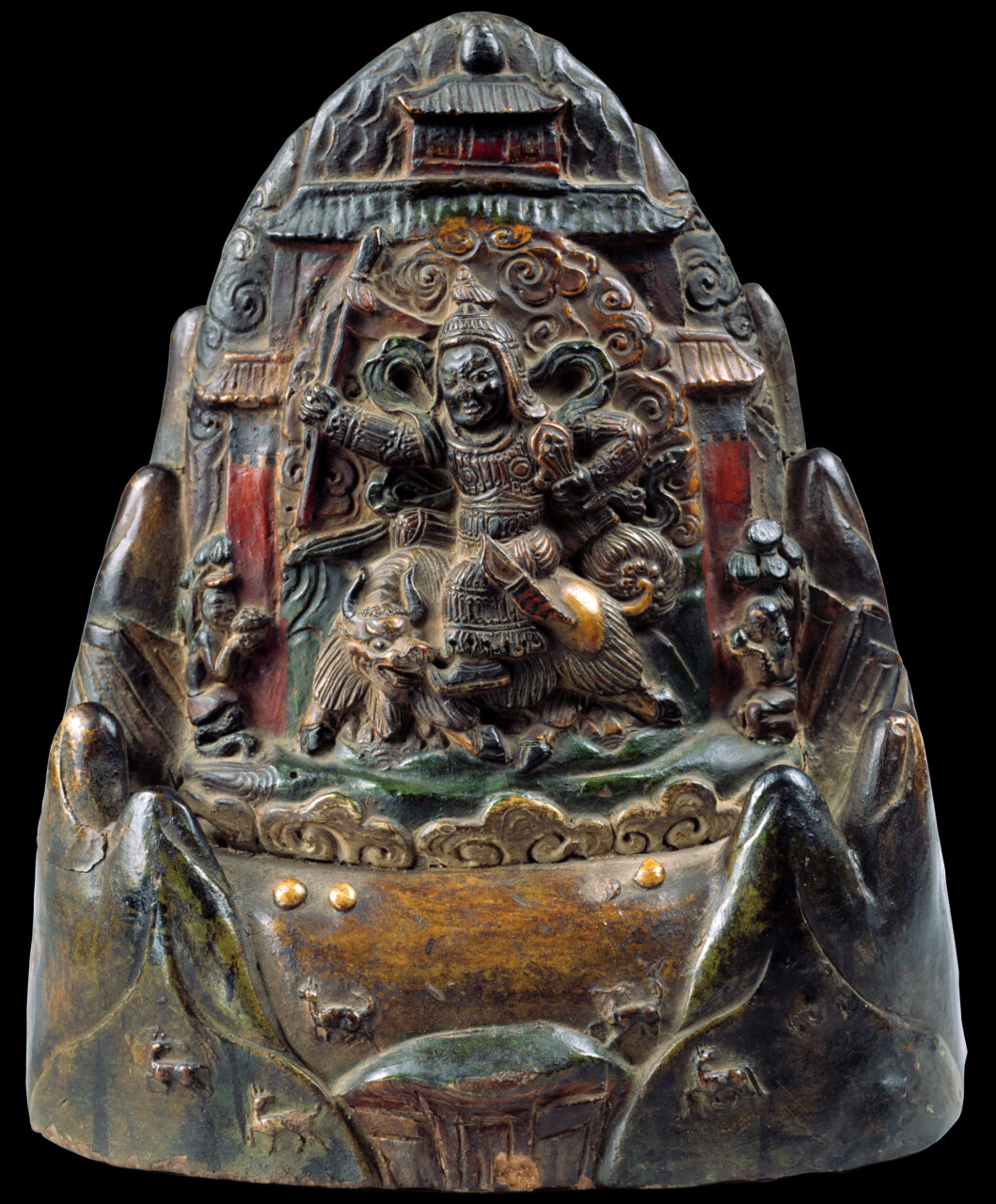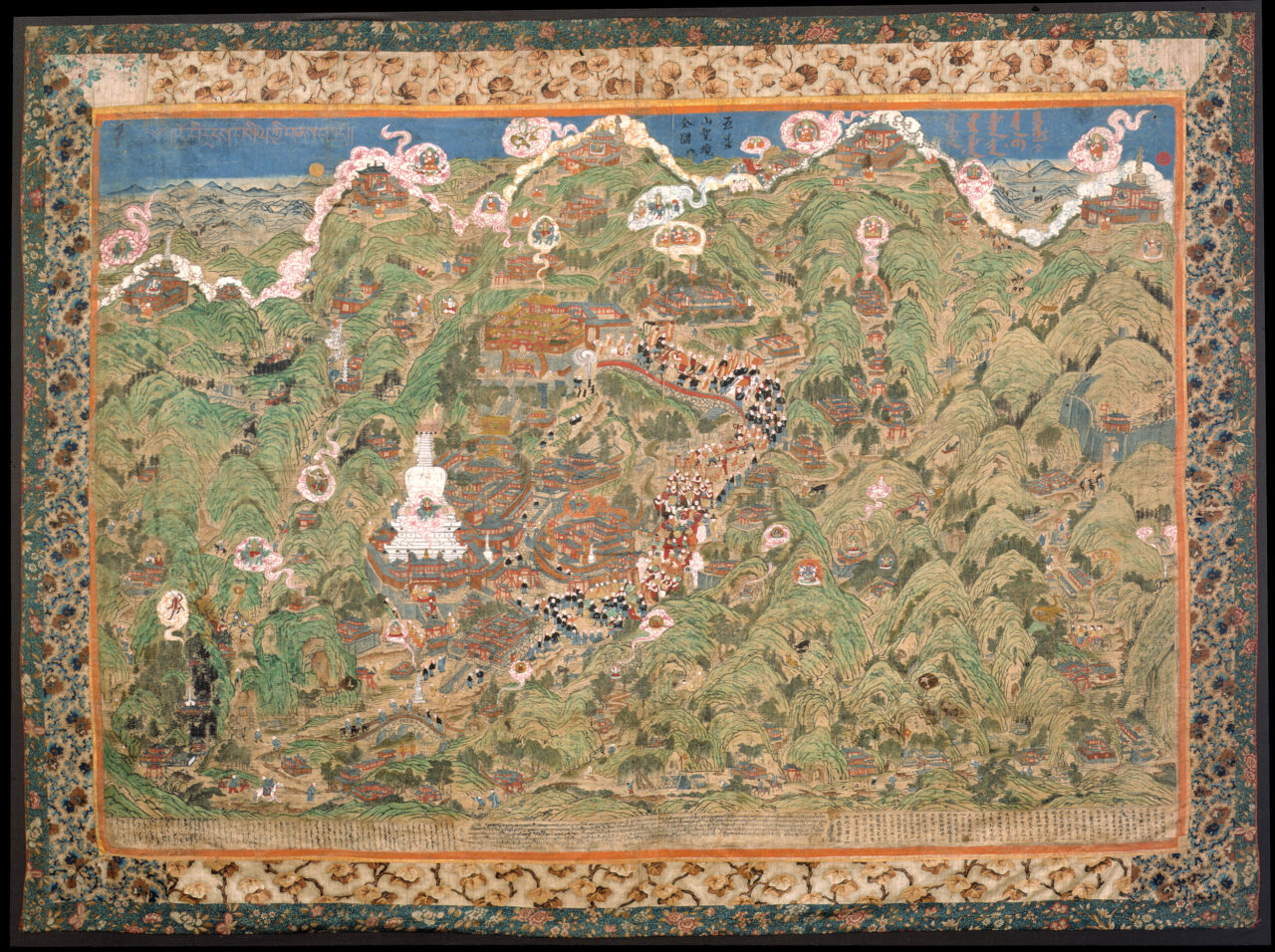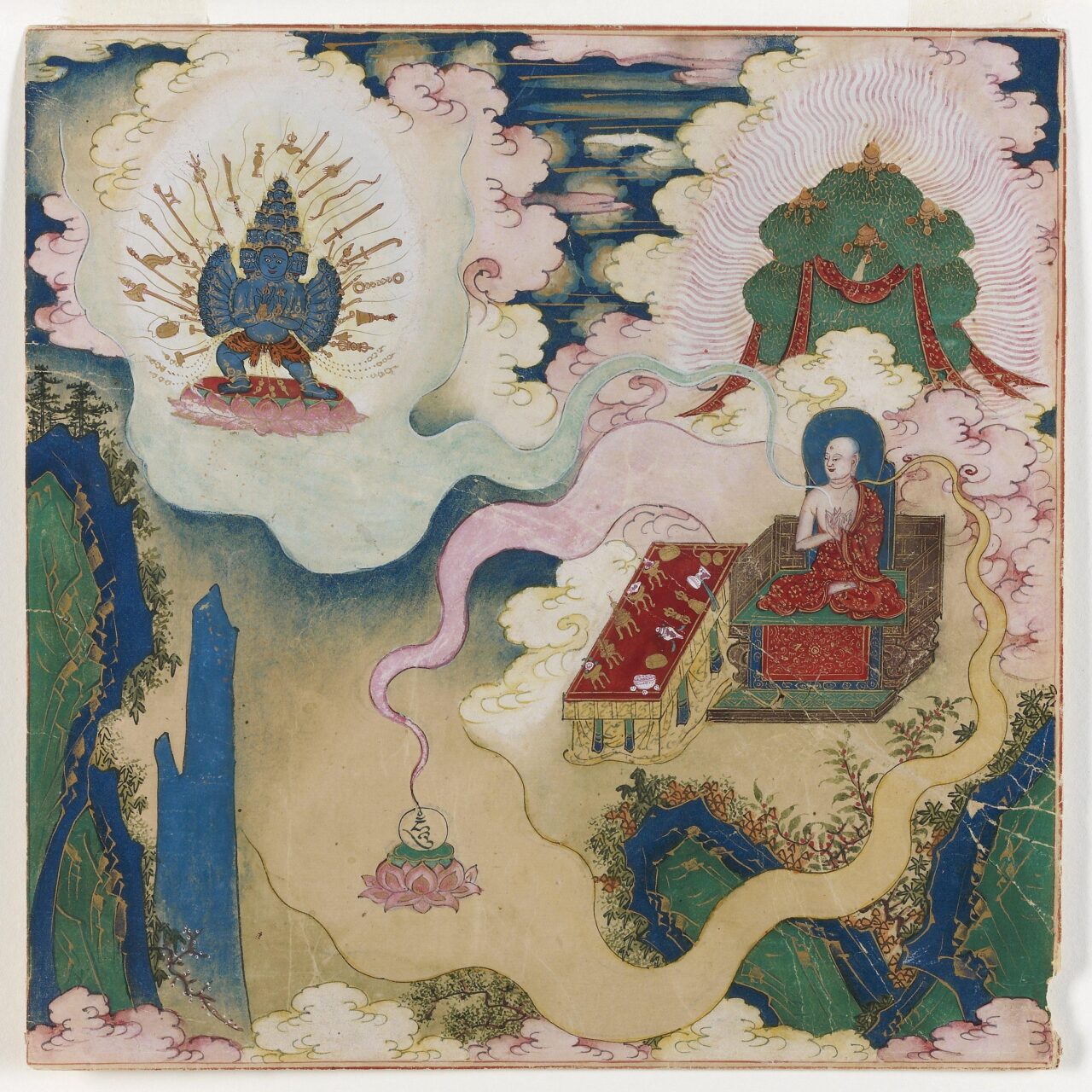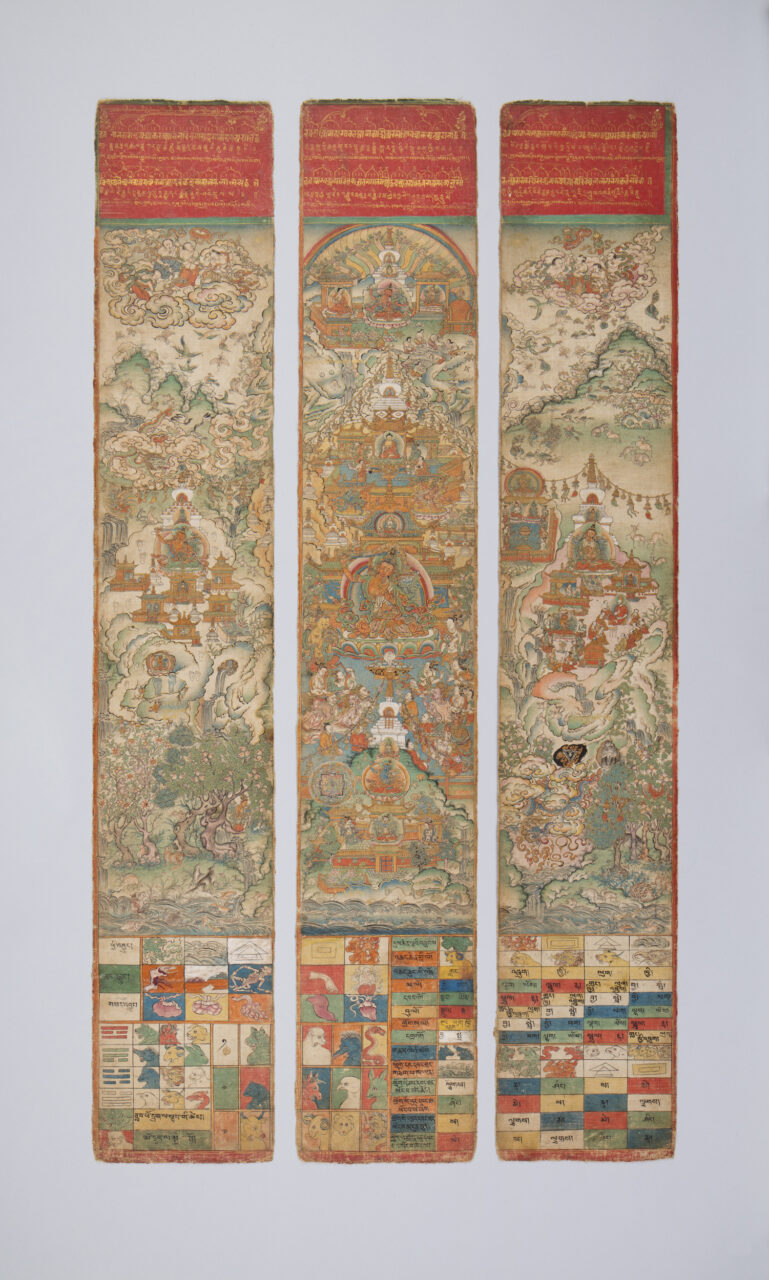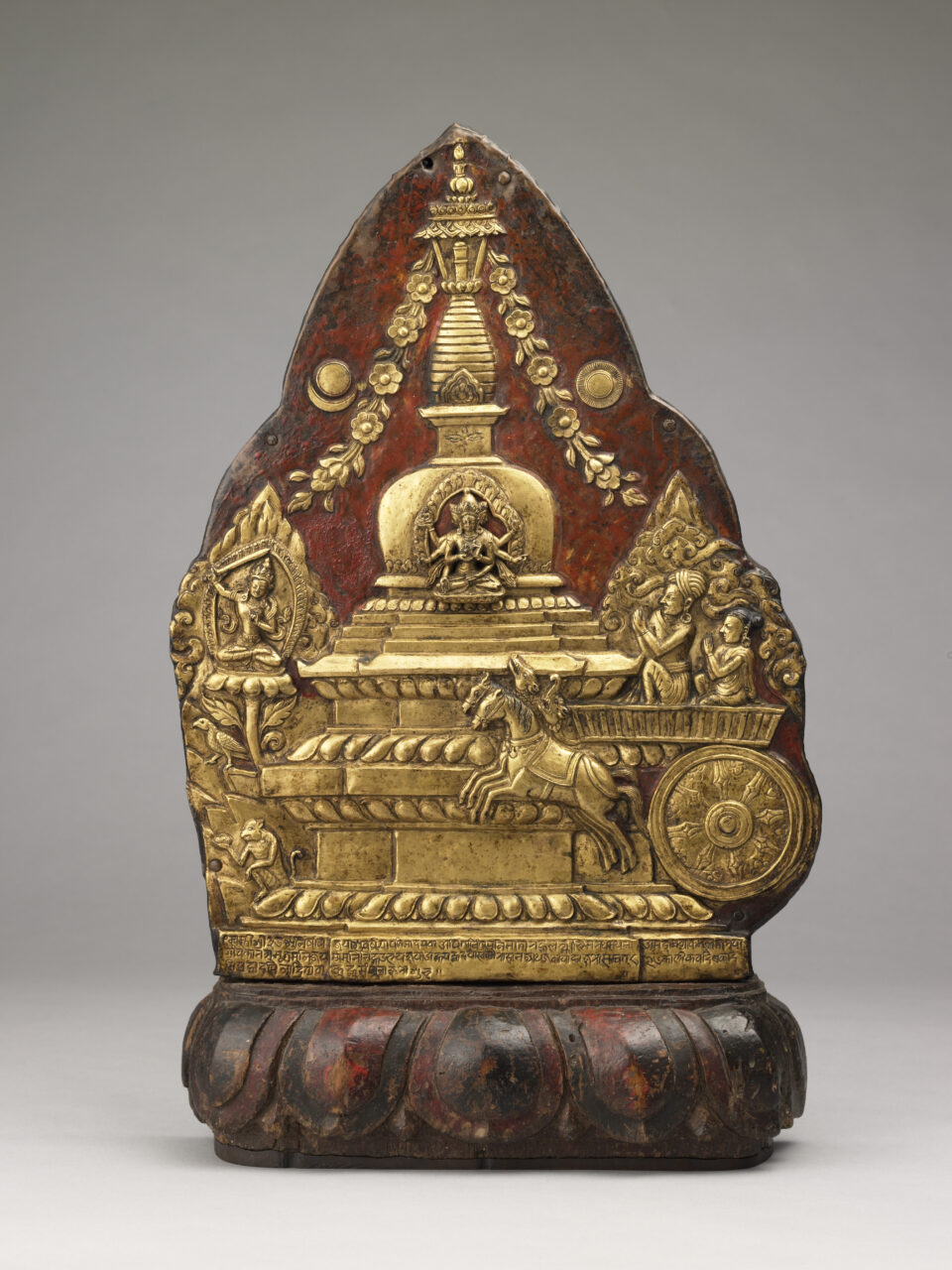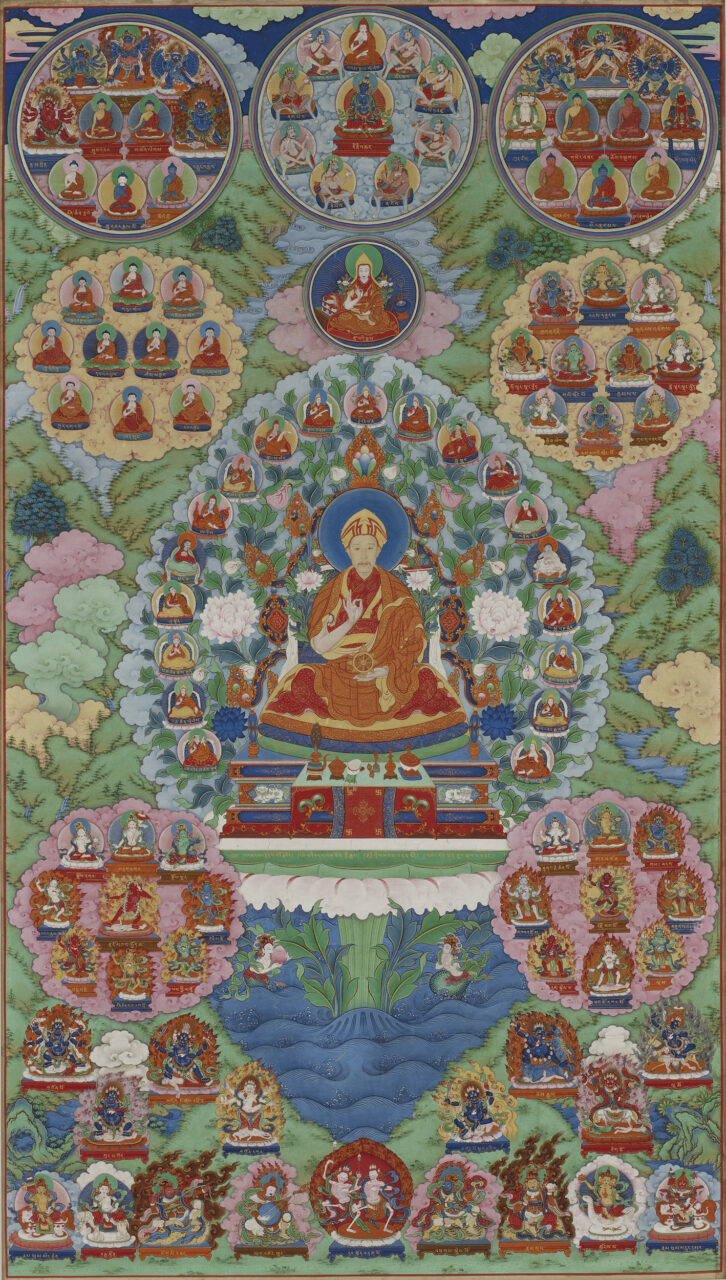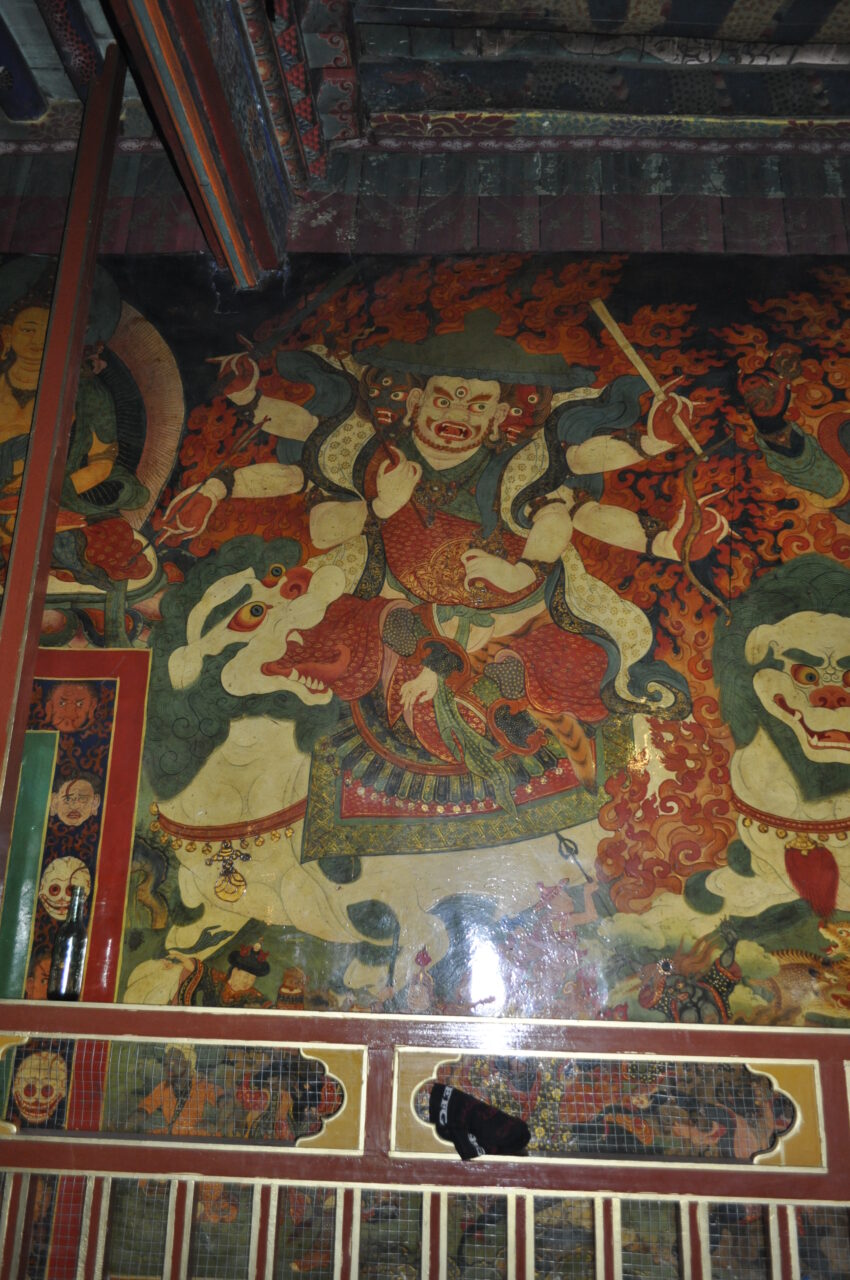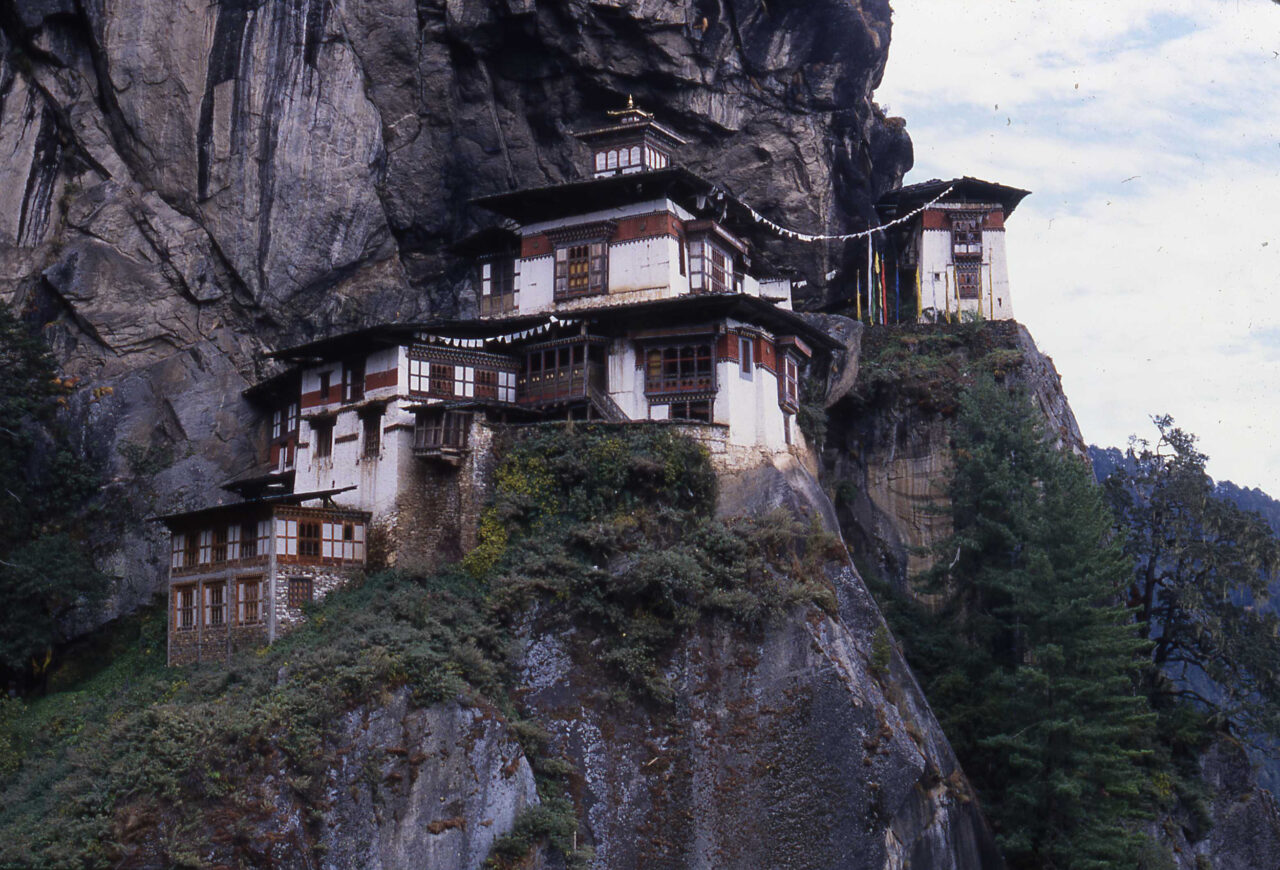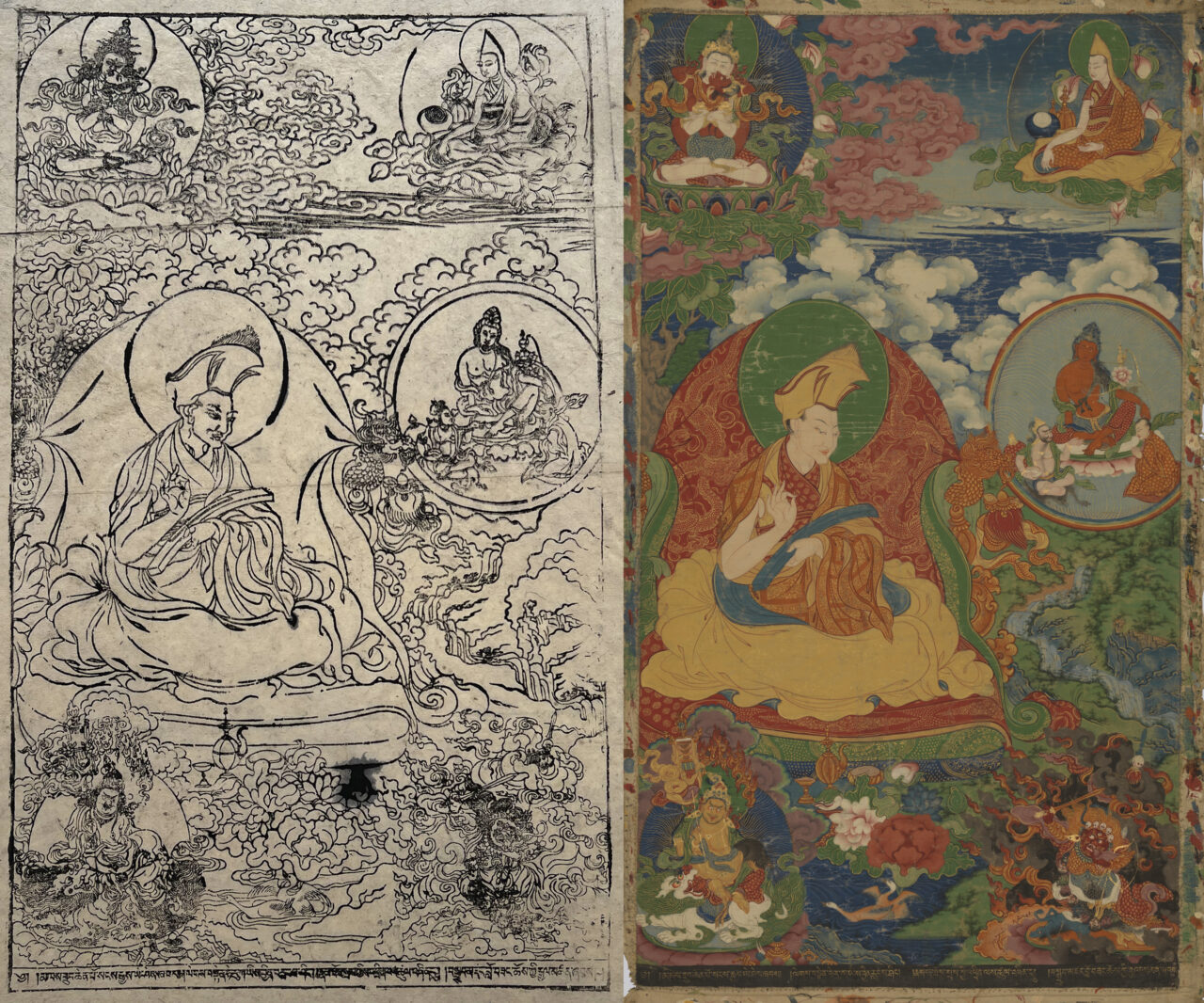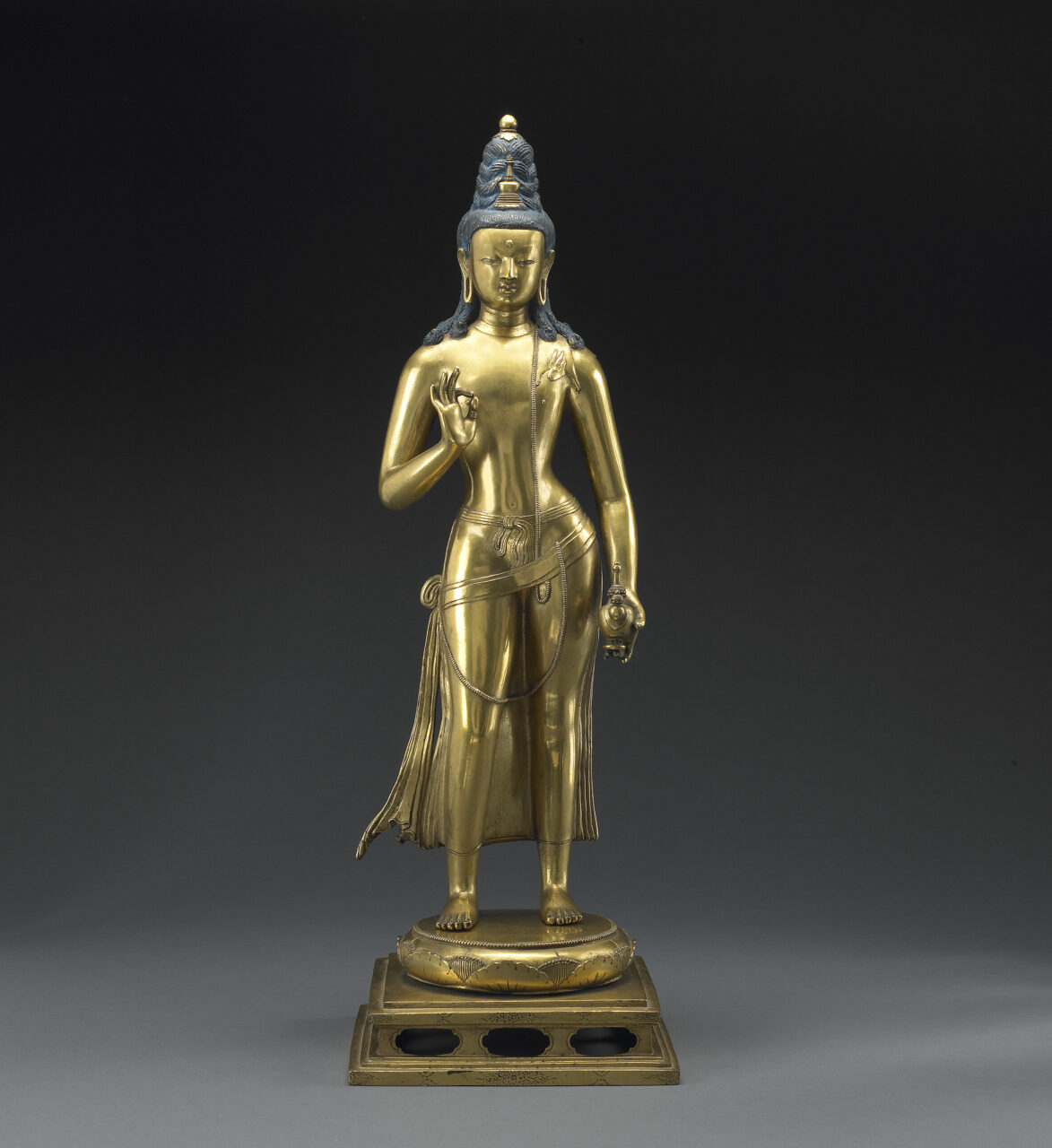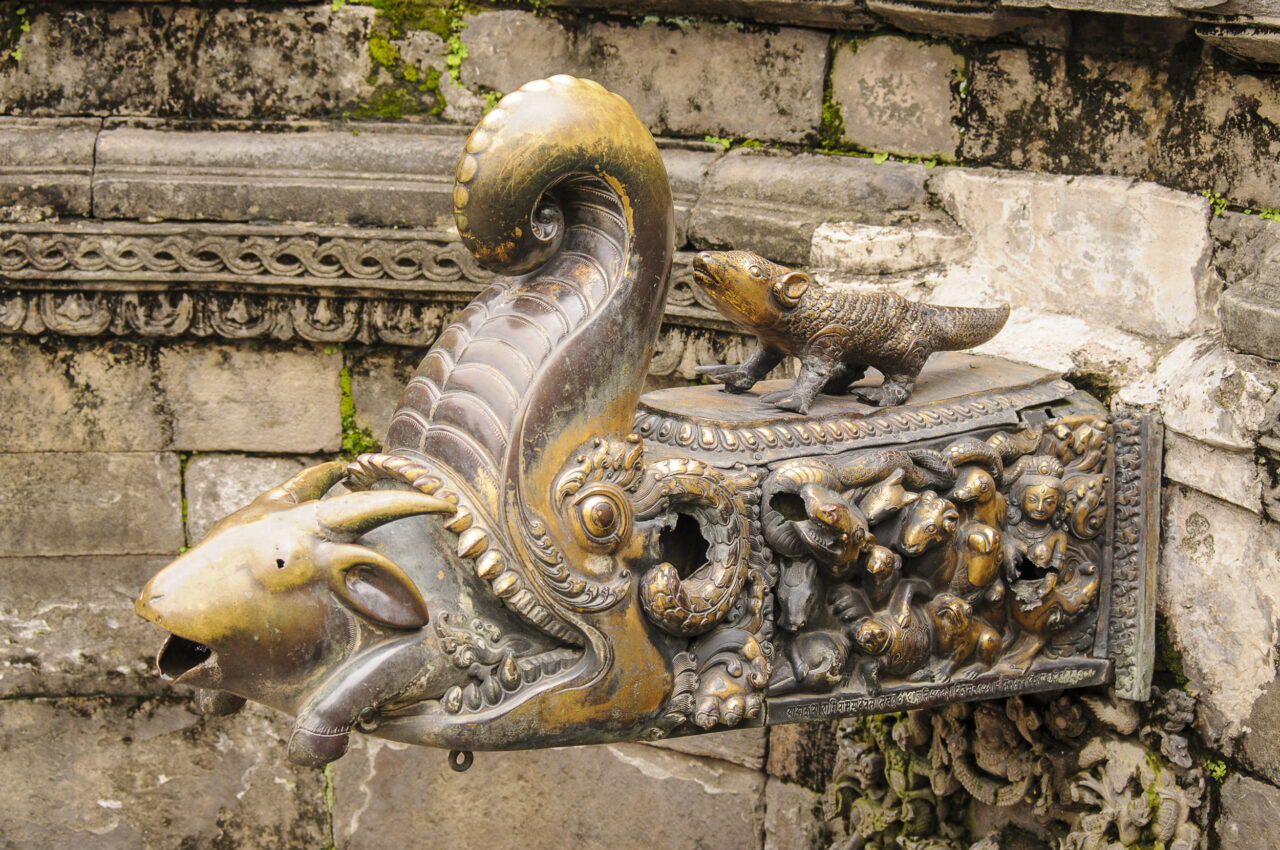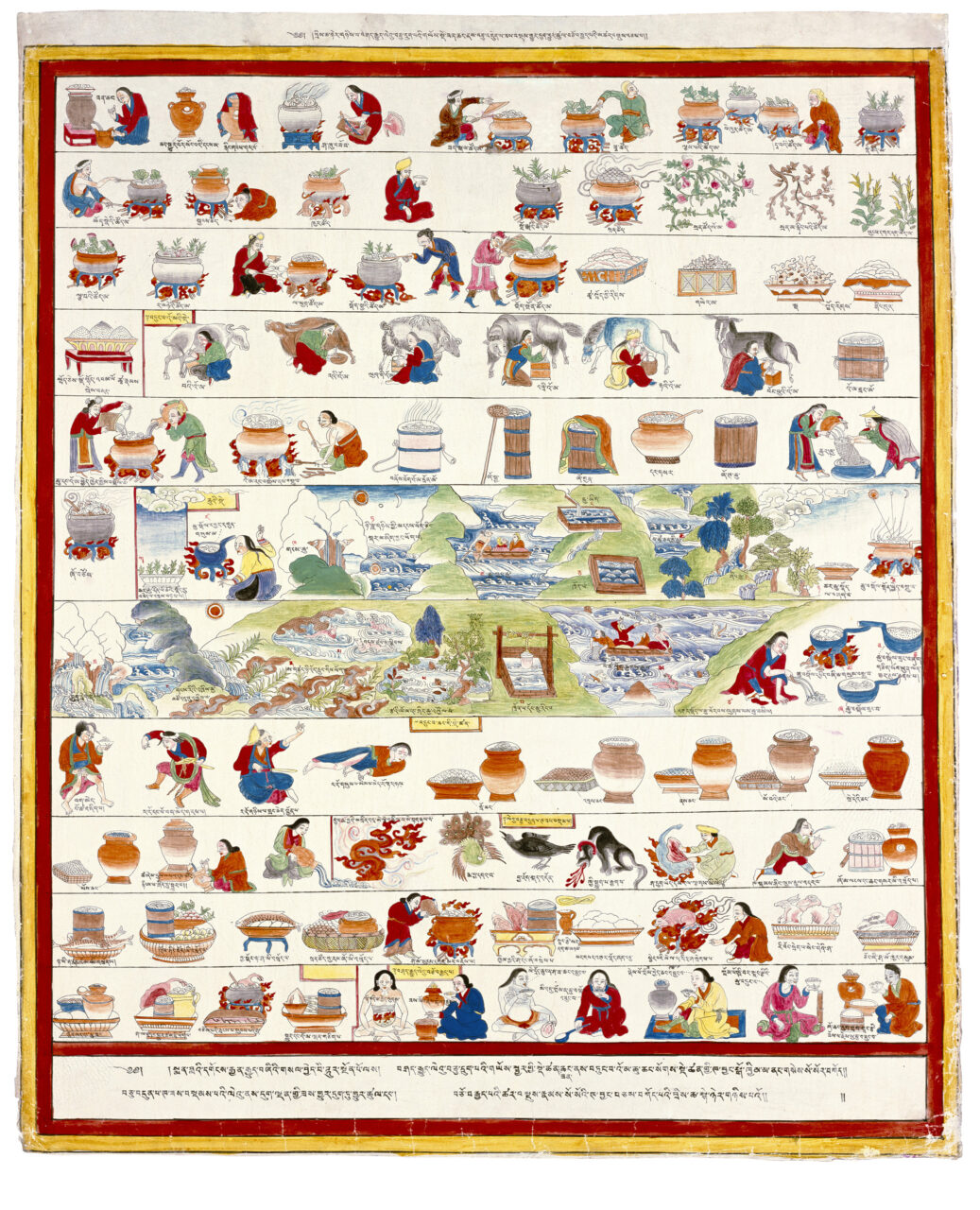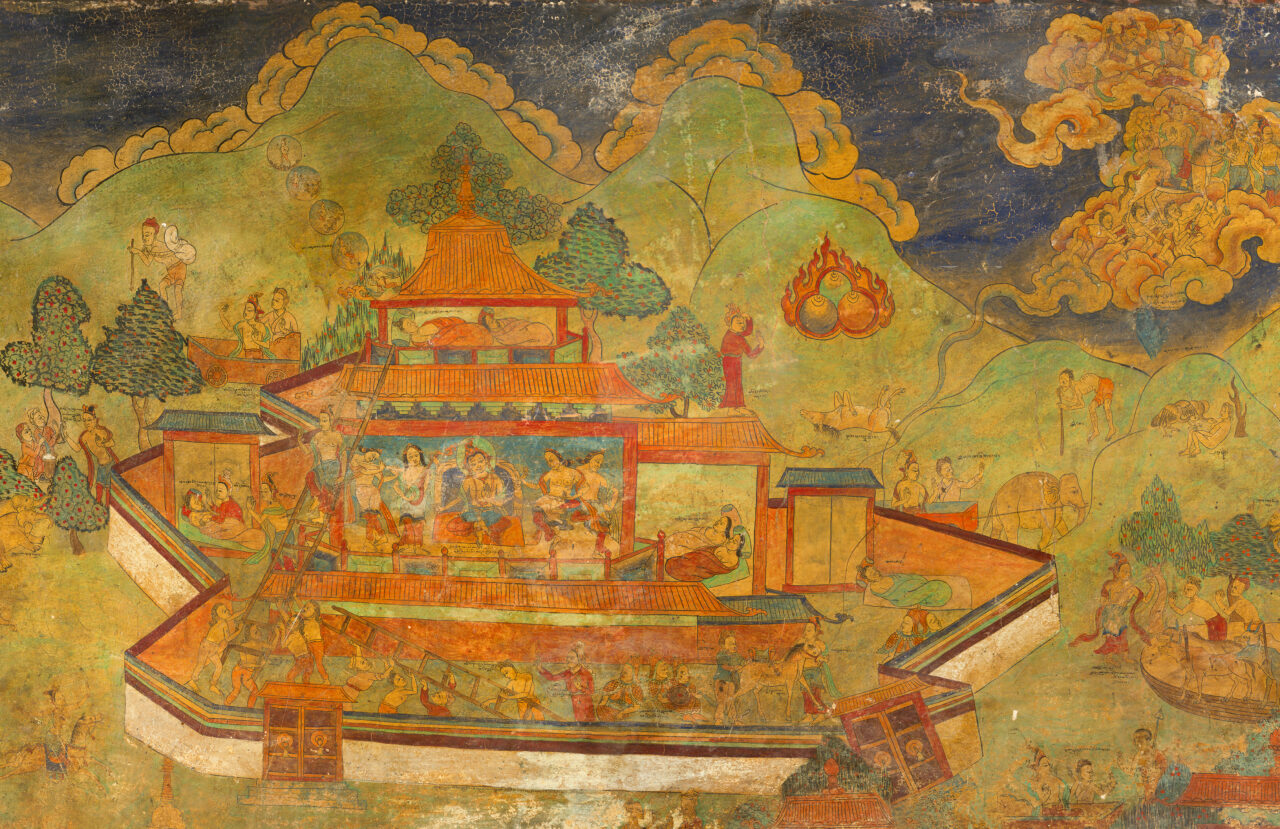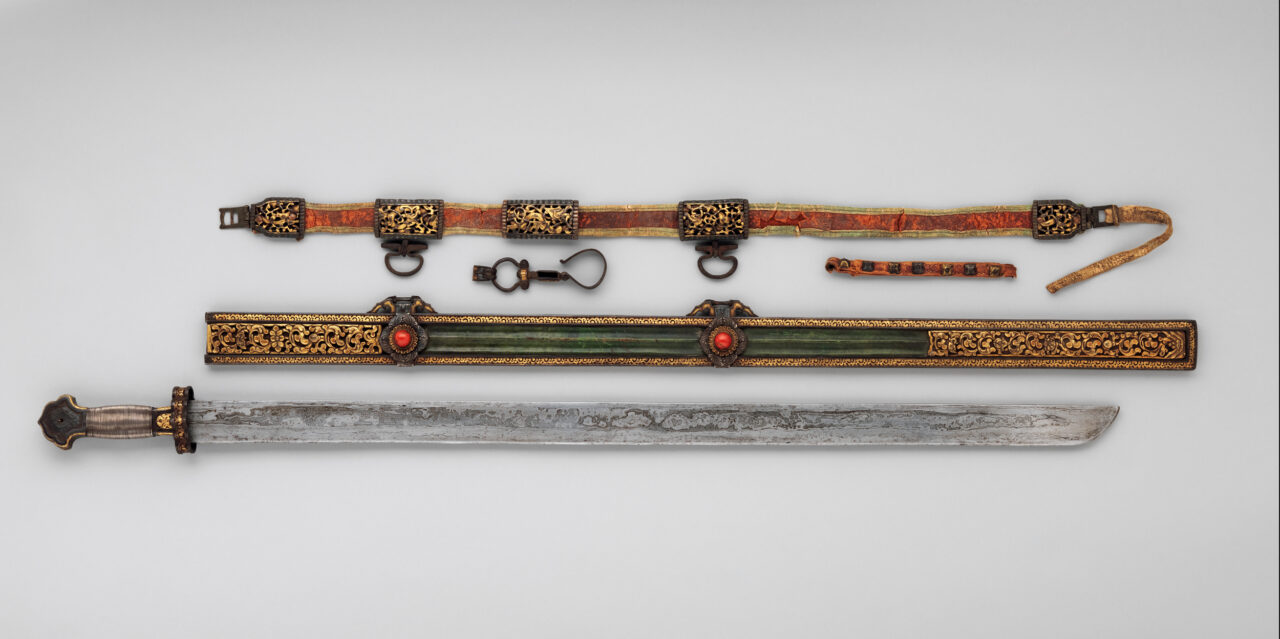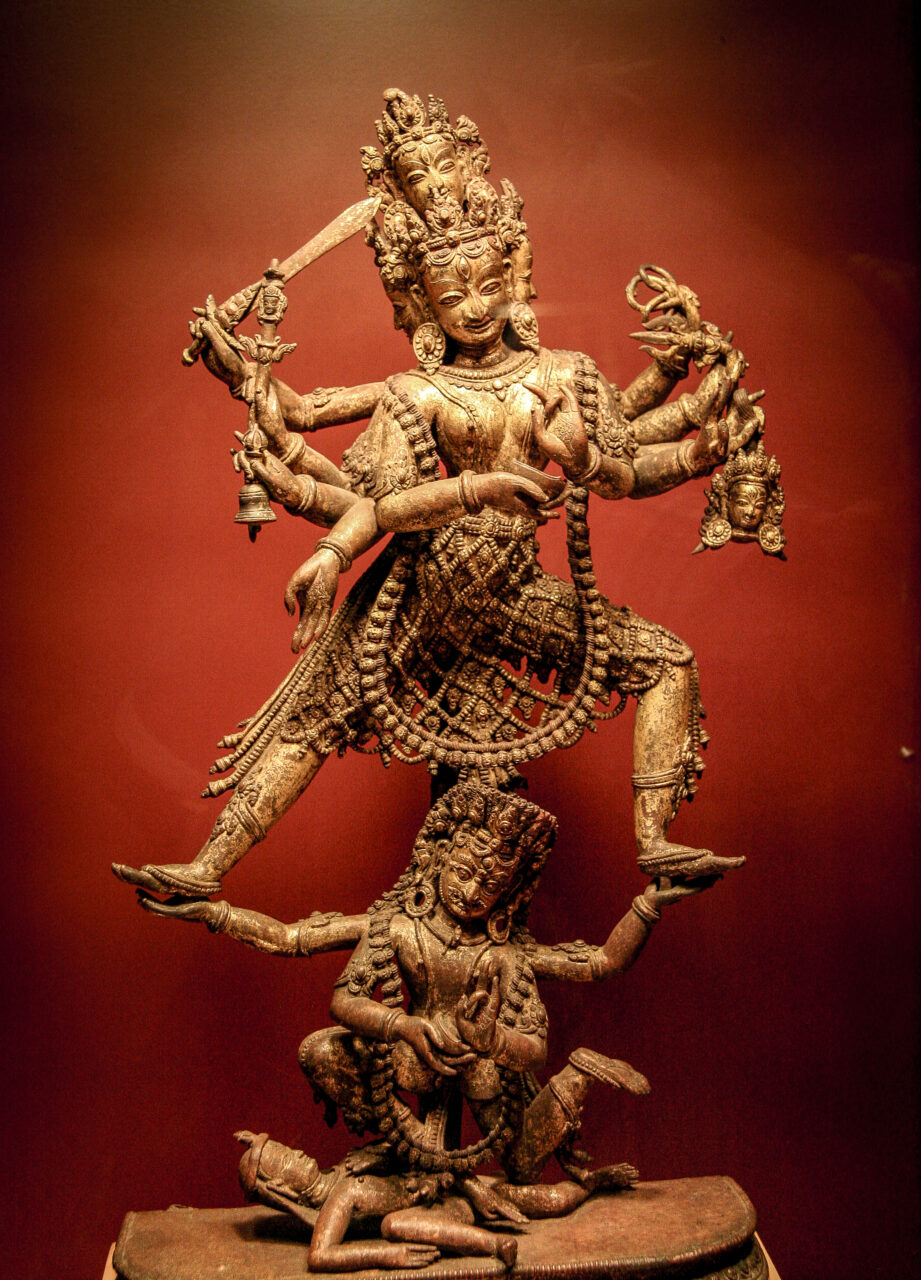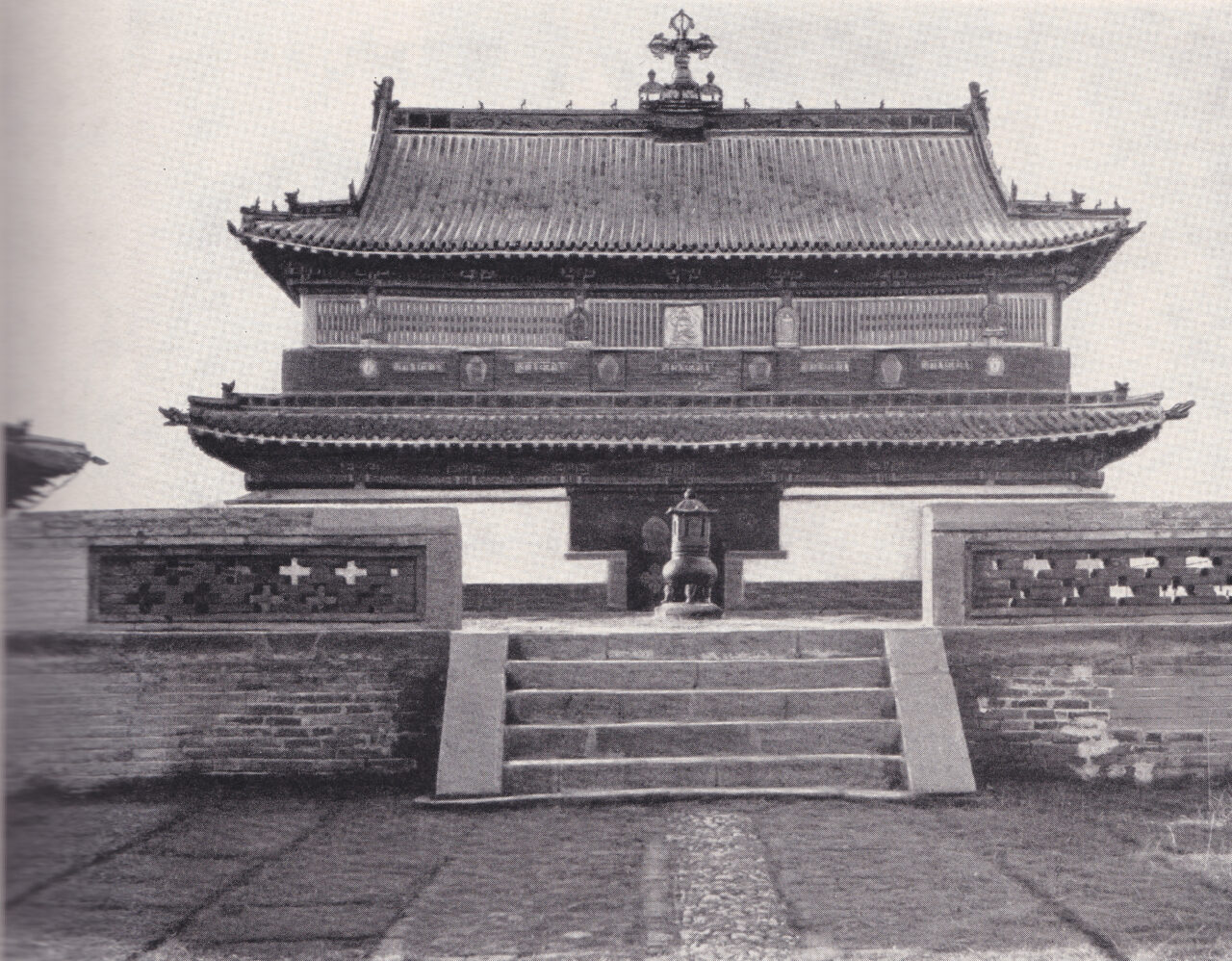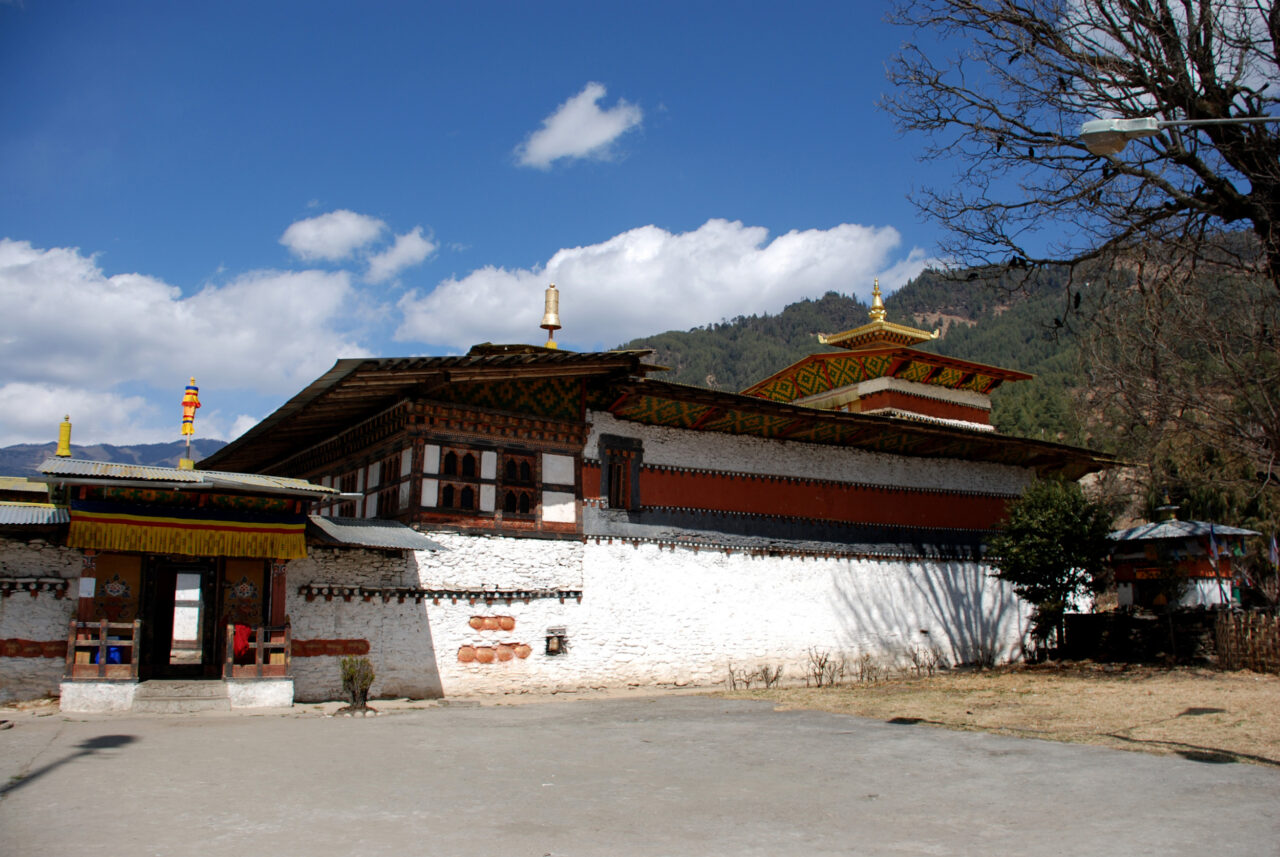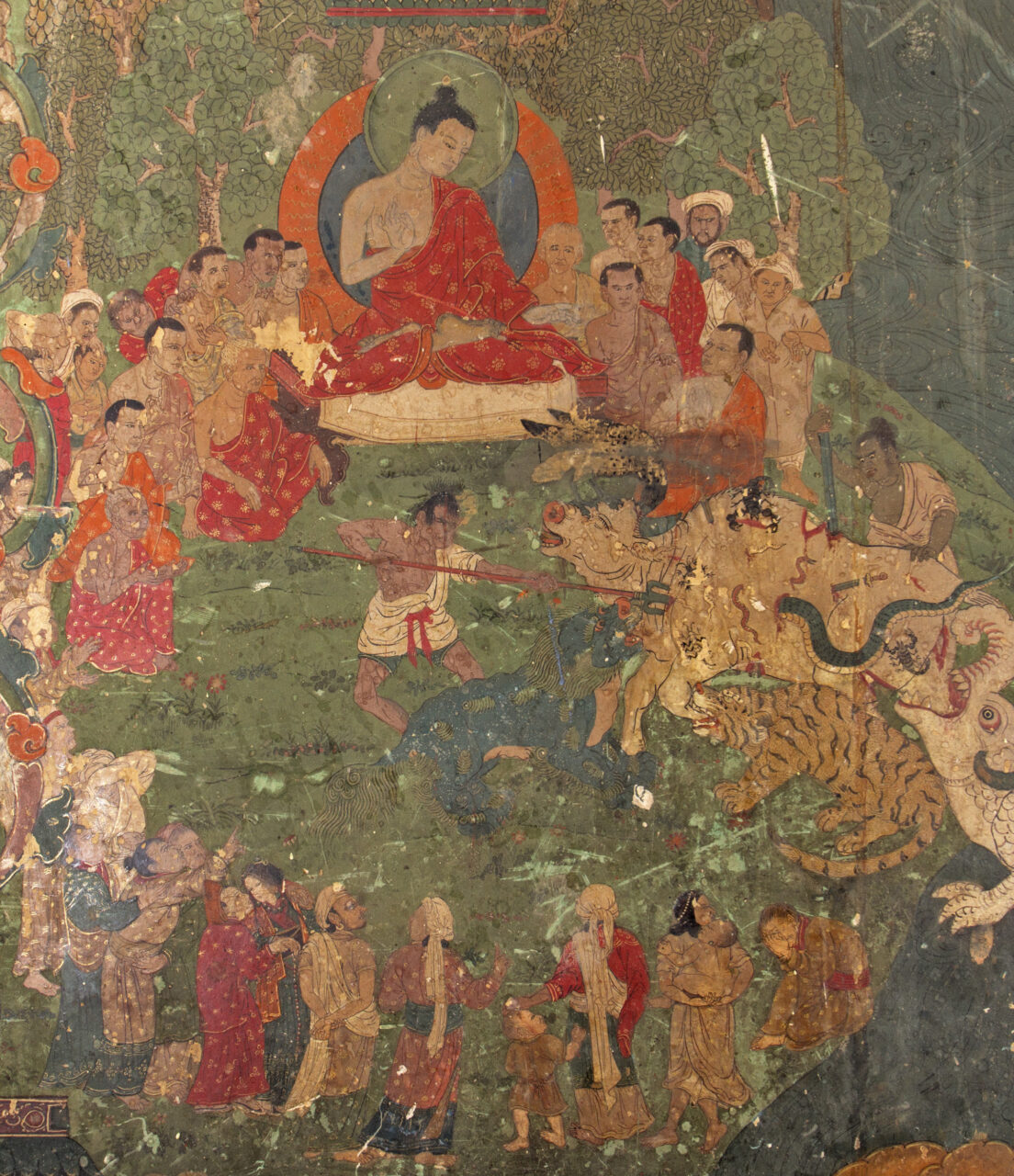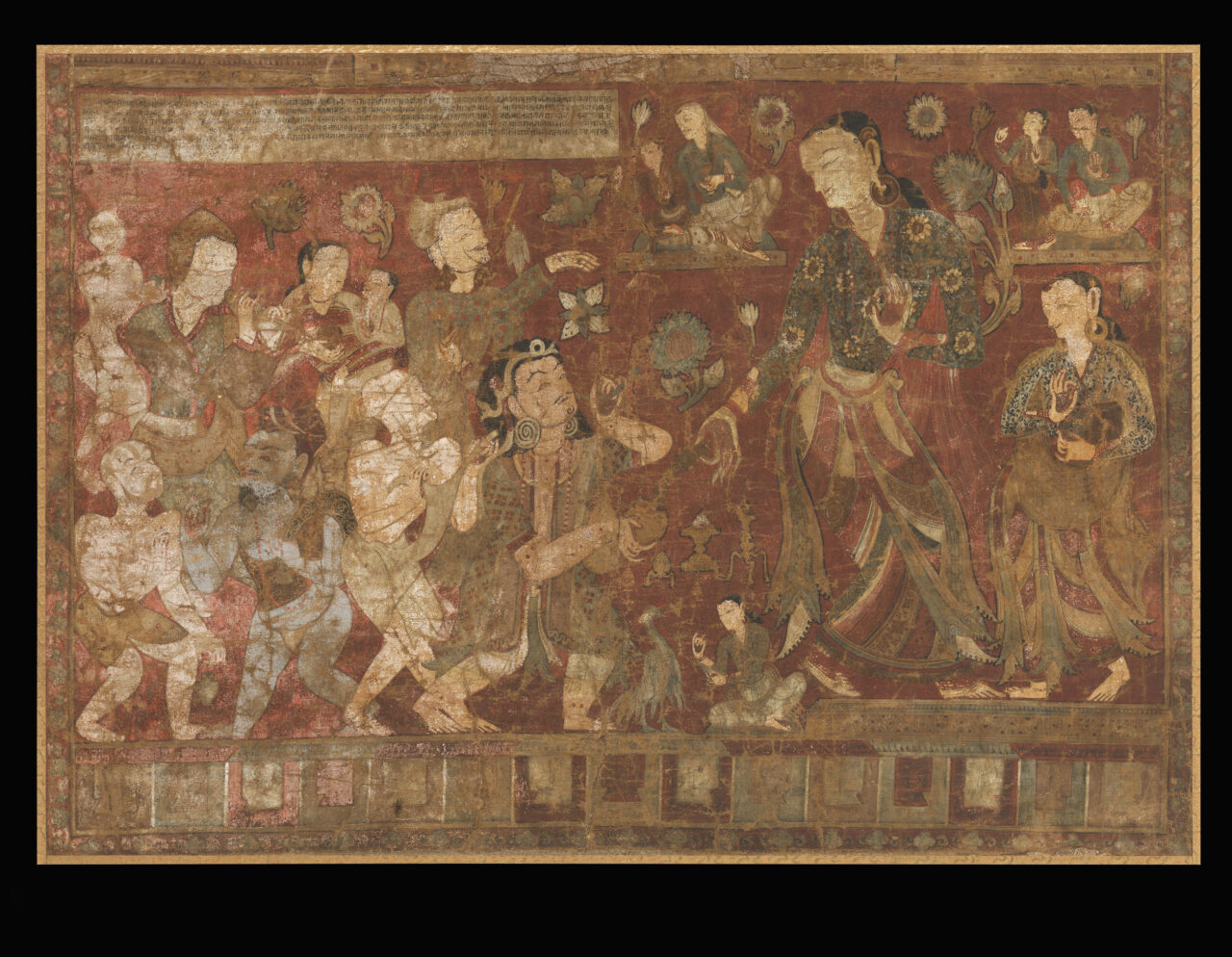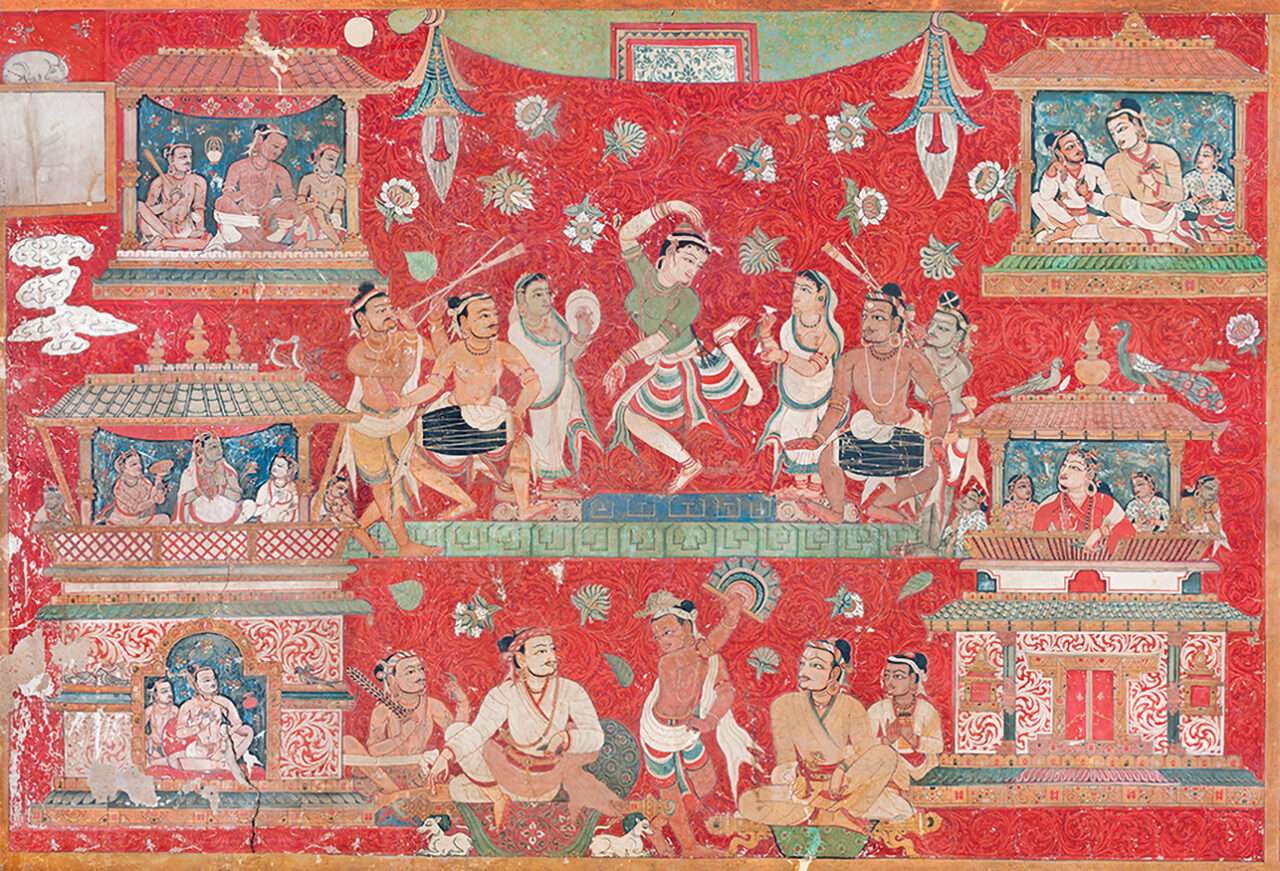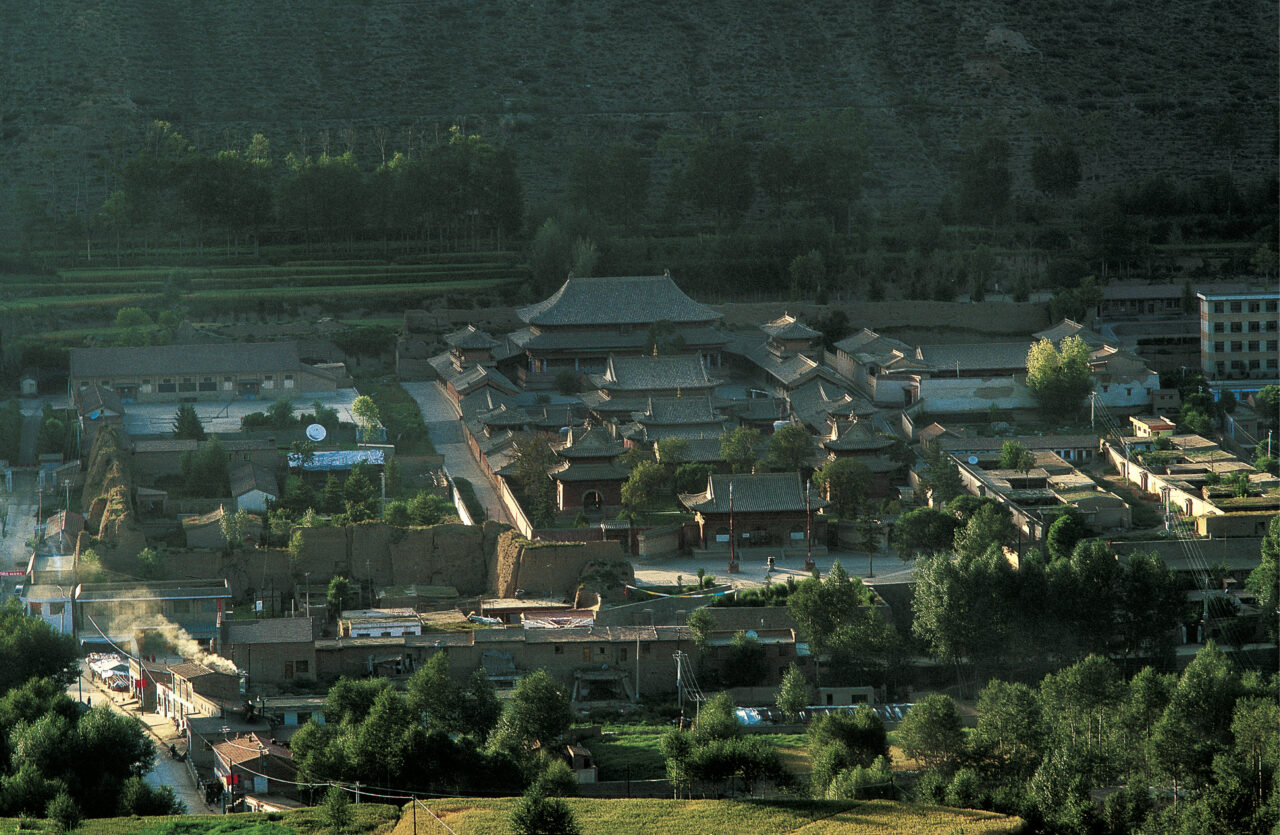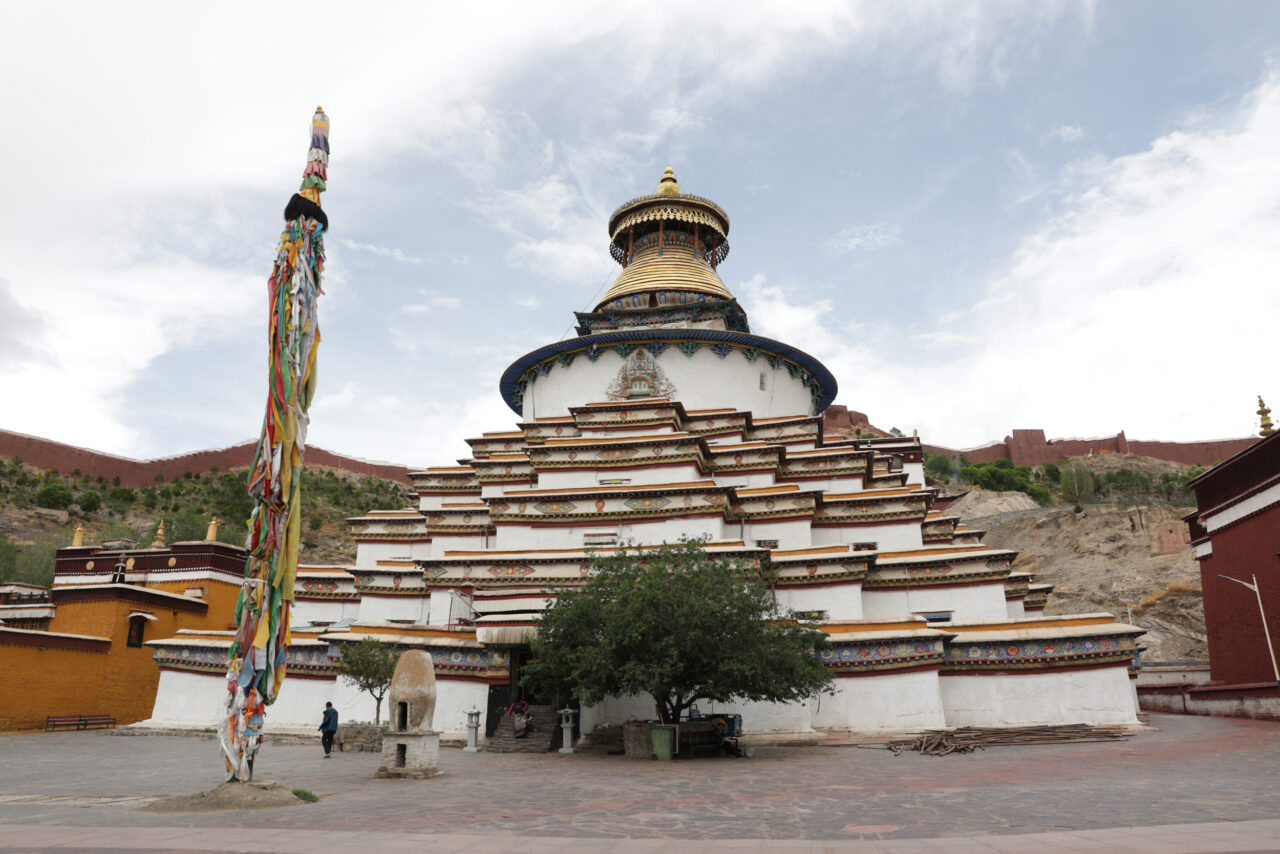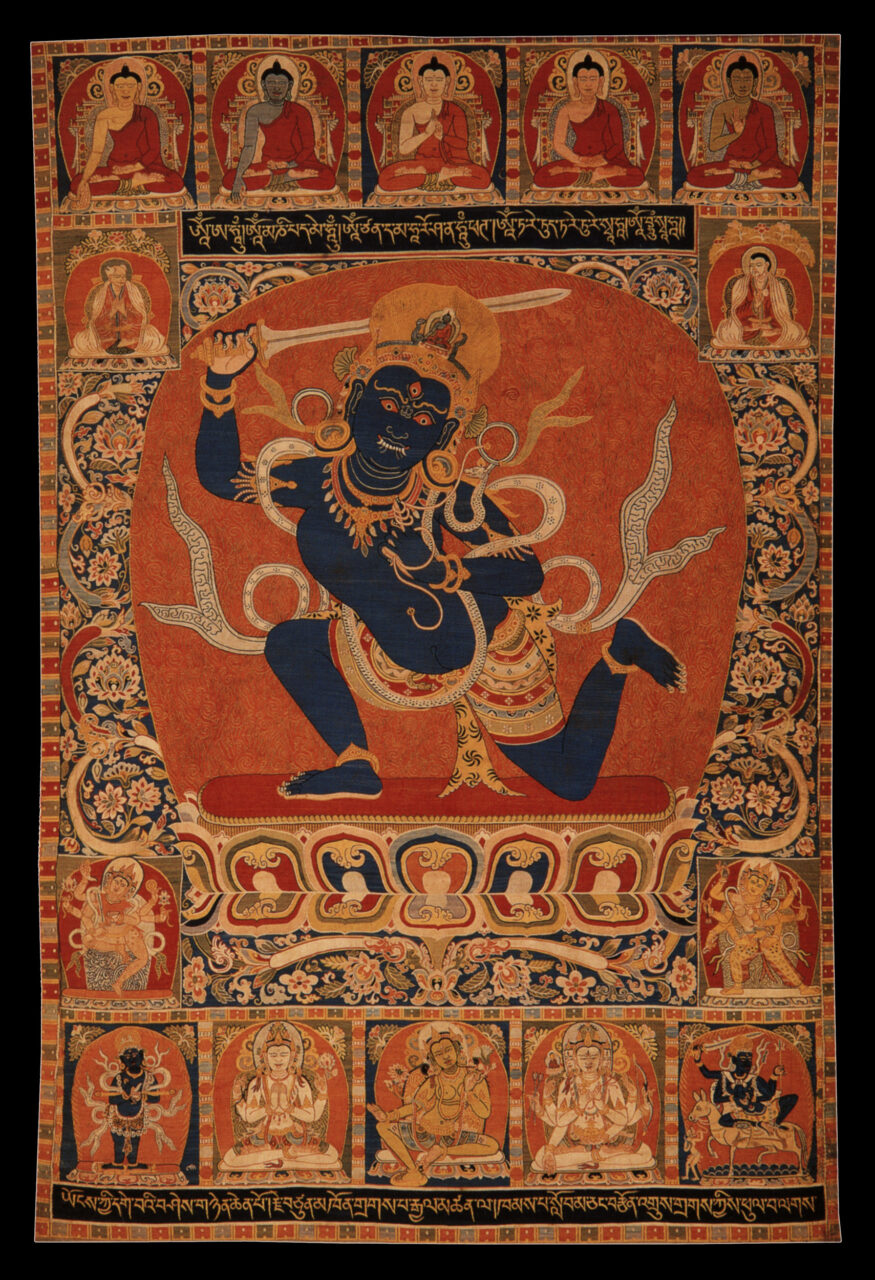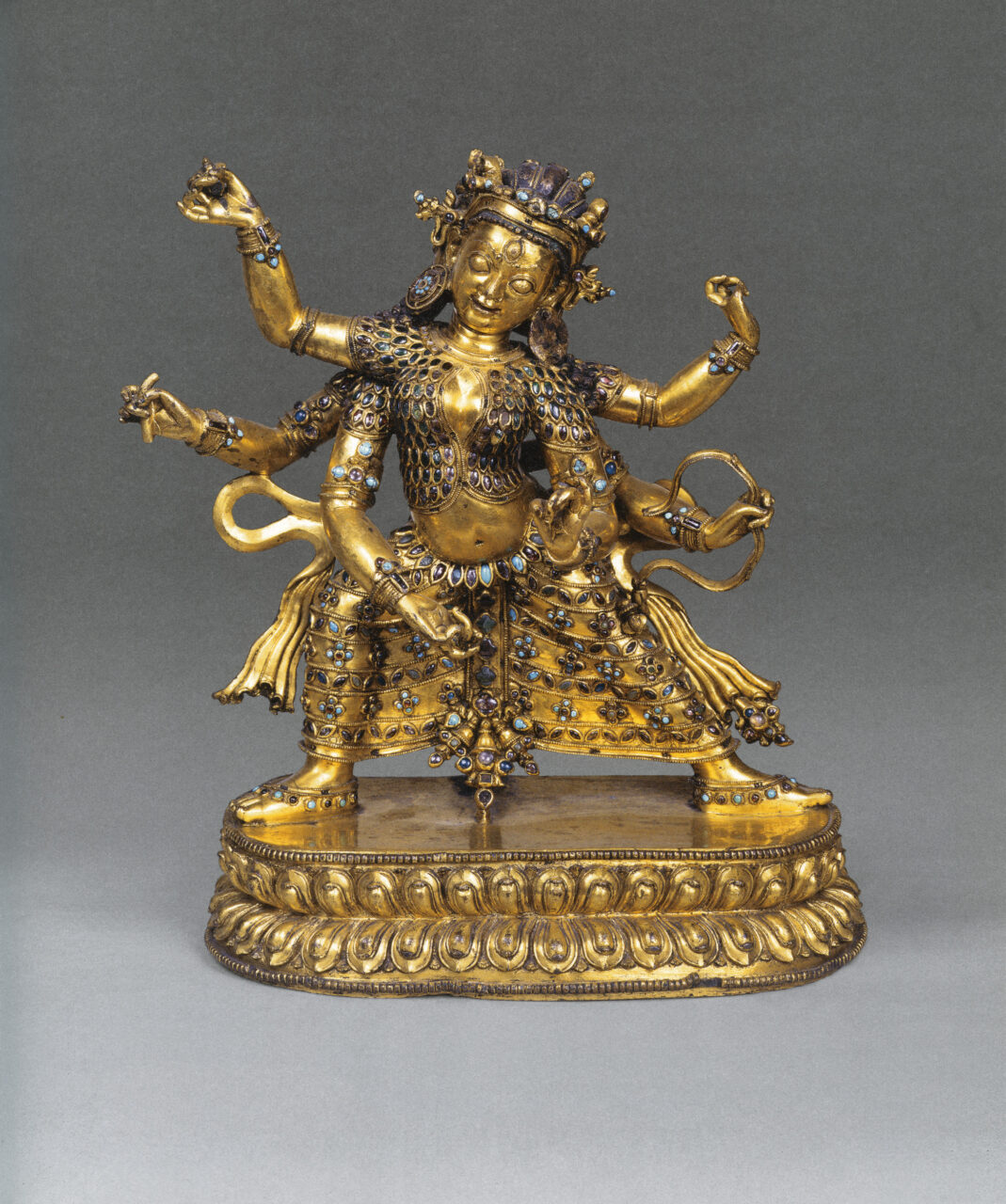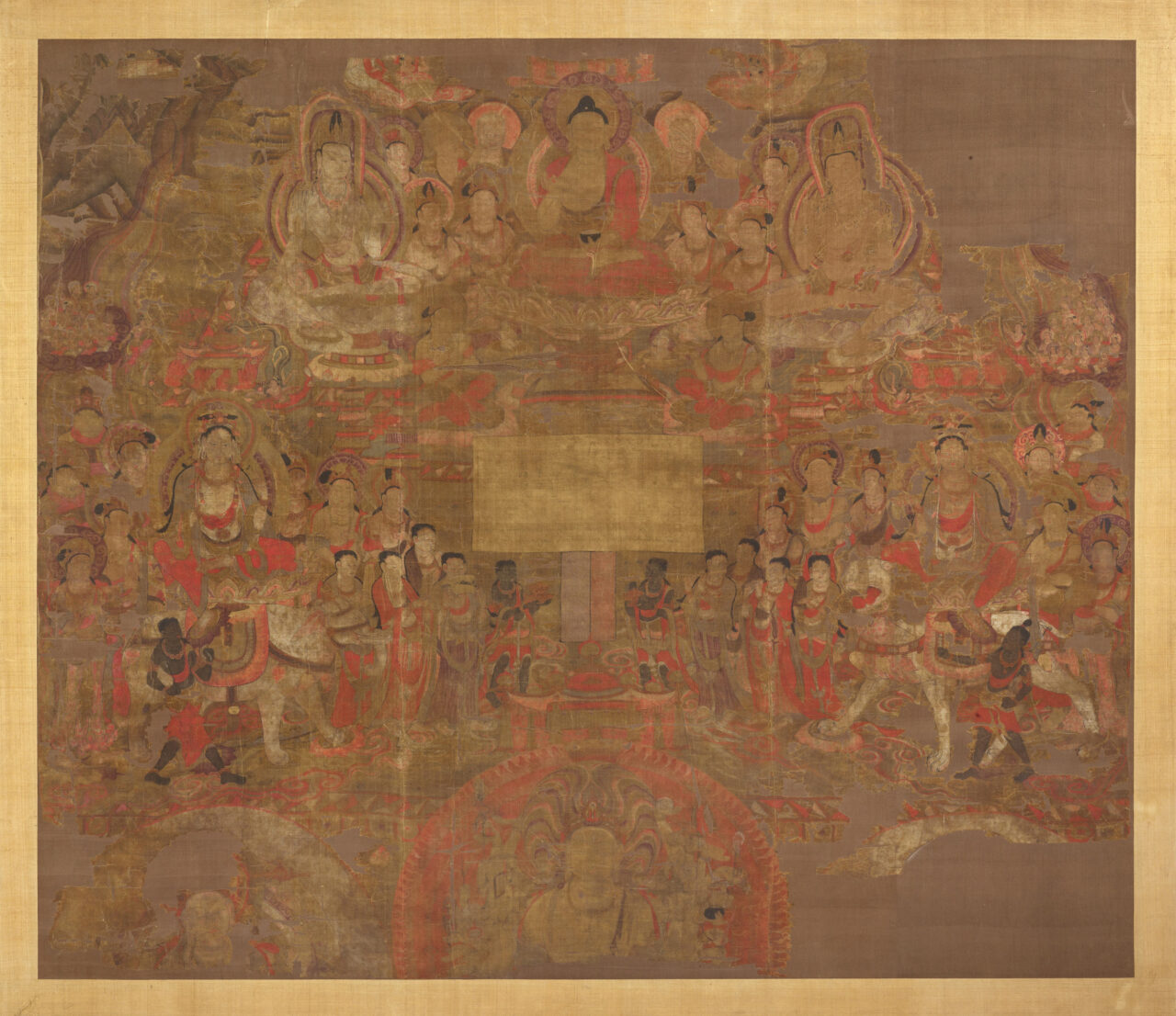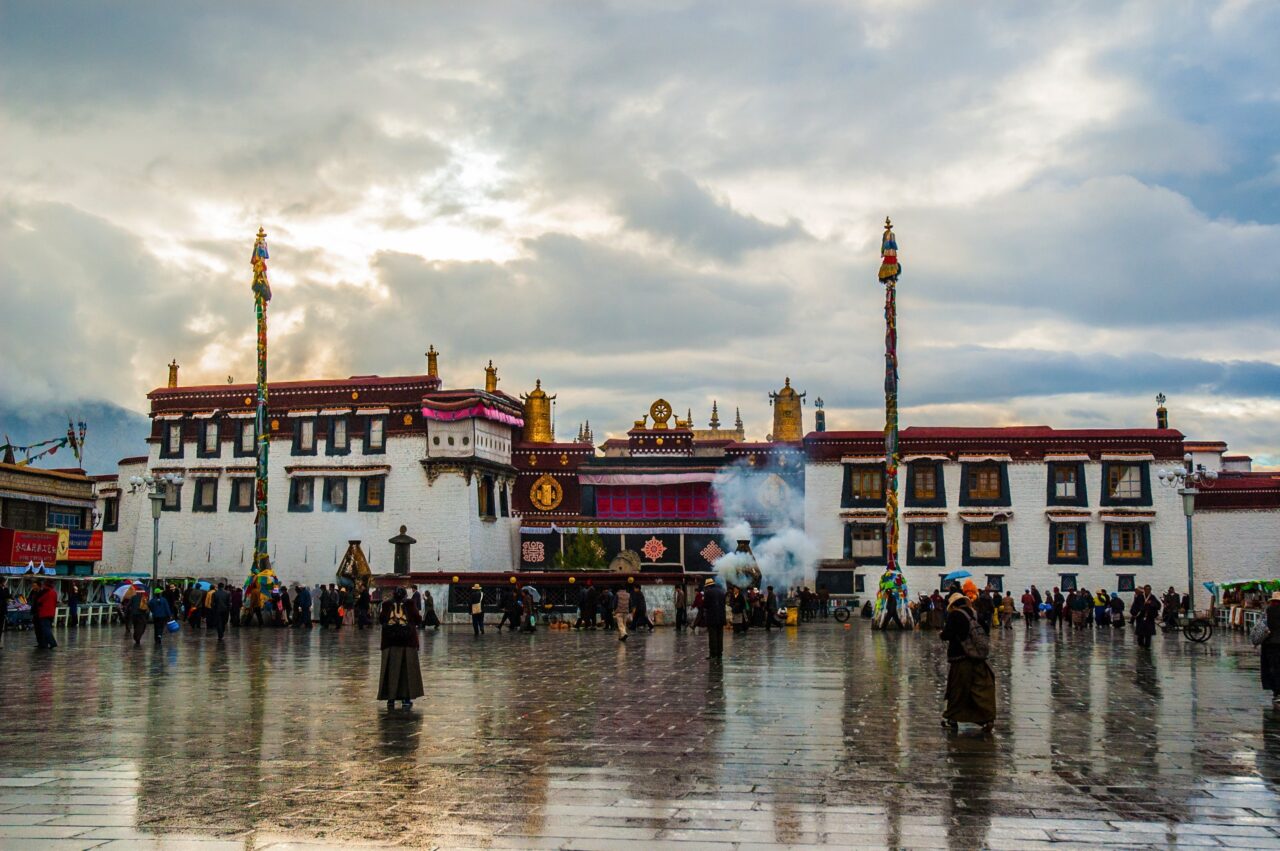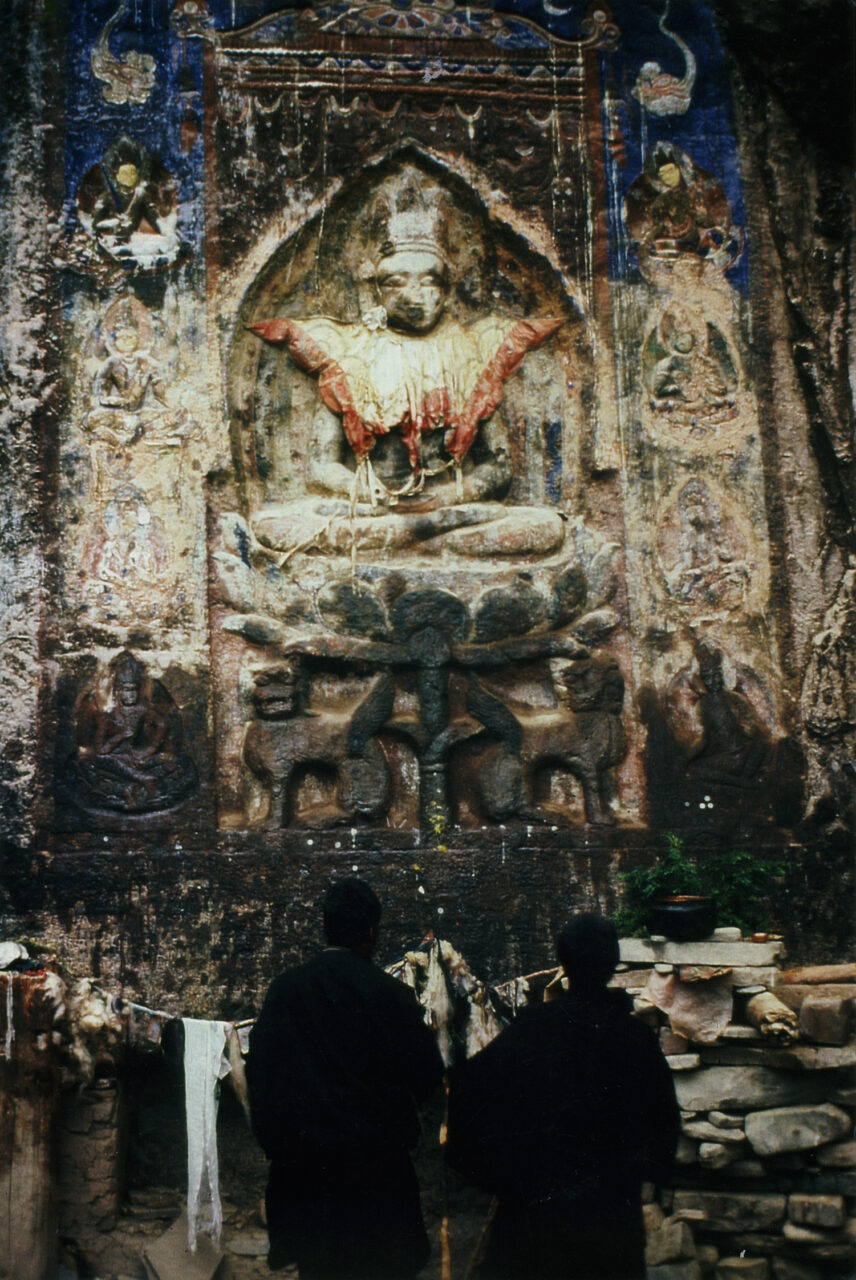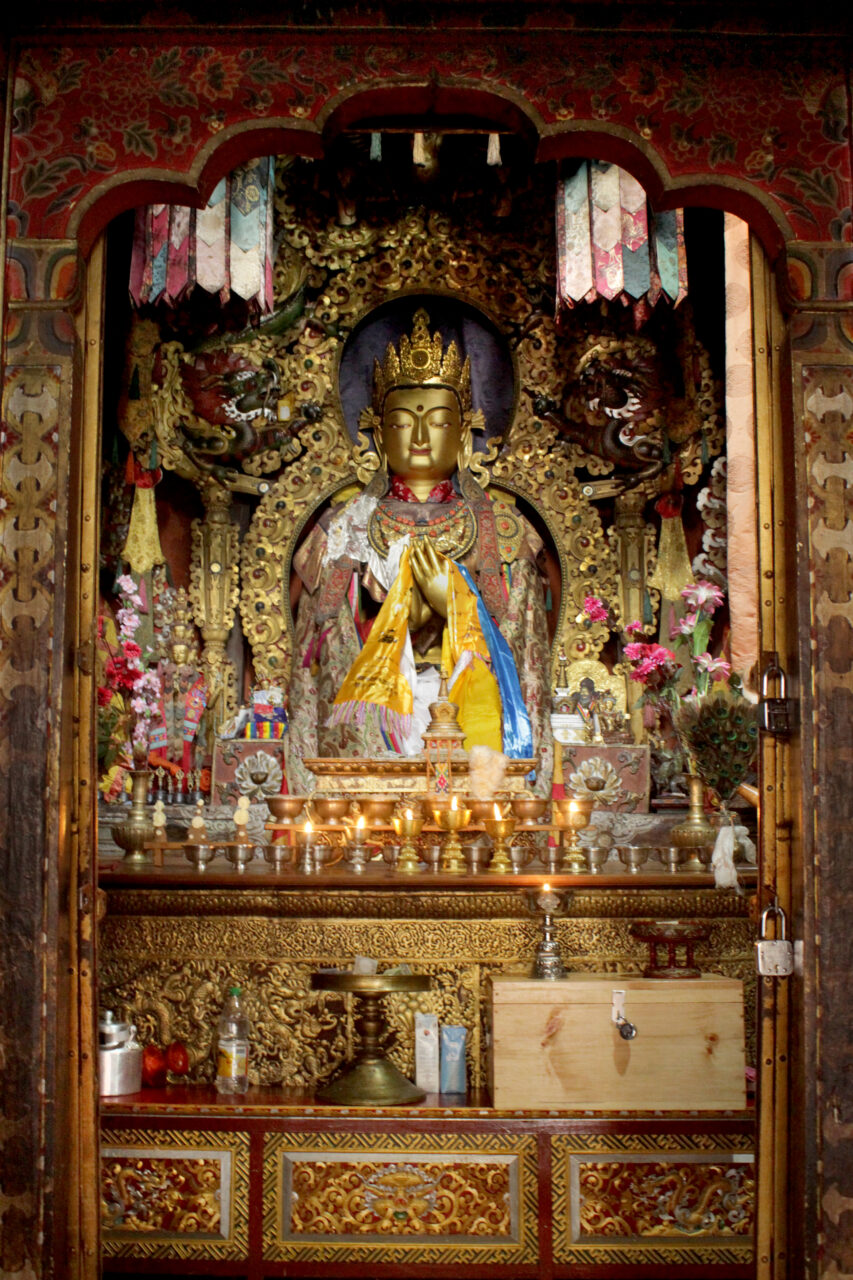In Buddhist context, donor is a person who contributes to or commissions a religious work of art. This act is intended to increase merit on behalf of the benefactor and is dedicated to the benefit of all. It is also usually done for a specific purpose, such as longevity, prosperity, or well-being; to advance religious practice; or to ensure a good rebirth of a deceased relative, teacher, or friend. A similar practice is also known in Hinduism and Bon.
The Encampment tradition is an artistic tradition associated with the court of the Karmapas, who traveled in large monastic tent encampments. The painting tradition was established by the artist Namkha Tashi (active ca. 1568–1599). No extant painting by the hand of Namkha Tashi has yet been reliably identified, but religious masters of the Karma Kagyu are said to have urged Namkha Tashi to follow Indian Buddhist models for the figures and Chinese painting for coloring and shading, naming models from the Yuan and Ming courts. The style was revived by Situ Panchen (1700–1774). Sometimes called the “New Encampment” style, these paintings are characterized by open airy landscapes of soft blue and green. The Encampment tradition also included a lesser-known sculptural tradition, founded by the artist Karma Sidrel (d. 1591/92).
The Kagyu are a major Later Diffusion tradition of Tibetan Buddhism. The Kagyu trace their lineages back to the Mahasiddhas, the great tantric masters of medieval India. The Kagyu are known for their yogic practices, as well as the teaching of Mahamudra, or the “Great Seal.” The Kagyu tradition includes many different branches, such as the Karma, Drukpa, Drigung, Tselpa, Pakmodru, and others. The most influential leaders of the Karma Kagyu are the Karmapas, a tulku lineage associated with that Kagyu branch. In Bhutan, the Drukpa Kagyu tradition serves as the state religion. A follower of the Kagyu is called a Kagyupa.
In Buddhism, merit is accumulated positive karma, or positive actions, that lead to positive results, such as better rebirths. Buddhists gain merit by reciting mantras, donating to monasteries and those in need, performing pilgrimages, commissioning artworks, reproducing and reciting Buddhist texts, and other deeds with good intentions. It is believed that merit can also be transferred to others through rituals performed to gain merit for deceased family members help them achieve a better rebirth. Merit making is an important motivation for positive ritual action, and is a prerequisite for success of religious and even secular activity.
Historically, Tibetan Buddhism refers to those Buddhist traditions that use Tibetan as a ritual language. It is practiced in Tibet, Mongolia, Bhutan, Ladakh, and among certain groups in Nepal, China, and Russia and has an international following. Buddhism was introduced to Tibet in two waves, first when rulers of the Tibetan Empire (seventh to ninth centuries CE), embraced the Buddhist faith as their state religion, and during the second diffusion (late tenth through thirteenth centuries), when monks and translators brought in Buddhist culture from India, Nepal, and Central Asia. As a result, the entire Buddhist canon was translated into Tibetan, and monasteries grew to become centers of intellectual, cultural, and political power. From the end of the twelfth century, Tibetans were exporting their own Buddhist traditions abroad. Tibetan Buddhism integrates Mahayana teachings with the esoteric practices of Vajrayana, and includes those developed in Tibet, such as Dzogchen, as well as indigenous Tibetan religious practices focused on local gods. Historically major traditions of Tibetan Buddhism are Nyingma, Kagyu, Sakya, and Geluk.
In Tibetan Buddhism, a tulku is a lineage of reincarnated lamas. Buddhists believe that sentient beings pass through infinite lives in samsara, reborn in new bodies after each death. Certain highly advanced practitioners are able to control this process, choosing their reincarnation. From the thirteenth century onward, this process became institutionalized in Tibet as a formal means of succession. When a tulku dies, a special team of monks and close disciples performs divinations and other tests to locate a child, who is then enthroned as the new incarnation of the lineage. Over the centuries, many of these lineages amassed immense estates (labrang), and became extremely powerful and prestigious within Tibetan and Mongol society. Important tulku lineages include the Karmapas, the Dalai Lamas, the Panchen Lamas, and the Jibzundambas.




